FOTO'S WORDEN LADEN ...
Huis en eengezinswoning te koop — Torrão
EUR 3.000.000
Huis en eengezinswoning (Te koop)
Referentie:
EDEN-T95135113
/ 95135113
Referentie:
EDEN-T95135113
Land:
PT
Stad:
Marco De Canaveses
Categorie:
Residentieel
Type vermelding:
Te koop
Type woning:
Huis en eengezinswoning
Omvang woning:
1.300 m²
Omvang perceel:
416.936 m²
Kamers:
15
Slaapkamers:
12
Badkamers:
3


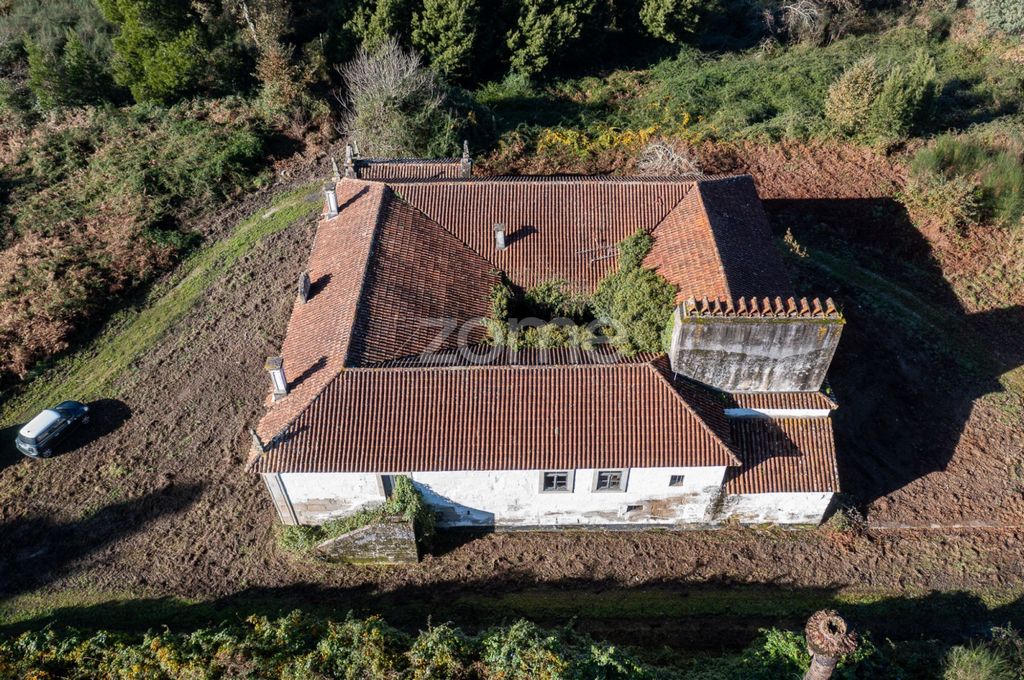

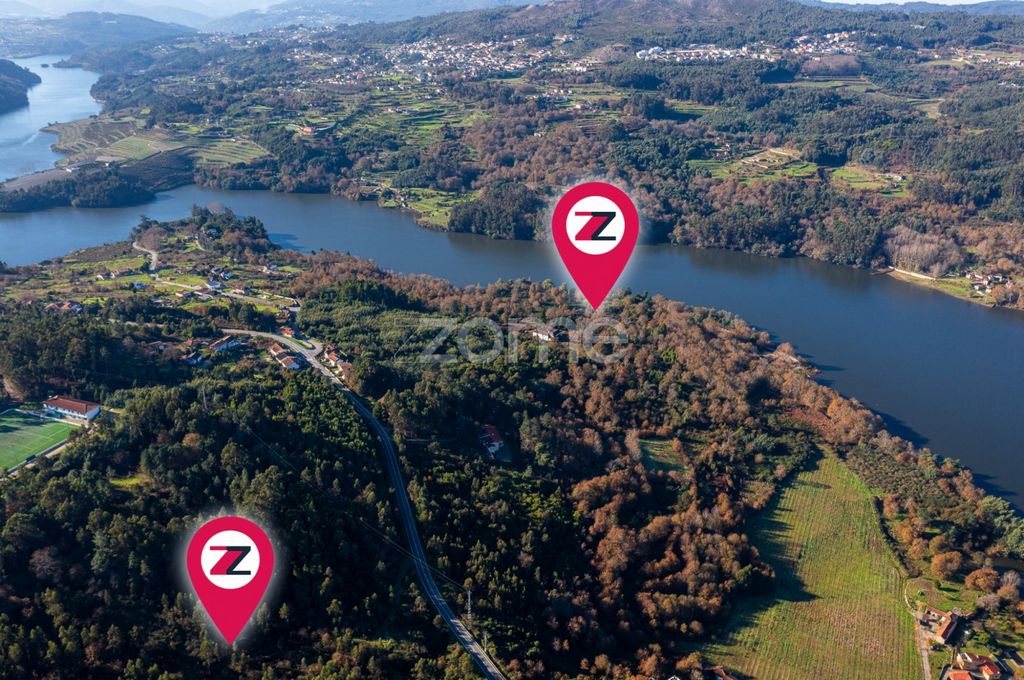



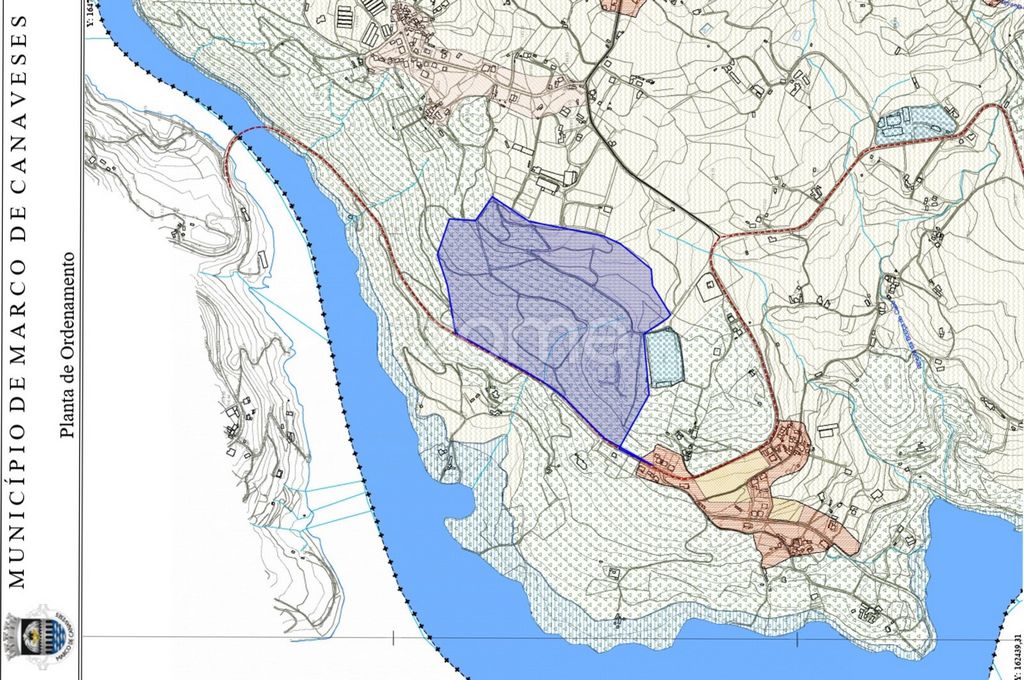
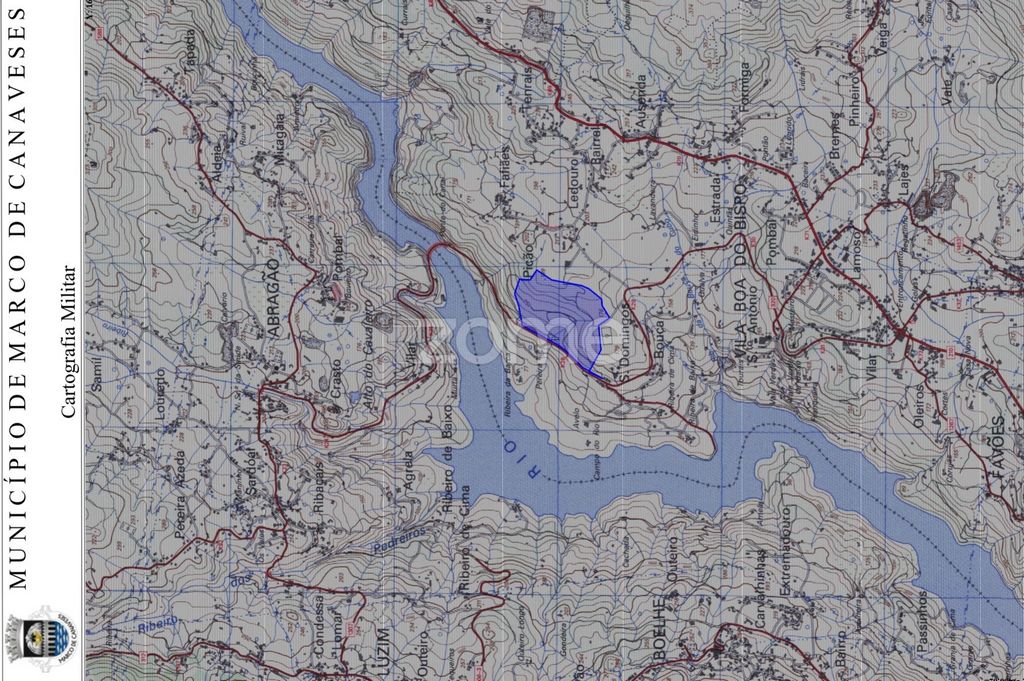
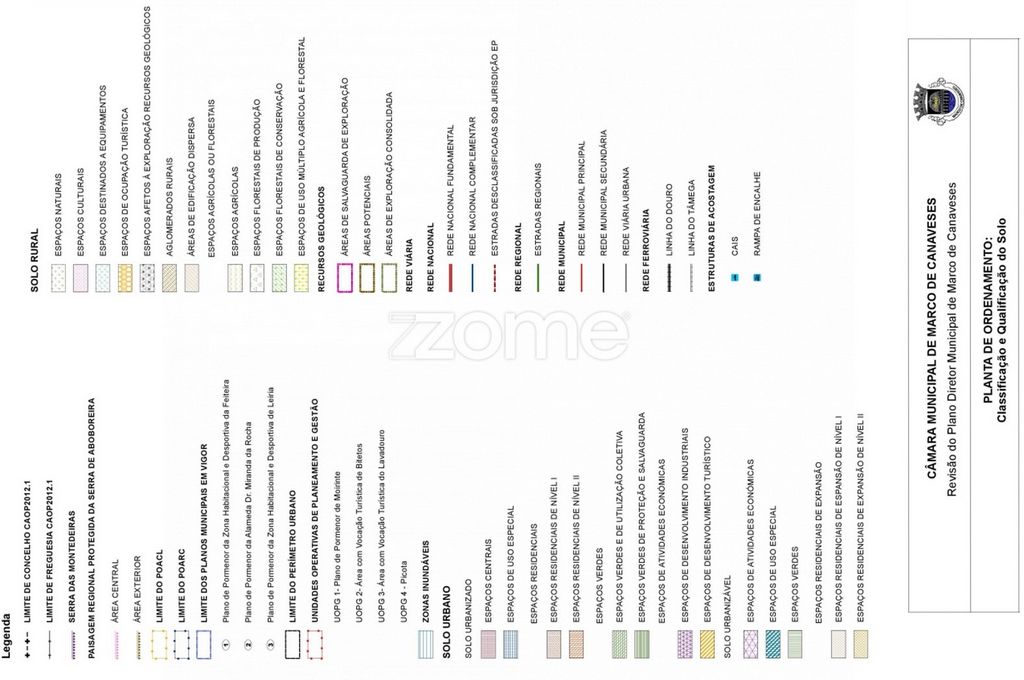
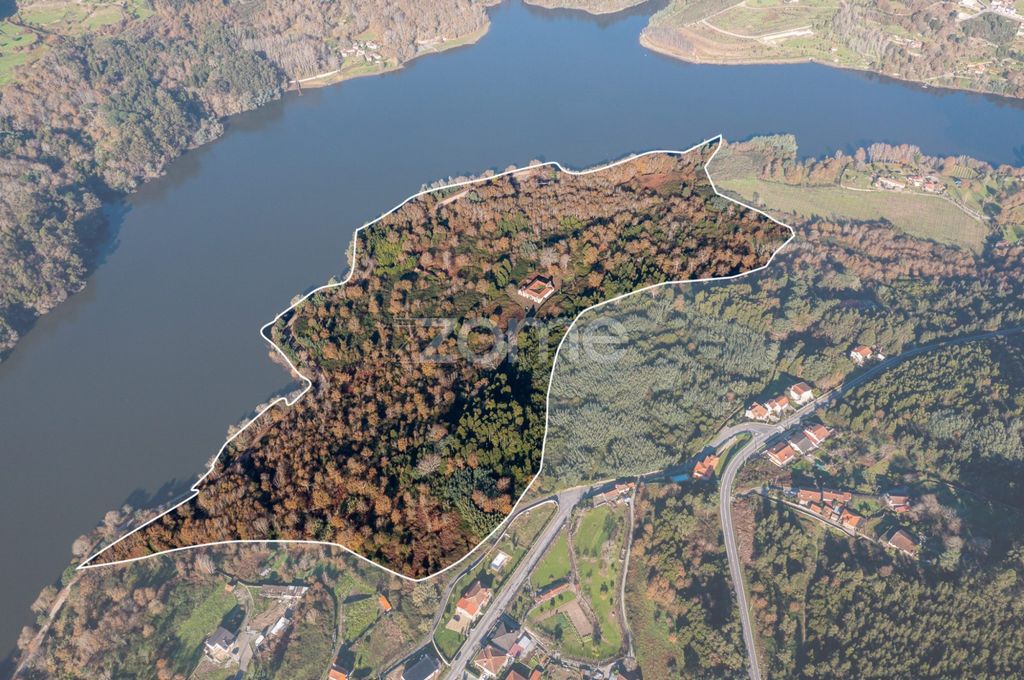
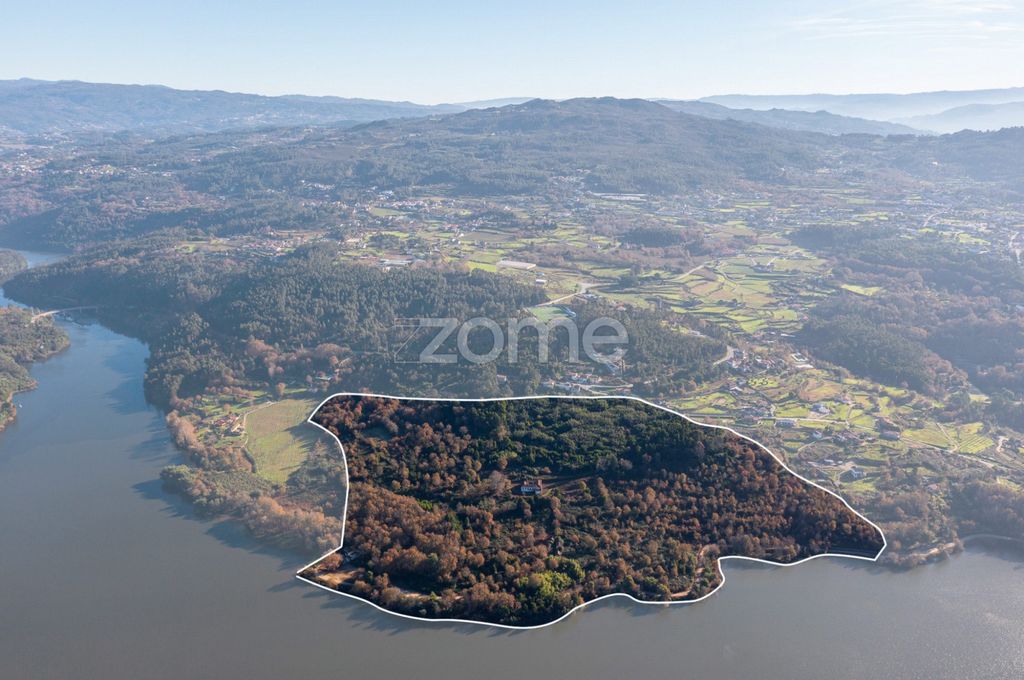
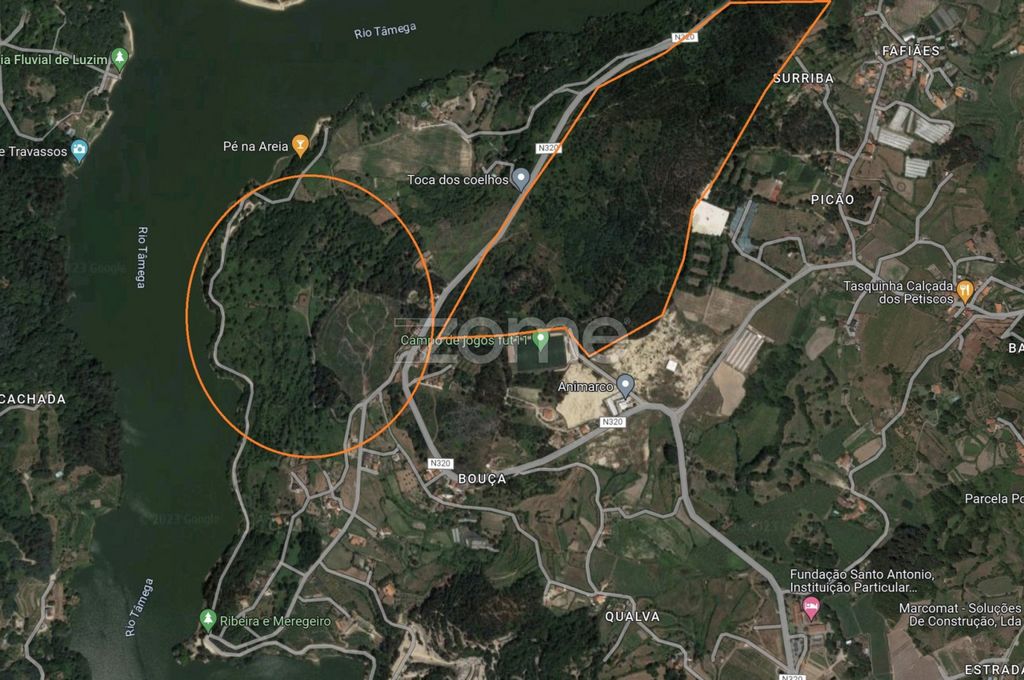

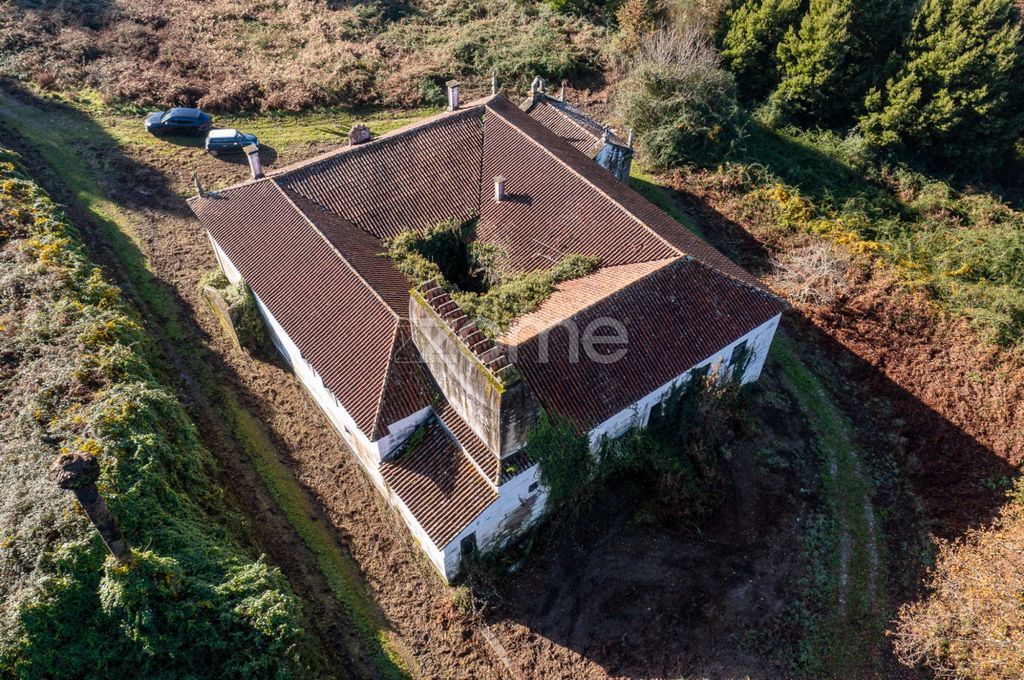

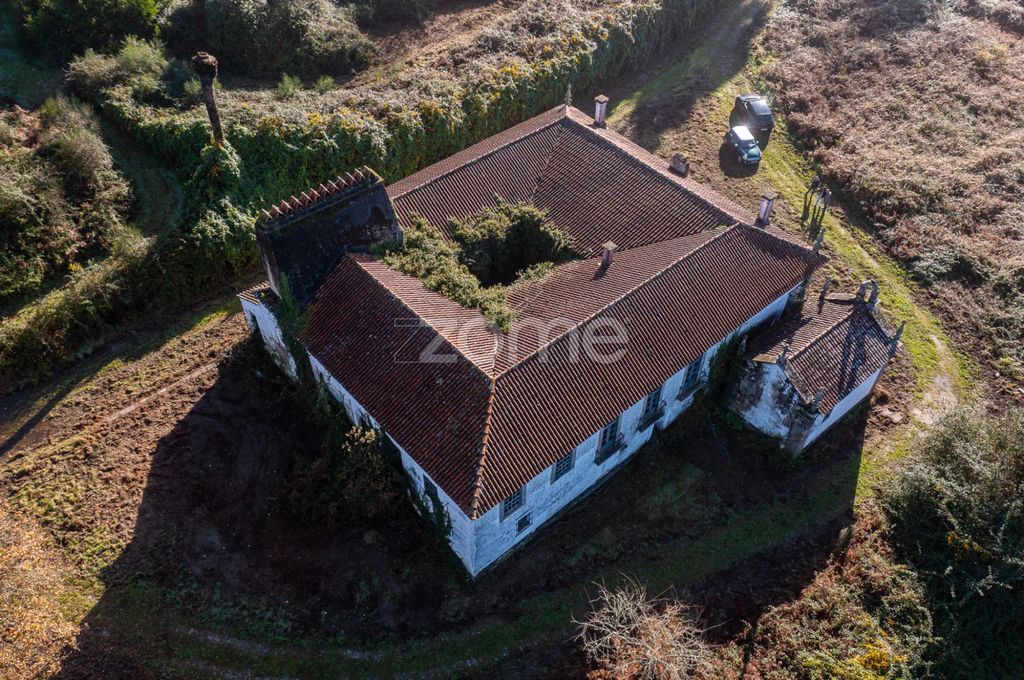

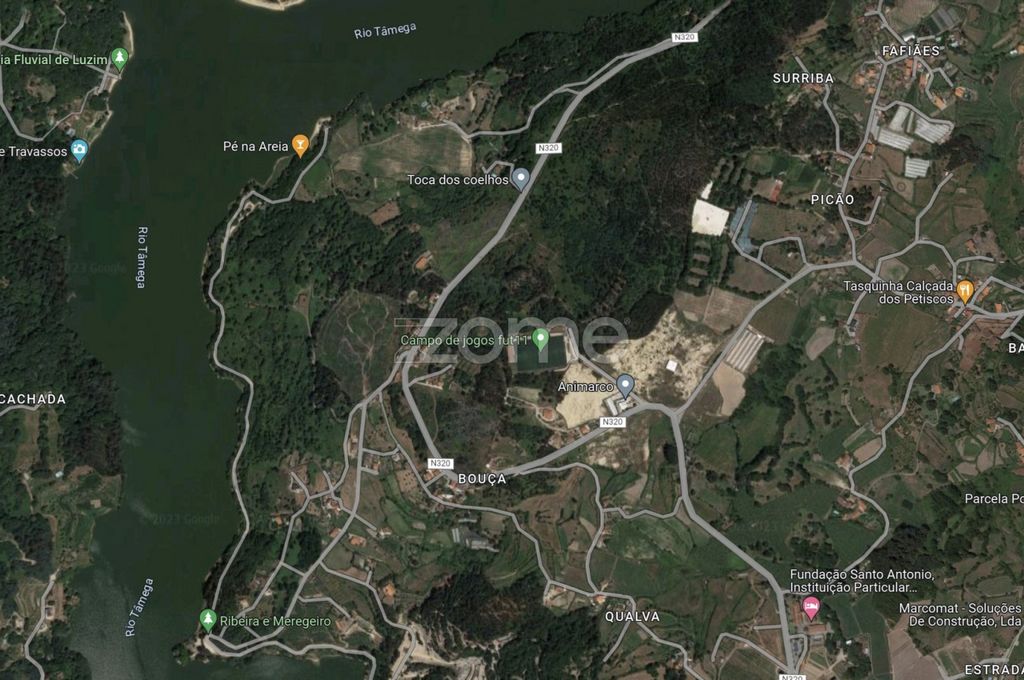

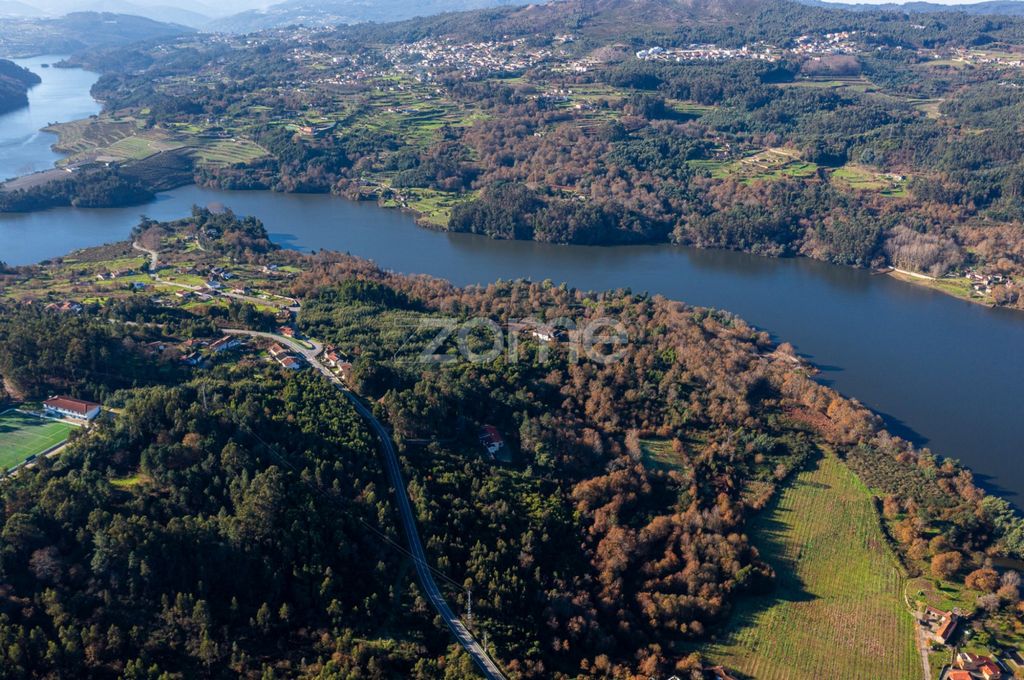
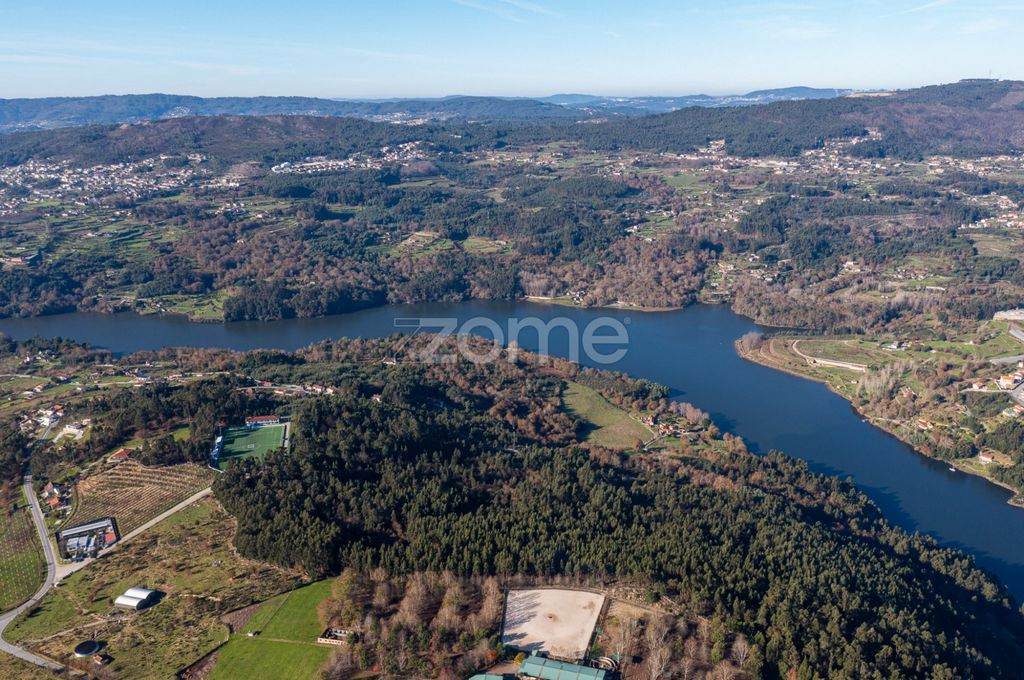
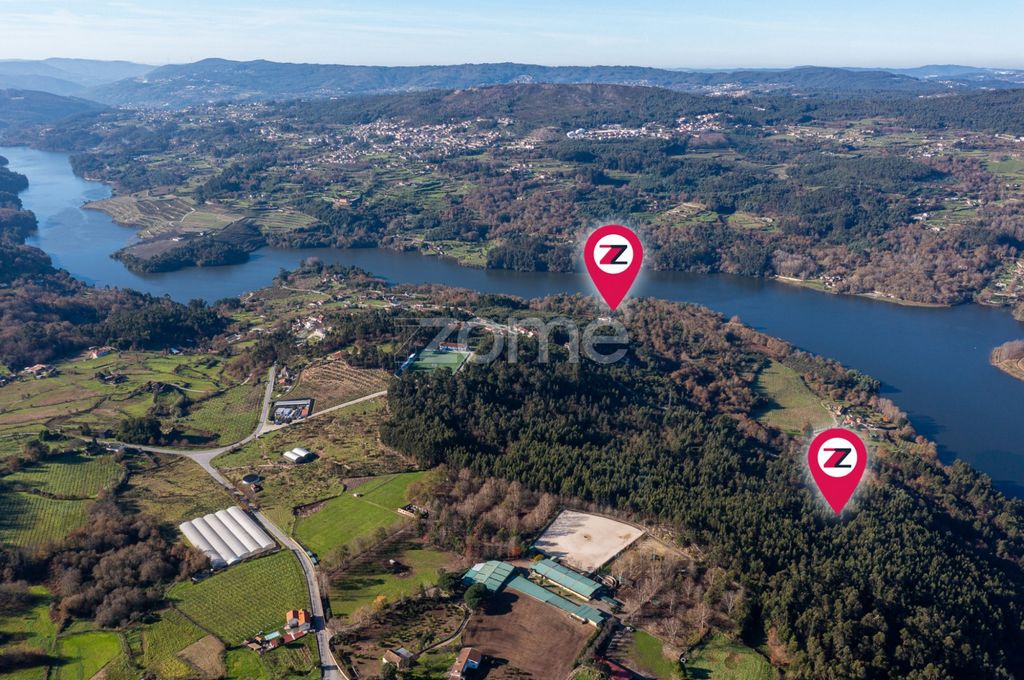
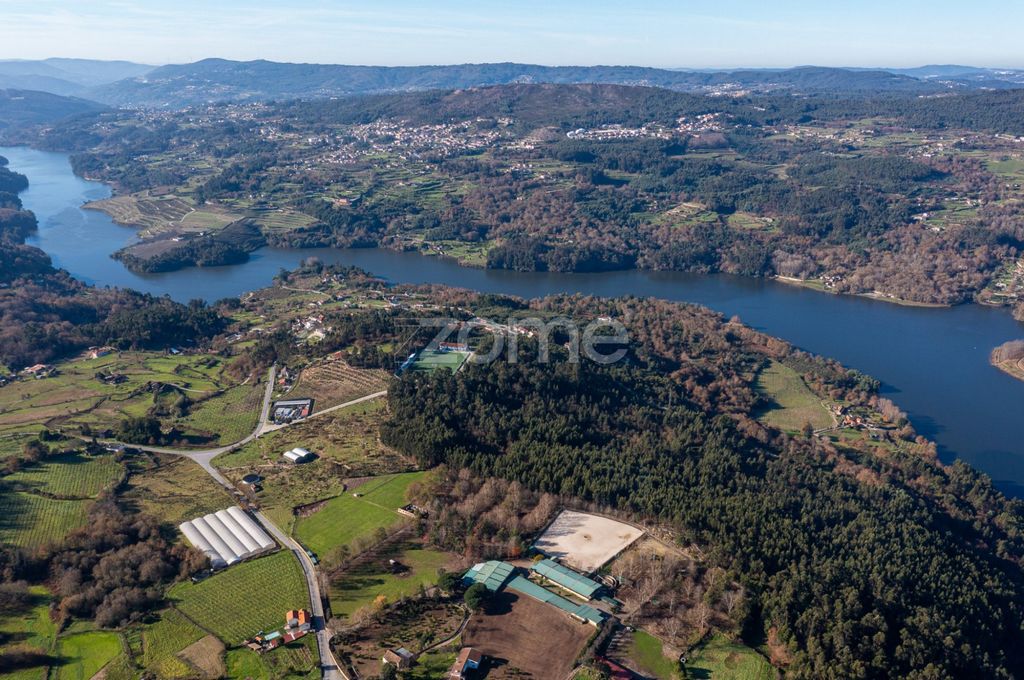

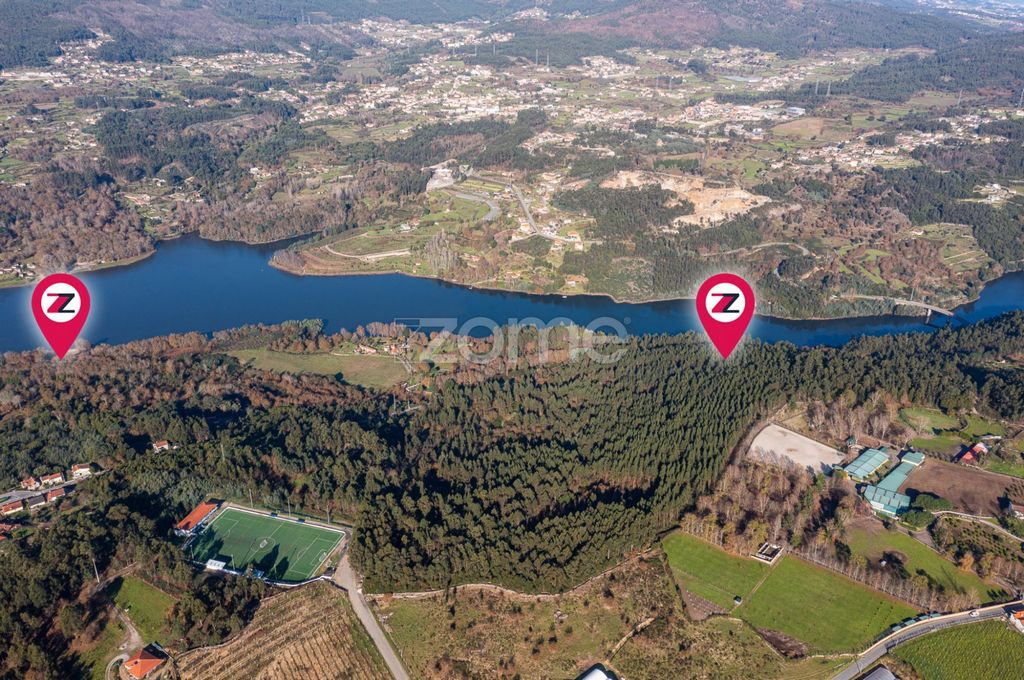

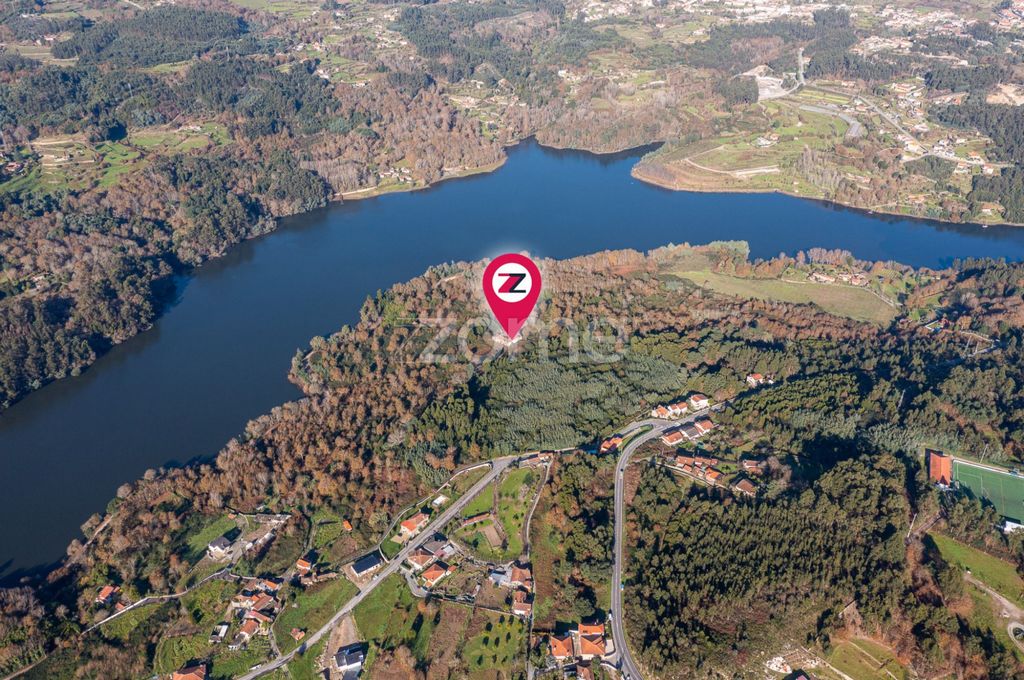
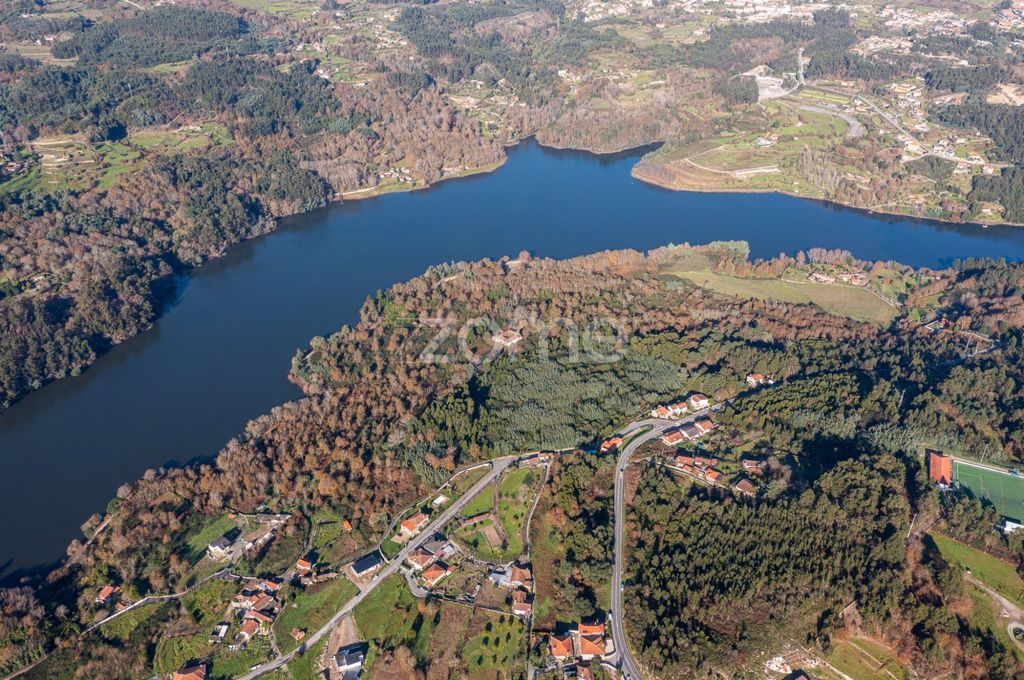
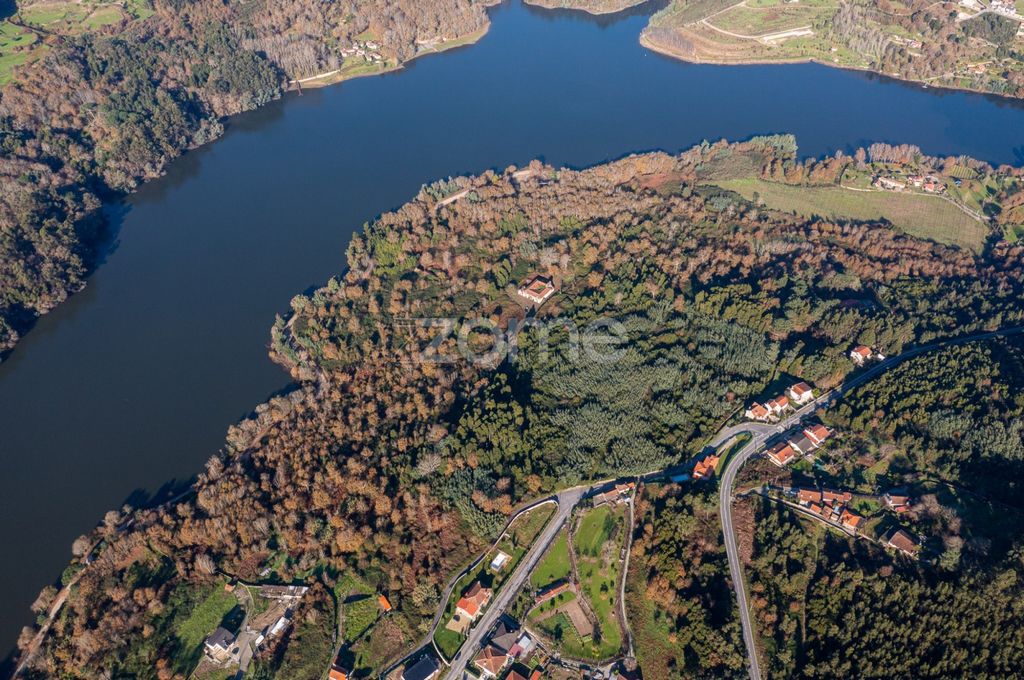
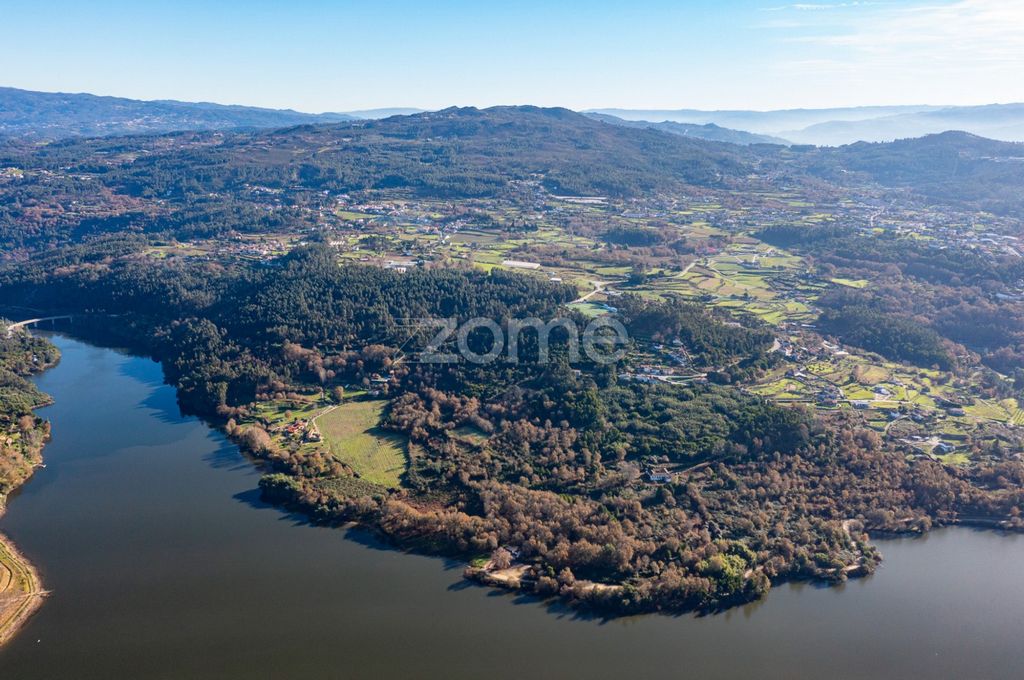
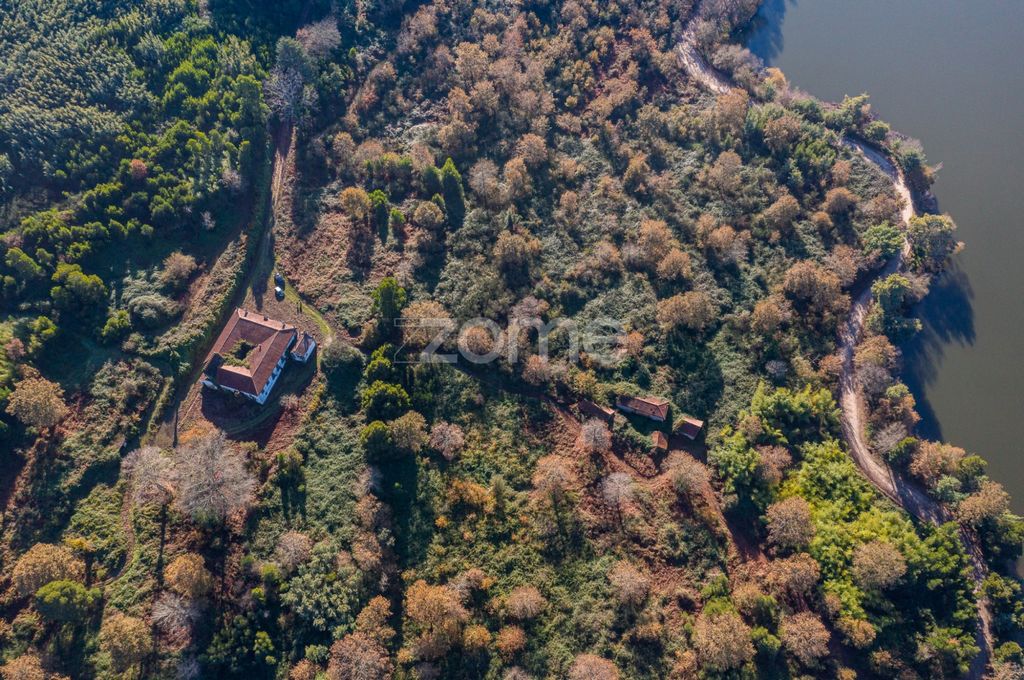
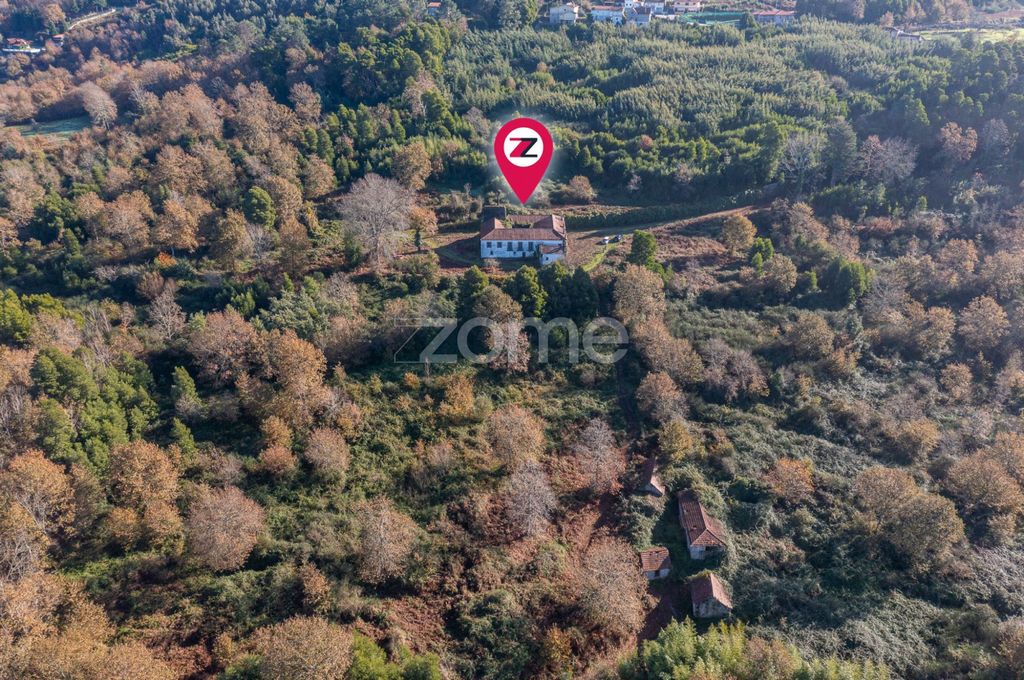

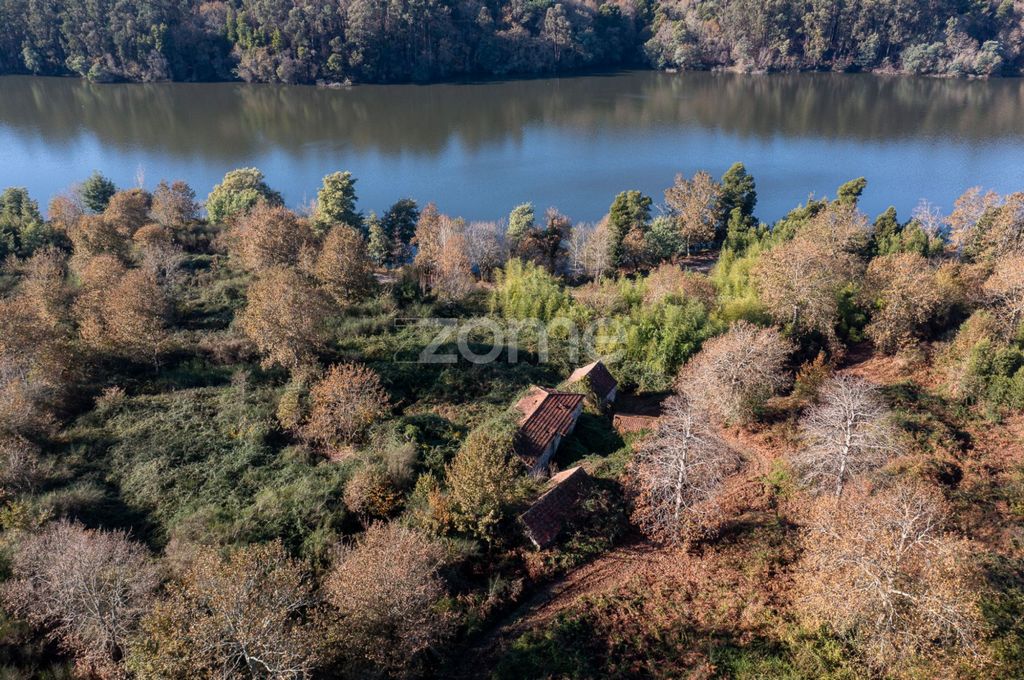
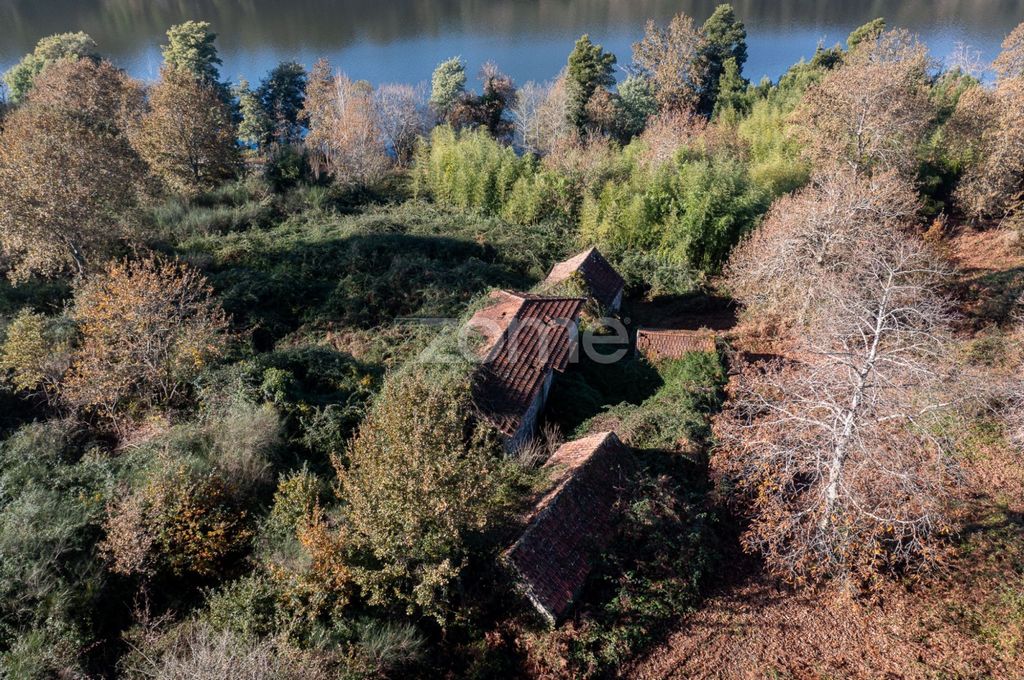
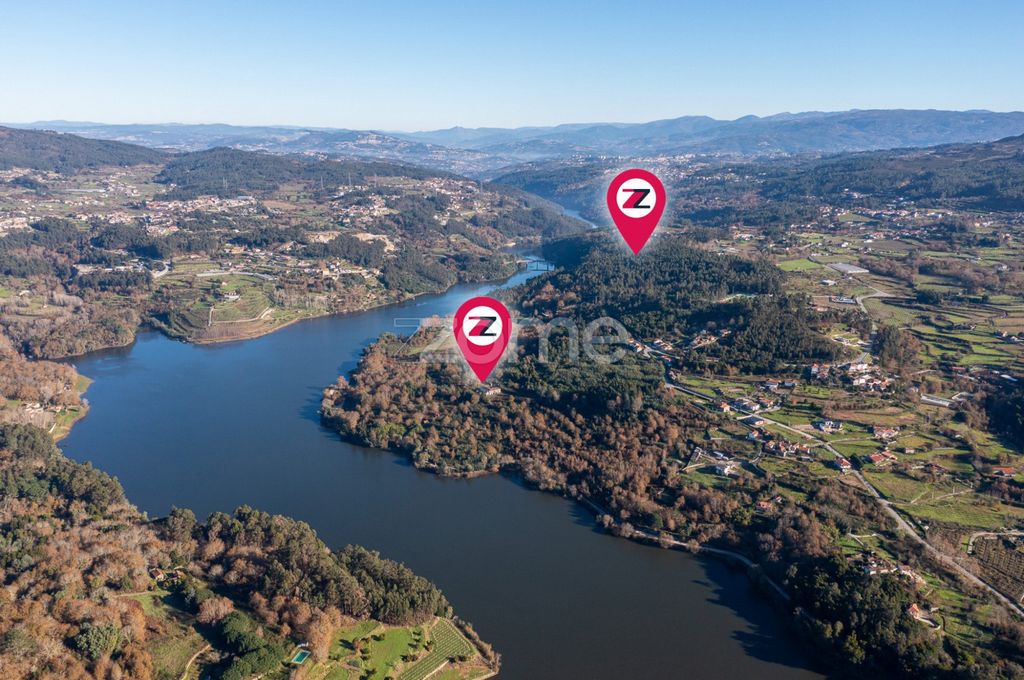

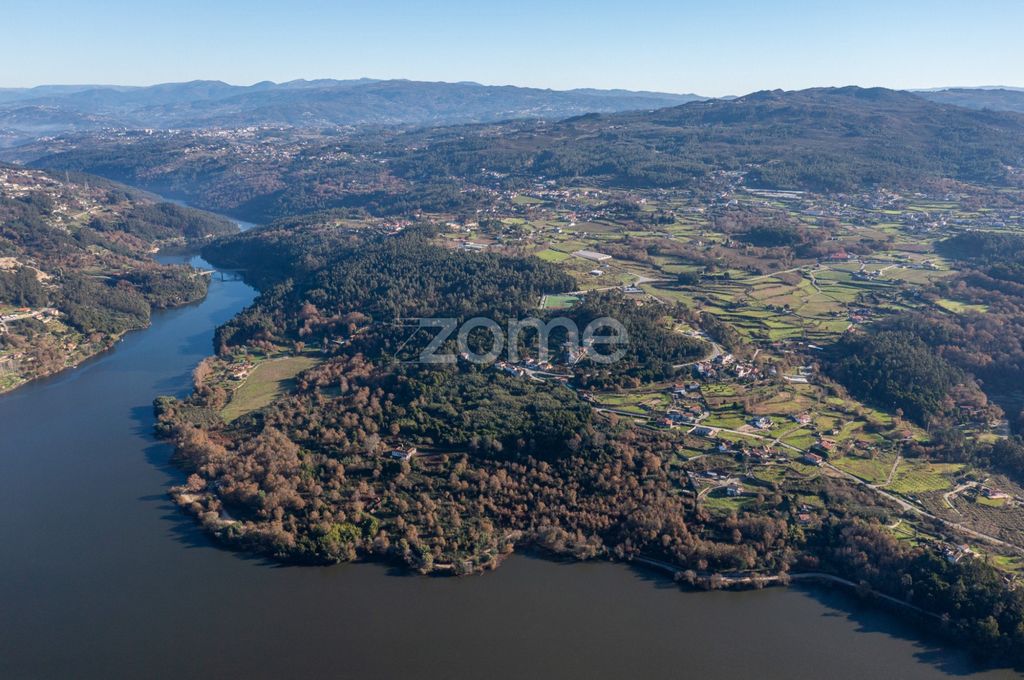
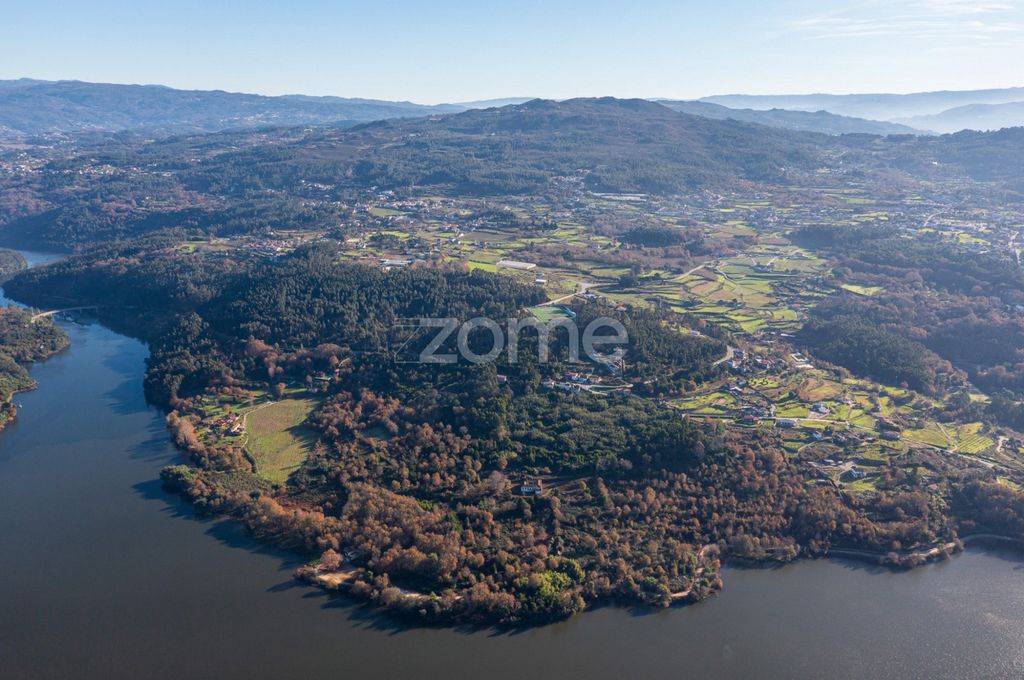
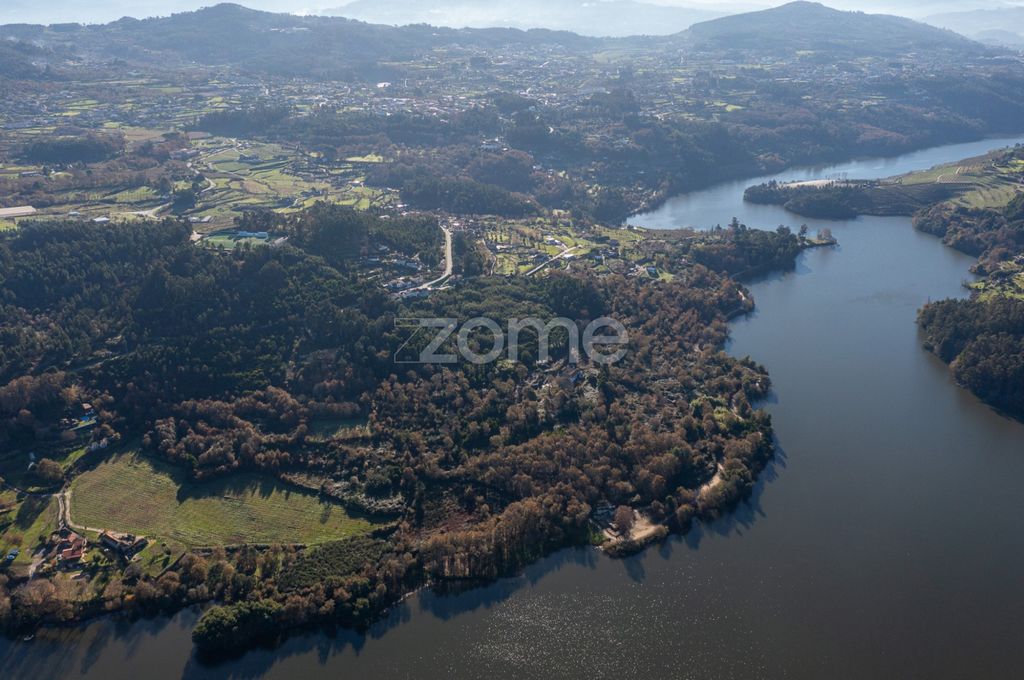
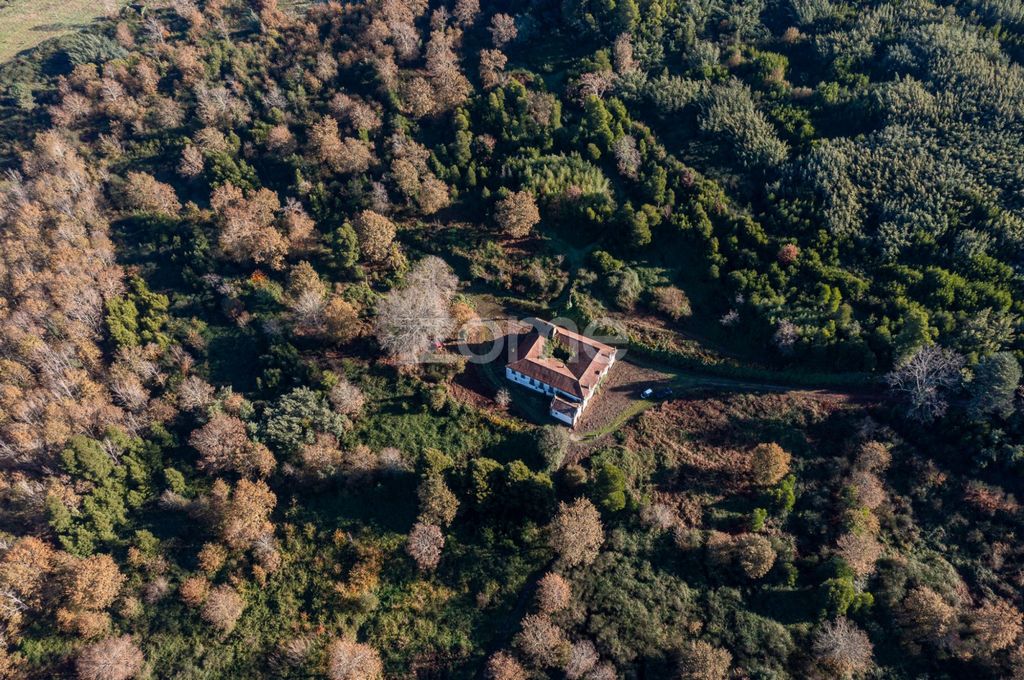

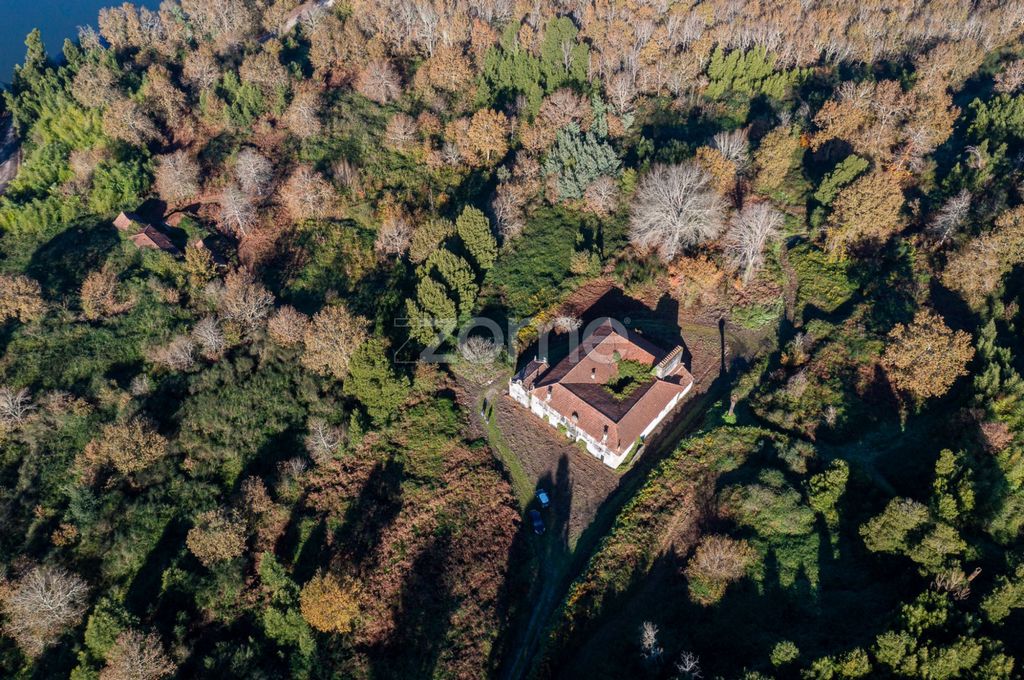

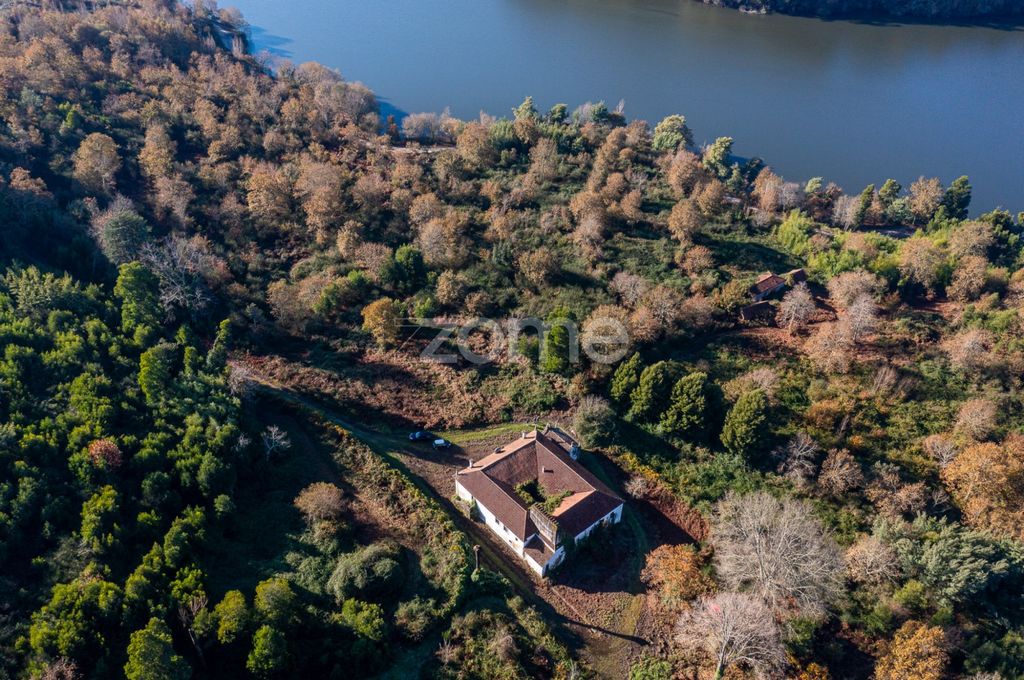

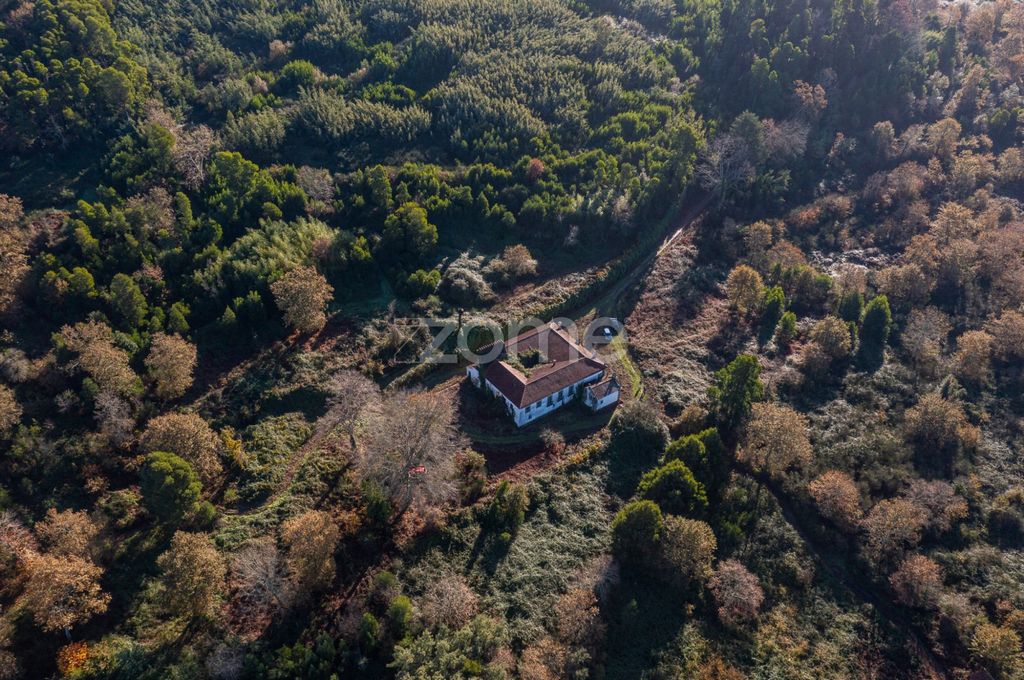
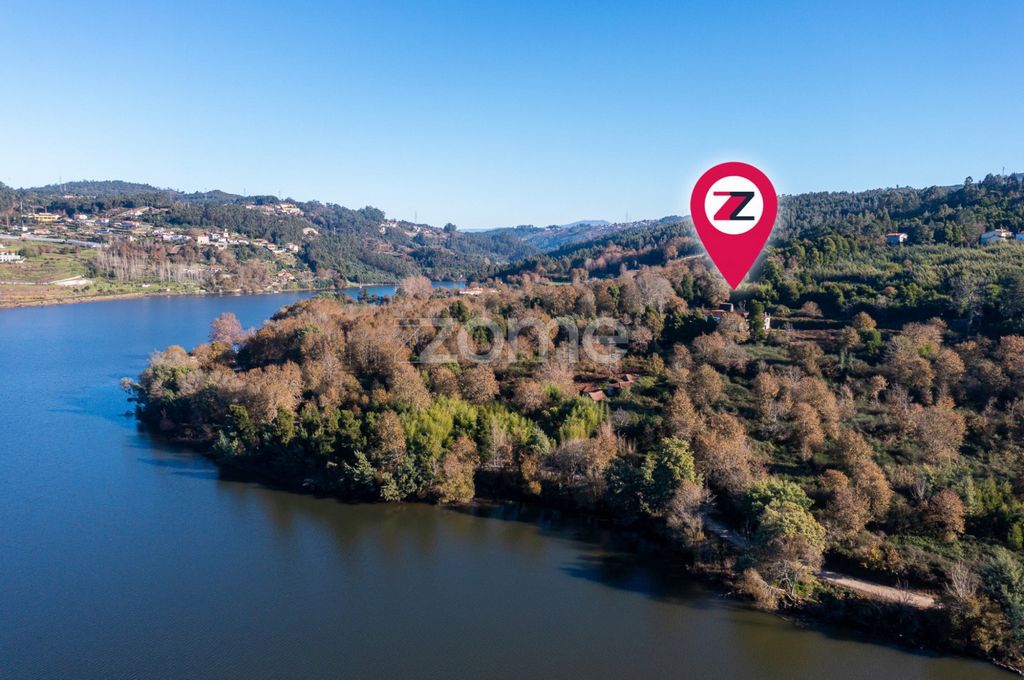
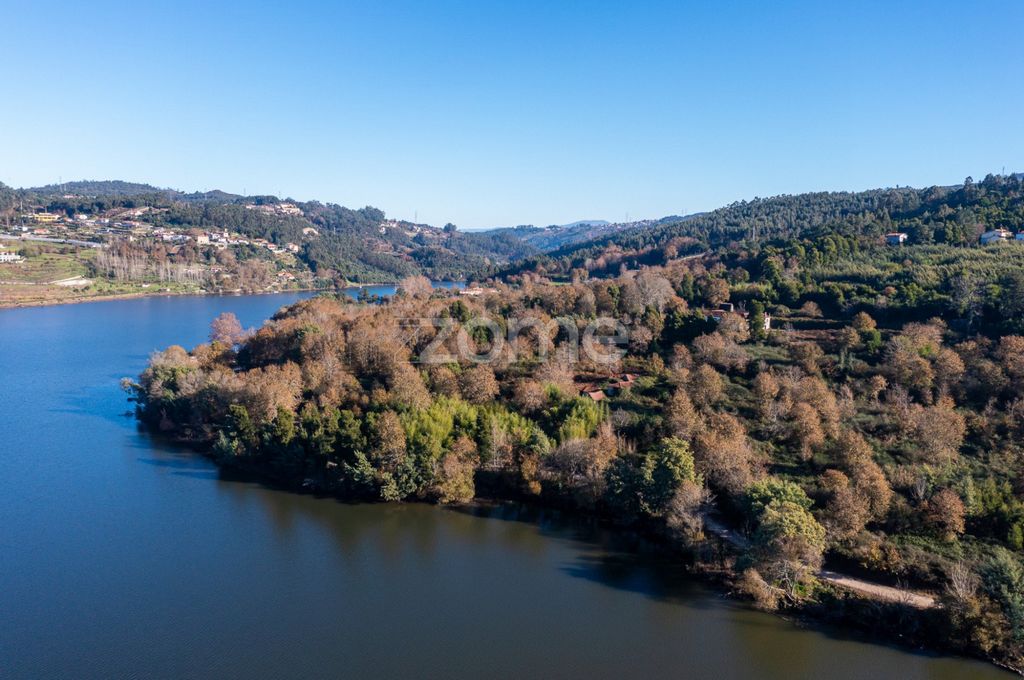
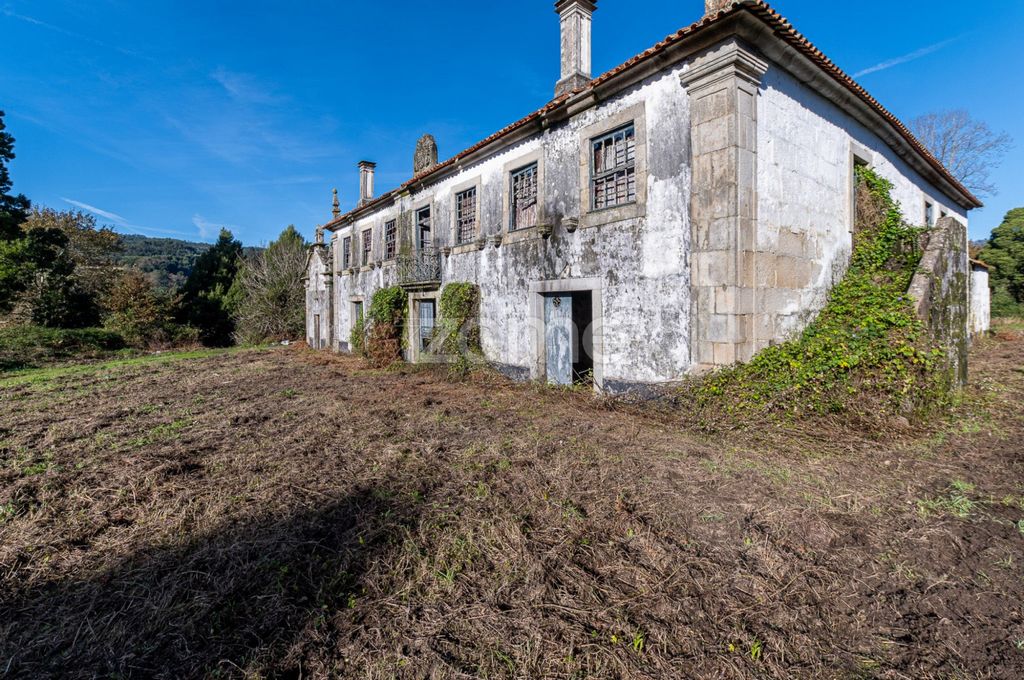
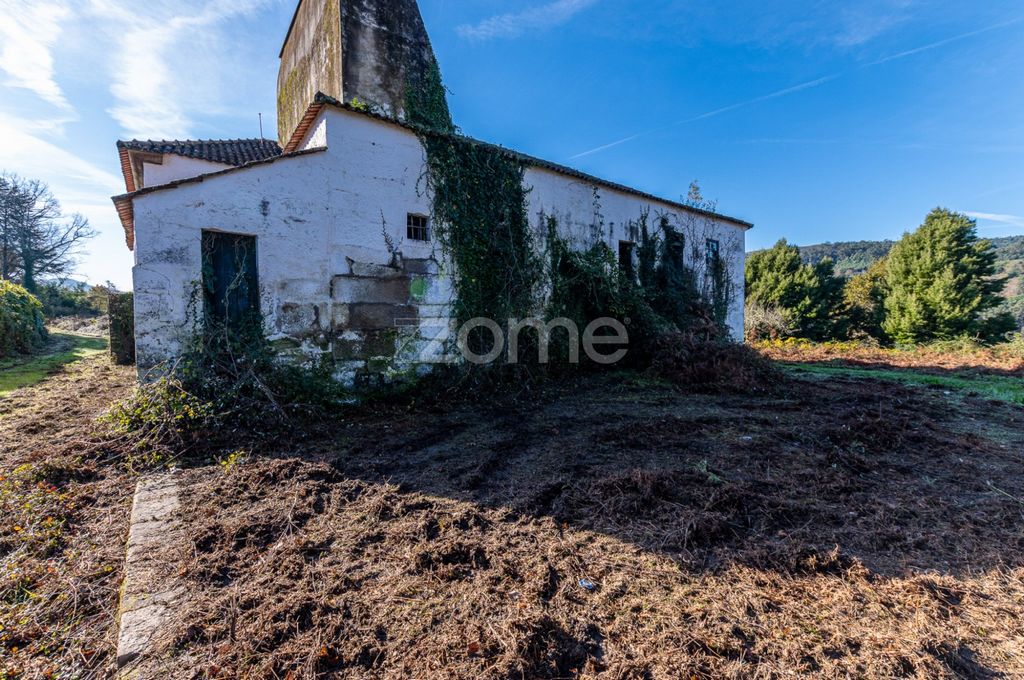

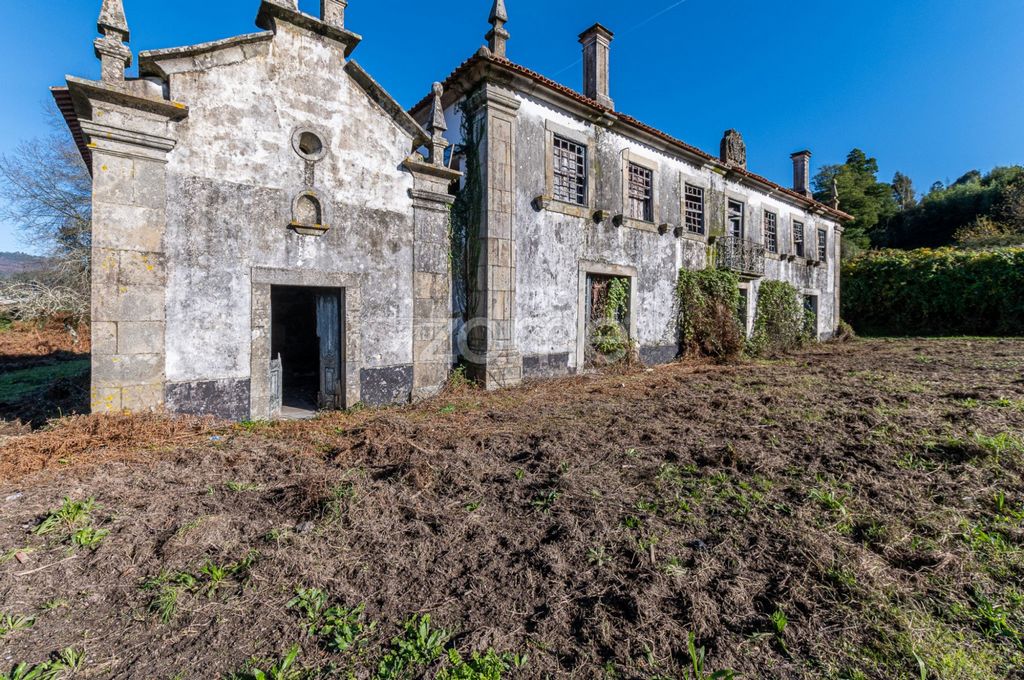
Woning beschikbaar voor bezichtiging, op voorafgaande afspraak met de adviseur, identificatiedocument vereist.
Boerderij met ongeveer 42 hectare (ca. 418.520 m2) in Vila Boa do Bispo, gemeente Marco de Canaveses, met uitzicht op de rivier de Tâmega voor een uitbreiding van ongeveer 750 meter.
Dit is een woning met een buitengewoon en gediversifieerd investeringspotentieel:
VOORDELEN:
WATER, de grootste en meest fundamentele huidige en toekomstige hulpbron voor de mensheid zonder welke er geen leven is, dat alleen buitengewone huidige en toekomstige waarde en potentieel brengt,
In ACQUISITIE, alle voordelen die inherent zijn aan de aankoop van een bedrijf alleen met zijn activa en vrij van elke andere vorm van verantwoordelijkheden,
Mogelijkheid om toegang te krijgen tot communautaire FONDSEN (afhankelijk van de te doen investering), namelijk Portugal 2030 en andere.
Mogelijkheid tot gemeentelijke steun en stimulansen (afhankelijk van de te doen investering en de rente voor het Gewest),
POTENTIEEL
TOERISME, in zijn meest gevarieerde en gediversifieerde opties, allemaal met een sterk en hoog potentieel, zoals Landelijk, Bergachtig, Exploratie, Aquatisch, Sport...,
ONROEREND GOED KOPEN EN VERKOPEN, als pure investering om later winst te maken of om te verhuren,
ANDERE BEDRIJVEN, die voortvloeien uit het soort bedrijf dat met het onroerend goed wordt geassocieerd
PRODUCT
Het bedrijf heeft als activa de volgende eigendommen volgens het kadaster:
- 3 (drie) Urban Items op een totaal van 1.584 m2
- 7 (zeven) rustieke items op een totaal van 416.936 m2
HAALBAARHEID VOLGENS DE HUIDIGE PDM-REGELGEVING VAN MARCO DE CANAVESES
Grond in Alvelo en Pisão (1/2)
Analyseer het land grenzend aan Rio – Casa de Alvelo en Capela.
Ondersteunende documentatie van de gemeenteraad van Marco de Canaveses beschikbaar voor analyse door de bemiddelaar. De haalbaarheid wordt vetgedrukt en onderstreept.
Planningsplan:
Landelijke bodem – productiebosgebieden
Overstromingsgebied
Gemeentelijke ecologische structuur op het platteland
Bouwkundig erfgoed VBB23 – Alvelo Huis en Kapel
Conditioneringsinstallatie:
Torrão terrestrische beschermingszone
Gereserveerd gebied van Albufeira do Torrão
REN-gebieden
Uittreksels uit de PDM-verordening:
Land- of bosbouw
Artikel 36
Definitie en dominant gebruik
1 — De land- en bosbouwgebieden worden naar gelang van hun geschiktheid in de volgende subcategorieën ingedeeld:
a) landbouwruimten: gebieden die voornamelijk worden gebruikt voor landbouwactiviteiten, met inbegrip van RAN-bodems en aanvullende landbouwgrond;
b) bosbeschermingsgebieden: gebieden die geschikt zijn voor bossen en die populaties van inheemse bossoorten omvatten met als doel hun natuurlijke regeneratie te bevorderen en het mozaïek van het landschap te vergroten;
c) Bosproductieruimten: gebieden die geschikt zijn voor bossen, met inbegrip van bosgebieden die gelegen zijn op grond die geschikt is voor gebruik en economische exploitatie. Ze omvatten ook gebieden met steilere hellingen, die zeer gevoelig zijn voor erosie en de hellingen van waterlopen, met een beschermende functie;
d) ....
2 — De bodems die in deze ruimtes zijn geïntegreerd....
3 — In landbouw- of bosbouwgebieden....
Artikel 37
Gebruik dat verenigbaar is met het dominante gebruik
1 — Naast de in het vorige artikel bedoelde handelingen worden de volgende installaties, werken, vormen van gebruik en activiteiten geacht verenigbaar te zijn met het overheersende gebruik:
a) Faciliteiten ter ondersteuning van veeteelt-, bosbouw- en landbouwactiviteiten, indien toegestaan door de regionale RAN-entiteit;
b) Woongebouwen;
c) uitrusting die gericht is op gebruik van algemeen belang en infrastructuur;
d) toeristische ondernemingen, lokale accommodatie en recreatieve en vrijetijdsactiviteiten;
e) Speciale installaties, ....
2 — De gebouwen,...:
Het) ...;
B) ...;
w) ....
Artikel 38
Faciliteiten ter ondersteuning van landbouw-, veeteelt- en bosbouwactiviteiten
1 — De bouw....
2 — De constructie....
3 — De bouw is toegestaan....
4 — In de produktie bosbouwruimten....
Artikel 39
Woongebouwen
1 — Bouwen in beschermde bosgebieden is verboden.
2 — Nieuwbouw voor woningbouwdoeleinden is toegestaan in productiebosbouwruimten zolang het een eengezinswoning is en alleen voor de eigen woning en de respectieve huishoudens van de eigenaar of de houder van het exploratierecht, zolang de typologie eengezinswoningen zijn en indien cumulatief wordt gecontroleerd of:
a) De minimale oppervlakte van het gebouw is twee hectare;
b) Te voldoen aan het bepaalde in lid 1 van artikel 13;
c) De hoogte van de gevel...;
d) De bezettingsgraad...;
e) De constructie wordt bediend door openbare wegen, met een minimale voorgevel van 20 meter grond.
3 — Zijn toegestaan...:
a) De belanghebbende is een landbouwer, ...;
b) Er is geen ander gebouw...;
c) Het gebouw heeft een minimale oppervlakte van één hectare;
d) Te voldoen aan het bepaalde in lid 1 van artikel 13;
e) de hoogte van de gevel van de gebouwen...;
f) De index van het landgebruik (Iu) is 0,02 en het waterdichtingsgebied mag niet groter zijn dan 300 m2;
g) De constructie wordt bediend door openbare wegen, met een minimale voorgevel van 20 meter grond.
4 — De uitbreiding van reeds bestaande gebouwen met een wettelijke vergunning is toegestaan, op voorwaarde dat de hoogte van de gevel van de gebouwen niet meer dan 6 meter bedraagt, het niveauverschil tussen de drempel en de grond maximaal 6 meter bedraagt en het waterdichtingsgebied meer dan 300 m2 bedraagt.
Artikel 40
Toeristische, recreatieve en recreatieve ontwikkelingen
1 — Bouwwerken voor toeristische projecten en recreatieve en recreatieve ontwikkelingen zijn toegestaan indien is geverifieerd dat:
a) Het gebouw moet minimaal 1 hectare groot zijn;
b) Te voldoen aan het bepaalde in lid 1 van artikel 13;
c) De hoogte van de gevel van het gebouw mag niet hoger zijn dan 9 meter, behalve voor hotelinrichtingen waar de gevelhoogte niet hoger mag zijn dan 15 meter;
d) De index van het landgebruik (Iu) is 0,02.
2 — In het geval van toeristische ondernemingen in plattelandsgebieden en ondernemingen voor verblijfstoerisme waarvoor op de datum van inwerkingtreding van het PDM een vergunning is verleend, zijn instandhoudings- en wederopbouwwerkzaamheden toegestaan aan bestaande gebouwen en hun uitbreiding tot 50%, afhankelijk van de hoogte van de gevel die niet hoger is dan 9 meter of de bestaande gevel indien hoger.
3 — Aanvullende constructies voor vrijetijdsuitrusting en ondersteuning van het hoofdgebouw zijn toegestaan, met een maximum van 10% van het totale uitvoeringsgebied.
4 — Toeristische, recreatieve en recreatieve activiteiten die verband houden met het gebruik van de natuurlijke omstandigheden van landelijke bodems en die niet onder lid 1 van dit artikel vallen, zijn toegestaan, zolang ze onderworpen zijn aan een gedetailleerd plan en de natuurlijke waarden en het landschap van het gebied.
5 — In bestaande of voor dit doel op te richten gebouwen is de vestiging van commerciële functies en diensten, te weten restaurants en dranken, toegestaan overeenkomstig artikel 37, lid 2.
Artikel 41
Uitrusting en infrastructuur van algemeen belang
De bouw van apparatuur voor gebruik in het algemeen belang is toegestaan,...:
a) Voldoen aan lid 1 van artikel 12;
b) Maximale gevelhoogte minder dan 9 meter;
c) De bezettingsindex van het land (Io) mag niet hoger zijn dan 30%.
Artikel 42
Speciale installaties
Speciale installaties die bij wijze van uitzondering zijn toegestaan, worden alleen toegestaan zolang ze geen archeologische, milieuwaarden of fundamentele ecologische systemen in gevaar brengen, naast een nauwgezette naleving van de bepalingen van algemeen en specifiek recht die van toepassing zijn op elke situatie.
HOOFDSTUK IV
Gemeentelijke ecologische structuur
Artikel 19
Identificatie
1 — De gemeentelijke ecologische structuur, ...:
a) waterlopen en hun oevers;
b) Aan het RAN toegewezen gebieden;
c) Aan REN toegewezen gebieden;
d) PROF do Tâmega ecologische corridor;
e) beschermde bosgebieden;
f) Natuurlijke ruimten;
g) Stedelijk groen....
2 — De gemeentelijke ecologische structuur....
DEEL I
Ecologische structuur in landelijke bodem
Artikel 20
Regime
1 — In de bestreken gebieden....
2 — In de in het vorige punt genoemde zaken (...)
3 — In gebieden met een ecologische structuur op het platteland zijn de volgende bepalingen toegestaan:
a) Aanleg van basisinfrastructuur en de opening van nieuwe straten, alsmede uitbreiding van bestaande gebouwen tot 0,3 maal de bouwoppervlakte van het bestaande gebouw en tot een maximum van 300 m2, inclusief de bestaande constructie, indien bestemd voor woningbouw, ondernemingen die toerisme huisvesten en toeristische ondernemingen in landelijke gebieden met een maximale bezettingsgraad (Io) van 20%;
b) Voorzieningen bestemd voor...;
c) Onderzoek en exploratie...;
d) De exploitatie van natuurlijk mineraalwater en industrieel water voor de mijnbouw.
Artikel 24
Bouwkundig erfgoed
a) Het Bouwkundig Erfgoed waarnaar in dit artikel wordt verwezen, omvat:
i) Geklasseerd erfgoed...;
ii) Eigenschappen, verzamelingen...;
b) Elke ingreep in het geklasseerde architecturale erfgoed of in het proces van classificatie is onderworpen aan een voorafgaand advies ... Meer bekijken Minder bekijken Identificação do imóvel: ZMPT564565
Nemovitost je k dispozici k návštěvě, po předchozí domluvě s konzultantem, je vyžadován doklad totožnosti.
Farma o rozloze přibližně 42 hektarů (cca 418 520 m2) ve Vila Boa do Bispo, obec Marco de Canaveses, s výhledem na řeku Tâmega v délce přibližně 750 metrů.
Jedná se o nemovitost s mimořádným a diverzifikovaným investičním potenciálem:
VÝHODY:
VODA, největší a nejzákladnější současný i budoucí zdroj pro lidstvo, bez něhož není života, který jediný přináší mimořádnou současnou i budoucí hodnotu a potenciál,
V AKVIZICI všechny výhody spojené s koupí společnosti pouze s jejím majetkem a bez jakýchkoli jiných závazků,
Možnost přístupu k FONDŮM Společenství (v závislosti na investici, která má být provedena), jmenovitě Portugalsko 2030 a další.,
možnost podpory a pobídek ze strany obcí (v závislosti na investici a zájmu kraje),
POTENCIÁLNÍ
CESTOVNÍ RUCH, ve svých nejrozmanitějších a nejrozmanitějších možnostech, všechny se silným a vysokým potenciálem, jako je venkovský, horský, průzkumný, vodní, sportovní...,
NÁKUP A PRODEJ NEMOVITOSTÍ, Jako čistá investice k pozdějšímu zisku nebo k pronájmu,
JINÉ PODNIKÁNÍ, vyplývající z typu podnikání, které má být spojeno s Objektem
VÝROBEK
Společnost má podle katastrů nemovitostí jako majetek následující nemovitosti:
- 3 (tři) městské položky v celkové rozloze 1 584 m2
- 7 (sedm) rustikálních položek v celkové rozloze 416 936 m2
PROVEDITELNOST PODLE AKTUÁLNÍHO PŘEDPISU PDM MARCO DE CANAVESES
Pozemek v Alvelo a Pisão (1/2)
Analyzujte pozemky sousedící s Riem – Casa de Alvelo a Capela.
Podpůrná dokumentace od městské rady Marco de Canaveses je k dispozici pro analýzu mediátorem. Proveditelnost je zvýrazněna tučně a podtržena.
Plánovací plán:
Venkovská půda – produkční lesní plochy
Záplavová zóna
Ekologická struktura obce na venkovské půdě
Architektonické dědictví VBB23 – Dům a kaple Alvelo
Kondicionérna:
Suchozemská ochranná zóna Torrão
Vyhrazená oblast Albufeira do Torrão
Oblasti REN
Výňatky z nařízení o PDM:
Zemědělské a lesnické prostory
Článek 36
Definice a dominantní užití
1 — Zemědělské a lesnické oblasti se v závislosti na své vhodnosti dělí na následující podkategorie:
a) Zemědělské prostory: plochy využívané převážně pro zemědělskou činnost, zahrnující půdy sítě RAN a doplňkovou zemědělskou půdu;
b) Lesní ochranné prostory: oblasti vhodnosti lesa, které zahrnují populace původních lesních druhů s cílem podpořit jejich přirozenou obnovu a rozšířit mozaiku krajiny;
c) Prostory lesní produkce: oblasti vhodnosti lesa, které zahrnují lesní plochy nacházející se na půdě vhodné k využívání a hospodářskému využívání. Patří sem také oblasti se strmějšími svahy, které mají vysokou míru náchylnosti k erozi, a svahy vodních toků s ochrannou funkcí;
d) ....
2 – Půdy začleněné do těchto prostorů....
3 — V zemědělských nebo lesnických oblastech....
Článek 37
Použití slučitelné s dominantním použitím
1 — Kromě činností uvedených v předchozím článku se za slučitelná s dominantním užíváním považují tato zařízení, stavební práce, užití a činnosti:
a) zařízení na podporu živočišné, lesnické a zemědělské činnosti, pokud je schválena regionálním subjektem sítě RAN;
b) obytné budovy;
c) zařízení určené k využití veřejného zájmu a infrastruktury;
d) podniky cestovního ruchu, místní ubytovací zařízení a rekreační a volnočasové aktivity;
e) Speciální instalace, ....
2 — Budovy,...:
...;
B) ...;
w) ....
Článek 38
Zařízení na podporu zemědělské, živočišné a lesnické činnosti
1 — Konstrukce....
2 — Konstrukce....
3 — Stavba je povolena....
4 — Ve výrobních lesnických prostorách....
Článek 39
Obytné budovy
1 — Stavba v lesních chráněných oblastech je zakázána.
2 — Nové stavby pro bytové účely jsou povoleny v produkčních lesnických prostorách, pokud se jedná o rodinný dům, a pouze pro vlastní obydlí vlastníka a příslušné domácnosti nebo držitele průzkumného práva, pokud se jedná o typologii pro jednu rodinu a pokud se kumulativně kontroluje, že:
a) minimální výměra budovy je dva hektary;
b) dodržovat ustanovení odstavce 1 článku 13;
c) Výška fasády...;
d) Míra využití...;
e) Stavba je obsluhována veřejnými komunikacemi s minimální průčelím 20 metrů pozemku.
3 — Jsou povoleny...:
a) Zúčastněnou stranou je zemědělec, ...;
b) Žádná jiná budova neexistuje...;
c) budova má minimální rozlohu jeden hektar;
d) dodržovat ustanovení odstavce 1 článku 13;
e) výška fasády budov...;
f) index využití půdy (Iu) je 0,02 a plocha hydroizolace nesmí přesáhnout 300 m2;
g) Stavba je obsluhována veřejnými komunikacemi s minimální průčelní plochou 20 metrů pozemku.
4 — Rozšiřování již existujících zákonem povolených budov je povoleno za předpokladu, že výška fasády budov nesmí přesáhnout 6 metrů, rozdíl v úrovni od prahu k terénu je nejvýše 6 metrů a plocha hydroizolace přesahuje 300 m2.
Článek 40
Rozvoj cestovního ruchu, rekreace a volného času
1 – Stavby pro rozvoj cestovního ruchu a rekreační a rekreační objekty jsou povoleny, pokud je ověřeno, že:
a) Budova musí mít minimálně 1 hektar;
b) dodržovat ustanovení odstavce 1 článku 13;
c) Výška fasády budovy nesmí přesáhnout 9 metrů, s výjimkou hotelových zařízení, kde výška fasády nesmí přesáhnout 15 metrů;
d) Index využití půdy (Iu) je 0,02.
2 — V případě podniků cestovního ruchu ve venkovských oblastech a podniků rezidenčního cestovního ruchu, které byly povoleny ke dni vstupu PDM v platnost, jsou povoleny konzervační a rekonstrukční práce na stávajících budovách a jejich rozšíření až o 50 % v závislosti na výšce fasády, která nepřesahuje 9 metrů, nebo na stávající fasádě, pokud je vyšší.
3 – Jsou povoleny doplňkové stavby pro vybavení pro volný čas a podpěry k hlavní budově, které nepřesahují 10 % celkové plochy realizace.
4 — Turistické, rekreační a rekreační podniky spojené s využíváním přírodních podmínek venkovských půd, na které se nevztahuje odstavec 1 tohoto článku, jsou povoleny, pokud podléhají podrobnému plánu a přírodním hodnotám a krajině lokality.
5 — Ve stávajících budovách nebo budovách, které mají být za tímto účelem postaveny, je v souladu s odstavcem 2 článku 37 povoleno umístění komerčních účelů a služeb, a sice restaurací a nápojů.
Článek 41
Zařízení a infrastruktura veřejného zájmu
Konstrukce zařízení pro použití ve veřejném zájmu je povolena,...:
a) dodržovat odstavec 1 článku 12;
b) maximální výška fasády menší než 9 metrů;
c) Index záboru půdy (Io) nesmí překročit 30 %.
Článek 42
Speciální instalace
Zvláštní zařízení, která jsou povolena výjimečně, budou povolena pouze tehdy, pokud neohrožují archeologické, environmentální hodnoty nebo základní ekologické systémy, kromě svědomitého dodržování ustanovení obecných a zvláštních zákonů, platných pro každou situaci.
KAPITOLA IV
Ekologická struktura obce
Článek 19
Identifikace
1 — Ekologická struktura obce, ...:
a) vodní toky a jejich břehy,
b) oblasti přidělené síti RAN;
c) oblasti přidělené REN;
d) ekologický koridor PROF do Tâmega;
e) Lesy v ochranných prostorech;
f) přírodní prostory;
g) Městská zeleň....
2 — Ekologická struktura obce....
ODDÍL I
Ekologická struktura venkovské půdy
Článek 20
Režim
1 — V oblastech, na které se vztahuje....
2 — V případech uvedených v předchozím bodě.
3 — Na plochách, na které se vztahuje ekologická struktura na venkovské půdě, jsou povoleny:
a) instalace základní infrastruktury a otevření nových ulic, jakož i rozšíření stávajících budov až do 0,3násobku stavební plochy stávající budovy a do maximální rozlohy 300 m2, včetně stávající výstavby, je-li určena pro bydlení, podniky s bydlením cestovního ruchu a podniky cestovního ruchu ve venkovských oblastech s maximální mírou obsazenosti (Io) 20 %;
b) zařízení určená pro...;
c) Výzkum a průzkum...;
d) Využívání přírodních minerálních vod a hornicko-průmyslových vod.
Článek 24
Architektonické dědictví
a) Architektonické dědictví uvedené v tomto článku zahrnuje:
i) Utajované dědictví...;
ii) Vlastnosti, množiny...;
b) jakýkoli zásah do architektonického dědictví nebo do jeho utajování podléhá předchozímu stanovisku opatrovnického orgánu v souladu se zákonem;
c) Jakýkoli zásah do inventarizovaného architektonického dědictví podléhá stanovisku příslušných komunálních služeb magistrátu a musí být založen na zásadě ochrany a zvelebování majetku nebo inventarizované plochy při respektování jejích základních charakteristik;
d) Celková nebo částečná demolice...:
i) z výjimečných důvodů zjevného veřejn... Identificação do imóvel : ZMPT564565
Propriété disponible pour visites, sur rendez-vous préalable avec le consultant, pièce d’identité requise.
Ferme d’environ 42 hectares (environ 418 520 m2) à Vila Boa do Bispo, municipalité de Marco de Canaveses, face à la rivière Tâmega pour une extension d’environ 750 mètres.
Il s’agit d’une propriété avec un potentiel d’investissement extraordinaire et diversifié :
AVANTAGES:
L’EAU, la ressource actuelle et future la plus grande et la plus fondamentale pour l’humanité, sans laquelle il n’y a pas de vie, qui seule apporte une valeur et un potentiel extraordinaires présents et futurs,
En ACQUISITION, l’ensemble des avantages inhérents à l’achat d’une Société uniquement avec ses actifs et libre de tout autre type de responsabilités,
Possibilité d’accès aux FONDS communautaires (en fonction de l’investissement à réaliser), à savoir Portugal 2030 et autres.,
Possibilité de soutien et d’incitations municipales (en fonction de l’investissement à réaliser et de l’intérêt pour la Région),
POTENTIEL
TOURISME, dans ses options les plus variées et diversifiées, toutes à fort potentiel et à fort potentiel telles que Rural, Montagneux, Exploration, Aquatique, Sports...,
L’ACHAT ET LA VENTE DE PROPRIÉTÉS, comme un pur investissement pour faire un profit plus tard ou pour la location,
AUTRES ENTREPRISES, découlant du type d’entreprise à associer à la propriété
PRODUIT
La Société possède en tant qu’actifs les propriétés suivantes selon les registres fonciers :
- 3 (trois) éléments urbains pour un total de 1 584 m2
- 7 (sept) éléments rustiques pour un total de 416 936 m2
FAISABILITÉS SELON LA RÉGLEMENTATION PDM EN VIGUEUR DE MARCO DE CANAVESES
Terrain à Alvelo et Pisão (1/2)
Analysez les terrains adjacents à Rio – Casa de Alvelo et Capela.
Documents justificatifs de la mairie de Marco de Canaveses disponibles pour analyse par le médiateur. La faisabilité est mise en évidence en gras et soulignée.
Plan de planification :
Sols ruraux – Espaces forestiers de production
Zone inondable
Structure écologique municipale sur les terres rurales
Patrimoine architectural VBB23 – Maison et chapelle Alvelo
Usine de conditionnement :
Zone de protection terrestre de Torrão
Zone réservée d’Albufeira do Torrão
Zones REN
Extraits du règlement PDM :
Espaces agricoles ou forestiers
L’article 36
Définition et usages dominants
1 — En fonction de leur aptitude, les superficies agricoles et forestières sont divisées en sous-catégories suivantes :
a) Espaces agricoles : zones principalement utilisées pour les activités agricoles, intégrant des sols RAN et des terres agricoles complémentaires ;
b) Espaces de conservation forestière : zones d’aptitude forestière qui comprennent des populations d’espèces forestières indigènes dans le but de promouvoir leur régénération naturelle et d’accroître la mosaïque paysagère ;
c) Espaces de production forestière : zones d’aptitude forestière qui comprennent des parcelles forestières situées sur des terres propices à l’utilisation et à l’exploitation économique. Il s’agit également de zones à pentes plus raides, qui présentent un niveau élevé de vulnérabilité à l’érosion, et des pentes de cours d’eau, ayant une fonction protectrice ;
d) ....
2 — Les sols intégrés dans ces espaces...
3 — Dans les zones agricoles ou forestières...
L’article 37
Usages compatibles avec l’usage dominant
1 — Outre les actions visées à l’article précédent, les installations, ouvrages, usages et activités suivants sont considérés comme compatibles avec l’usage dominant :
a) Installations destinées à soutenir l’élevage, la sylviculture et les activités agricoles, si elles sont autorisées par l’entité régionale du RAN ;
b) Bâtiments résidentiels ;
c) Équipements destinés à des usages d’intérêt public et d’infrastructure ;
d) Les entreprises touristiques, l’hébergement local et les activités récréatives et de loisirs ;
e) Installations spéciales, ....
2 — Les bâtiments,... :
Le) ... ;
B) ...;
w) ....
L’article 38
Installations pour soutenir les activités agricoles, d’élevage et forestières
1 — La construction...
2 — La construction...
3 — La construction est permise....
4 — Dans les espaces forestiers de production...
L’article 39
Bâtiments résidentiels
1 — Il est interdit de construire dans les zones de conservation forestière.
2 — Les nouvelles constructions à des fins d’habitation sont autorisées dans les espaces forestiers de production à condition qu’il s’agisse d’une maison unifamiliale et uniquement pour la résidence du propriétaire et les ménages respectifs ou le titulaire du droit d’exploration, à condition que la typologie soit unifamiliale et que l’on vérifie, cumulativement :
a) La superficie minimale du bâtiment est de deux hectares ;
b) Se conformer aux dispositions du paragraphe 1 de l’article 13 ;
c) La hauteur de la façade... ;
d) Le taux d’utilisation... ;
e) La construction est desservie par des voies publiques, avec une façade minimale de 20 mètres de terrain.
3 — Sont autorisés... :
a) L’intéressé est un agriculteur, ... ;
b) Il n’y a pas d’autre bâtiment... ;
c) Le bâtiment a une superficie minimale d’un hectare ;
d) Se conformer aux dispositions du paragraphe 1 de l’article 13 ;
e) La hauteur de la façade des bâtiments... ;
f) L’indice d’utilisation du sol (Iu) est de 0,02 et la surface d’imperméabilisation ne peut pas dépasser 300 m2 ;
g) La construction est desservie par des voies publiques, avec une façade minimale de 20 mètres de terrain.
4 — L’agrandissement de bâtiments préexistants légalement autorisés est autorisé, à condition que la hauteur de la façade des bâtiments ne puisse dépasser 6 mètres, que la différence de niveau entre le seuil et le sol soit de 6 mètres maximum et que la surface d’imperméabilisation dépasse 300 m2.
L’article 40
Aménagements touristiques, récréatifs et de loisirs
1 — Les constructions d’aménagements touristiques et d’aménagements récréatifs et de loisirs sont autorisées s’il est vérifié que :
a) Le bâtiment doit avoir une superficie minimale de 1 hectare ;
b) Se conformer aux dispositions du paragraphe 1 de l’article 13 ;
c) La hauteur de la façade du bâtiment ne peut excéder 9 mètres, sauf pour les établissements hôteliers où la hauteur de la façade ne peut dépasser 15 mètres ;
d) L’indice d’occupation des sols (Iu) est de 0,02.
2 — Dans le cas des entreprises touristiques dans les zones rurales et des entreprises de tourisme résidentiel agréées à la date d’entrée en vigueur du PDM, les travaux de conservation et de reconstruction sont autorisés sur les bâtiments existants et leur agrandissement jusqu’à 50 %, selon que la hauteur de la façade ne dépasse pas 9 mètres ou la hauteur existante si elle est supérieure.
3 — Les constructions complémentaires pour les équipements de loisirs et le support au bâtiment principal sont autorisées, n’excédant pas 10 % de la superficie totale de mise en œuvre.
4 — Les activités touristiques, récréatives et de loisirs associées à l’utilisation des conditions naturelles des sols ruraux et non couvertes par le paragraphe 1 du présent article sont autorisées, à condition qu’elles soient soumises à un plan détaillé et aux valeurs naturelles et paysagères du site.
5 — Dans les bâtiments existants ou à construire à cet effet, l’installation d’usages et de services commerciaux, à savoir des restaurants et des boissons, est autorisée, conformément au paragraphe 2 de l’article 37.
L’article 41
Équipements et infrastructures d’intérêt public
La construction d’équipements destinés à des usages d’intérêt public est autorisée,... :
a) Se conformer au paragraphe 1 de l’article 12 ;
b) Hauteur maximale de la façade inférieure à 9 mètres ;
c) L’indice d’occupation du sol (Io) ne doit pas dépasser 30 %.
L’article 42
Installations spéciales
Les installations spéciales autorisées à titre exceptionnel ne seront autorisées que dans la mesure où elles ne compromettent pas les valeurs archéologiques, environnementales ou les systèmes écologiques fondamentaux, en plus du respect scrupuleux des dispositions du droit général et spécifique, applicables à chaque situation.
CHAPITRE IV
Structure écologique municipale
L’article 19
Identification
1 — La structure écologique municipale, ... :
a) Les cours d’eau et leurs berges ;
b) Zones allouées à la RAN ;
c) Zones allouées au REN ;
d) Corridor écologique du PROF do Tâmega ;
e) Espaces de conservation des forêts ;
f) Espaces naturels ;
g) Espaces verts urbains....
2 — La structure écologique municipale...
CHAPITRE I
Structure écologique dans le sol rural
L’article 20
Régime
1 — Dans les domaines couverts...
2 — Dans celles visées à l’alinéa précédent...
3 — Dans les zones couvertes par la structure écologique sur les terres rurales, sont autorisées :
a) L’installation d’infrastructures de base et l’ouverture de nouvelles rues, ainsi que l’agrandissement des ... Identificação do imóvel: ZMPT564565
Imóvel disponível para visitas, mediante agendamento prévio com o consultor, necessário documento de identificação.
Quinta com cerca de 42 Hectares (aprox. 418.520 m2) em Vila Boa do Bispo, Concelho de Marco de Canaveses, virada para o Rio Tâmega numa extensão de aproximadamente 750 metros.
Trata-se de um Imóvel com Potencial de Investimento Extraordinário e Diversificado:
BENEFÍCIOS:
ÁGUA, o maior e mais fundamental recurso atual e futuro para a humanidade sem o qual não há vida, que por si só traz extraordinário valor e potencial presente e futuro,
Na AQUISIÇÃO, todos os benefícios inerentes à compra de uma Empresa somente com seus ativos e livre de qualquer outro tipo de responsabilidade,
Possibilidade de acesso a FUNDOS COMUNITÁRIOS (em função do investimento a realizar), nomeadamente o Portugal 2030 e outros.,
Possibilidade de apoios e incentivos municipais (em função do investimento a realizar e do interesse para a Região),
POTENCIAL
TURISMO, em suas mais variadas e diversificadas opções, todas elas com forte e alto potencial como Rural, Montanhoso, Exploratório, Aquático, Esportivo...,
COMPRA E VENDA DE IMÓVEIS, Como puro investimento para obter lucro mais tarde ou para alugar,
OUTROS NEGÓCIOS, decorrentes do tipo de negócio a ser associado ao Imóvel
PRODUTO
A Companhia possui como Ativos os seguintes Imóveis de acordo com os Registros de Imóveis:
- 3 (Três) Itens Urbanos num total de 1.584 m2
- 7 (Sete) Itens Rústicos num total de 416.936 m2
VIABILIDADE DE ACORDO COM O ATUAL REGULAMENTO DO PDM DO MARCO DE CANAVESES
Terreno em Alvelo e Pisão (1/2)
Analise o terreno adjacente ao Rio – Casa de Alvelo e Capela.
Documentação comprovativa da Câmara Municipal de Marco de Canaveses disponível para análise do mediador. A viabilidade é destacada em negrito e sublinhada.
Plano de Planejamento:
Solo Rural – Espaços Florestais de Produção
Zona de inundação
Estrutura Ecológica Municipal em Terras Rurais
Património Arquitectónico VBB23 – Casa e Capela Alvelo
Planta de Condicionamento:
Zona de Proteção Terrestre do Torrão
Área Reservada de Albufeira do Torrão
Áreas da REN
Extractos do Regulamento PDM:
Espaços agrícolas ou florestais
Artigo 36.o
Definição e usos dominantes
1 — Em função da sua adequação, as superfícies agrícolas e florestais dividem-se nas seguintes subcategorias:
a) Espaços agrícolas: áreas utilizadas principalmente para atividades agrícolas, integrando solos RAN e terras agrícolas complementares;
b) Espaços de conservação florestal: áreas de adequação florestal que incluem populações de espécies florestais autóctones com o objetivo de promover a sua regeneração natural e aumentar o mosaico paisagístico;
c) Espaços de produção florestal: áreas de aptidão florestal que incluem manchas florestais localizadas em terras próprias para uso e exploração econômica. Incluem também áreas com declives mais acentuados, que apresentam alto nível de suscetibilidade à erosão e as encostas de cursos d'água, com função protetora;
d) ....
2 — Os solos integrados nestes espaços....
3 — Nas zonas agrícolas ou florestais....
Artigo 37.o
Utilizações compatíveis com a utilização dominante
1 — Para além das acções referidas no artigo anterior, consideram-se compatíveis com a utilização dominante as seguintes instalações, obras, usos e actividades:
a) Instalações de apoio às atividades pecuárias, florestais e agrícolas, se autorizadas pela Entidade Regional da RAN;
b) Edifícios residenciais;
c) Equipamentos destinados a usos de interesse público e infraestrutura;
d) Empreendimentos turísticos, alojamento local e atividades recreativas e de lazer;
e) Instalações especiais, ....
2 — Os edifícios,...:
O) ...;
B) ...;
w) ....
Artigo 38.o
Instalações de apoio às atividades agrícolas, pecuárias e florestais
1 — A construção....
2 — A construção....
3 — A construção é permitida....
4 — Nos espaços florestais de produção....
Artigo 39.o
Edifícios residenciais
1 — É proibido construir em áreas de conservação florestal.
2 — São permitidas novas construções para fins habitacionais em espaços florestais de produção, desde que se trate de habitação unifamiliar e apenas para residência própria do proprietário e respetivos agregados familiares ou titulares do direito de exploração, desde que a tipologia seja unifamiliar e se verifique, cumulativamente, que:
a) A área mínima da edificação é de dois hectares;
b) Cumprir o disposto no n.º 1 do artigo 13.º;
c) A altura da fachada...;
d) A taxa de utilização...;
e) A construção é servida por vias públicas, com uma fachada mínima de 20 metros de terreno.
3 — São permitidos...:
a) O interessado for agricultor, ...;
b) Não há outro prédio...;
c) A edificação tenha uma área mínima de um hectare;
d) Cumprir o disposto no n.º 1 do artigo 13.º;
e) A altura da fachada dos edifícios...;
f) O índice de uso do solo (Iu) é de 0,02, não podendo a área de impermeabilização ultrapassar 300 m2;
g) A construção é servida por vias públicas, com uma fachada mínima de 20 metros de terreno.
4 — É permitida a ampliação de edifícios pré-existentes legalmente licenciados, desde que a altura da fachada dos edifícios não possa exceder 6 metros, a diferença de nível da soleira para o solo seja de, no máximo, 6 metros e a área de impermeabilização seja superior a 300 m2.
Artigo 40.o
Empreendimentos turísticos, recreativos e de lazer
1 — São permitidas construções para empreendimentos turísticos e empreendimentos recreativos e de lazer se se verificar que:
a) A edificação deve ter no mínimo 1 hectare;
b) Cumprir o disposto no n.º 1 do artigo 13.º;
c) A altura da fachada do edifício não pode exceder 9 metros, exceto para estabelecimentos hoteleiros onde a altura da fachada não pode exceder 15 metros;
d) O índice de uso da terra (Iu) é de 0,02.
2 — No caso de empreendimentos turísticos em zonas rurais e empreendimentos turísticos residenciais licenciados à data de entrada em vigor do PDM, são permitidas obras de conservação e reconstrução de edifícios existentes e a sua expansão até 50%, consoante a altura da fachada não exceda 9 metros ou a existente se superior.
3 — São permitidas construções complementares para equipamentos de lazer e apoio ao edifício principal, não excedendo 10% da área total de execução.
4 — São permitidos empreendimentos turísticos, recreativos e de lazer associados à utilização das condições naturais dos solos rurais e não abrangidos pelo n.º 1 do presente artigo, desde que sujeitos a um Plano de Pormenor e aos valores naturais e paisagísticos do sítio.
5 — Nos edifícios existentes ou a construir para o efeito, é permitida a instalação de usos e serviços comerciais, nomeadamente restaurantes e bebidas, nos termos do n.º 2 do artigo 37.º.
Artigo 41.o
Equipamentos e infraestruturas de interesse público
É permitida a construção de equipamentos para usos de interesse público,...:
a) Cumprir o disposto no n.º 1 do artigo 12.º;
b) Altura máxima da fachada inferior a 9 metros;
c) O índice de ocupação do solo (Io) não deve exceder 30%.
Artigo 42.o
Instalações especiais
As instalações especiais permitidas a título excepcional só serão autorizadas desde que não ponham em causa valores arqueológicos, ambientais ou sistemas ecológicos fundamentais, para além do cumprimento escrupuloso das disposições da legislação geral e específica, aplicáveis a cada situação.
CAPÍTULO IV
Estrutura ecológica municipal
Artigo 19.o
Identificação
1 — A estrutura ecológica municipal, ...:
a) cursos d'água e suas margens;
b) Áreas destinadas à RAN;
c) Áreas afectas à REN;
d) Corredor ecológico do PROF do Tâmega;
e) Espaços de conservação florestal;
f) Espaços naturais;
g) Espaços verdes urbanos....
2 — A estrutura ecológica municipal....
SEÇÃO I
Estrutura ecológica em solo rural
Artigo 20.o
Regime
1 — Nas zonas abrangidas....
2 — Nas referidas no número anterior....
3 — Nas zonas abrangidas pela estrutura ecológica dos terrenos rurais, são permitidos:
a) Instalação de infraestrutura básica e abertura de novas ruas, bem como ampliação de edifícios existentes até 0,3 vezes a área de construção do edifício existente e até um máximo de 300 m2, incluindo a construção existente, quando destinada a habitação, empreendimentos de turismo de habitação e empreendimentos turísticos em zonas rurais com uma taxa de ocupação máxima (Io) de 20%;
b) Instalações destinadas a...;
c) Pesquisa e exploração...;
d) A exploração de águas minerais naturais e águas minero-industriais.
Artigo 24.o
Patrimônio arquitetônico
a) O Património Arquitectónico a que se refere este artigo compreende:
i) Património classificado...;
ii) Propriedades, conjuntos...;
b) Qualquer intervenção no património arquitetónico classificado ou em vias de classificação está sujeita a parecer prévio da entidade tutelar, nos termos da lei;
c) Qualquer intervenção no património arquitetónico inventariado está sujeita a parecer dos serviços municipais competentes da câmara municipa... Identificação do imóvel: ZMPT564565
Property available for visits, by prior appointment with the consultant, identification document required.
Farm with approximately 42 Hectares (approx. 418,520 m2) in Vila Boa do Bispo, Municipality of Marco de Canaveses, facing the Tâmega River for an extension of approximately 750 meters.
This is a Property With Extraordinary and Diversified Investment Potential:
BENEFITS:
WATER, the Greatest and Most Fundamental Current and Future Resource for Humanity Without Which There is No Life, which alone brings Extraordinary Present and Future Value and Potential,
In ACQUISITION, all the benefits inherent to the purchase of a Company only with its assets and free from any other type of responsibilities,
Possibility of access to Community FUNDS (depending on the investment to be made), namely Portugal 2030 and others.,
Possibility of Municipal support and incentives (depending on the investment to be made and the interest for the Region),
POTENTIAL
TOURISM, in its most varied and diversified options, all of them with a strong and high potential such as Rural, Mountainous, Exploration, Aquatic, Sports…,
BUYING AND SELLING PROPERTIES, As a pure Investment to make a profit later or for Renting,
OTHER BUSINESSES, arising from the type of business to be associated with the Property
PRODUCT
The Company has as Assets the following Properties according to Land Registries:
- 3 (Three) Urban Items in a Total of 1,584 m2
- 7 (Seven) Rustic Items in a Total of 416,936 m2
FEASIBILITIES ACCORDING TO THE CURRENT PDM REGULATION OF MARCO DE CANAVESES
Land in Alvelo and Pisão (1/2)
Analyze the land adjacent to Rio – Casa de Alvelo and Capela.
Supporting documentation from Marco de Canaveses City Council available for analysis by the mediator. Feasibility is highlighted in bold and underlined.
Planning Plan:
Rural Soil – Production Forest Spaces
Flood zone
Municipal Ecological Structure on Rural Land
Architectural Heritage VBB23 – Alvelo House and Chapel
Conditioning Plant:
Torrão Terrestrial Protection Zone
Reserved Area of Albufeira do Torrão
REN areas
Extracts from the PDM Regulation:
Agricultural or forestry spaces
Article 36
Definition and dominant uses
1 — Depending on their suitability, agricultural and forestry areas are divided into the following subcategories:
a) Agricultural spaces: areas mainly used for agricultural activities, integrating RAN soils and complementary agricultural land;
b) Forest conservation spaces: areas of forest suitability which include populations of indigenous forest species with the aim of promoting their natural regeneration and increasing the landscape mosaic;
c) Forest production spaces: areas of forest suitability that include forest patches located on land suitable for use and economic exploitation. They also include areas with steeper slopes, which have a high level of susceptibility to erosion and the slopes of water courses, with a protective function;
d) ....
2 — The soils integrated into these spaces....
3 — In agricultural or forestry areas....
Article 37
Uses compatible with the dominant use
1 — In addition to the actions referred to in the previous article, the following installations, works, uses and activities are considered compatible with the dominant use:
a) Facilities to support livestock, forestry and agricultural activities if authorized by the RAN Regional Entity;
b) Residential buildings;
c) Equipment aimed at uses of public interest and infrastructure;
d) Tourist enterprises, local accommodation and recreational and leisure activities;
e) Special installations, ....
2 — The buildings,...:
The) ...;
B) ...;
w) ....
Article 38
Facilities to support agricultural, livestock and forestry activities
1 — The construction....
2 — The construction....
3 — Construction is permitted....
4 — In production forestry spaces....
Article 39
Residential buildings
1 — Building in forest conservation areas is prohibited.
2 — New constructions for housing purposes are permitted in production forestry spaces as long as it is a single-family house and only for the owner's own residence and respective households or holder of the exploration right, as long as the typology is single-family and if check, cumulatively, that:
a) The minimum area of the building is two hectares;
b) Comply with the provisions of paragraph 1 of article 13;
c) The height of the facade...;
d) The utilization rate...;
e) The construction is served by public roads, with a minimum frontage of 20 meters of land.
3 — Are allowed...:
a) The interested party is a farmer, ...;
b) There is no other building...;
c) The building has a minimum area of one hectare;
d) Comply with the provisions of paragraph 1 of article 13;
e) The height of the facade of the buildings...;
f) The land use index (Iu) is 0.02, and the waterproofing area cannot exceed 300 m2;
g) The construction is served by public roads, with a minimum frontage of 20 meters of land.
4 — The expansion of pre-existing legally licensed buildings is permitted, provided that the height of the buildings' facade cannot exceed 6 meters, the difference in level from the threshold to the ground is a maximum of 6 meters, and the waterproofing area exceeds 300 m2.
Article 40
Tourist, recreational and leisure developments
1 — Constructions for tourist developments and recreational and leisure developments are permitted if it is verified that:
a) The building must have a minimum of 1 hectare;
b) Comply with the provisions of paragraph 1 of article 13;
c) The height of the building facade cannot exceed 9 meters, except for hotel establishments where the facade height cannot exceed 15 meters;
d) The land use index (Iu) is 0.02.
2 — In the case of tourism enterprises in rural areas and residential tourism enterprises licensed on the date of entry into force of the PDM, conservation and reconstruction works are permitted on existing buildings and their expansion up to 50%, depending on the height of the facade does not exceed 9 meters or the existing one if higher.
3 — Complementary constructions for leisure equipment and support to the main building are permitted, not exceeding 10% of the overall area of implementation.
4 — Tourist, recreational and leisure ventures associated with the use of the natural conditions of rural soils and not covered by paragraph 1 of this article are permitted, as long as they are subject to a Detailed Plan and the natural values and landscape of the site.
5 — In existing buildings or those to be constructed for this purpose, the installation of commercial uses and services, namely restaurants and drinks, is permitted, in accordance with paragraph 2 of article 37.
Article 41
Equipment and infrastructure of public interest
The construction of equipment for uses in the public interest is permitted,...:
a) Comply with paragraph 1 of article 12;
b) Maximum facade height less than 9 meters;
c) Land occupation index (Io) must not exceed 30%.
Article 42
Special installations
Special installations permitted on an exceptional basis will only be authorized as long as they do not jeopardize archaeological, environmental values or fundamental ecological systems, in addition to scrupulous compliance with the provisions of general and specific law, applicable to each situation.
CHAPTER IV
Municipal ecological structure
Article 19
Identification
1 — The municipal ecological structure, ...:
a) Water courses and their banks;
b) Areas allocated to the RAN;
c) Areas allocated to REN;
d) PROF do Tâmega ecological corridor;
e) Forest conservation spaces;
f) Natural spaces;
g) Urban green spaces....
2 — The municipal ecological structure....
SECTION I
Ecological structure in rural soil
Article 20
Regime
1 — In the areas covered....
2 — In those referred to in the previous paragraph....
3 — In areas covered by the ecological structure on rural land, the following are permitted:
a) Installation of basic infrastructure and the opening of new streets, as well as expansion of existing buildings up to 0.3 times the construction area of the existing building and up to a maximum of 300 m2, including the existing construction, when intended for housing, enterprises housing tourism and tourism enterprises in rural areas with a maximum occupancy rate (Io) of 20%;
b) Facilities intended for...;
c) Research and exploration...;
d) The exploitation of natural mineral waters and mining-industrial waters.
Article 24
Architectural heritage
a) The Architectural Heritage referred to in this article includes:
i) Classified heritage...;
ii) Properties, sets...;
b) Any intervention in the architectural heritage classified or in the process of being classified is subject to a prior opinion from the guardianship body in accordance with the law;
c) Any intervention in the inventoried architectural heritage is subject to an opinion by the competent municipal services of the city council, and must be based on the principle of safeguarding and enhancing the property or inventoried area, respecting its essential characteristics;
d) Total or partial demolition...:
i) For exceptional reasons of clear public interest;
ii) As... Identificação do imóvel: ZMPT564565
Inmueble disponible para visitas, previa cita con el asesor, se requiere documento de identificación.
Finca con aproximadamente 42 Hectáreas (aprox. 418.520 m2) en Vila Boa do Bispo, Municipio de Marco de Canaveses, frente al río Tâmega para una extensión de aproximadamente 750 metros.
Esta es una propiedad con un potencial de inversión extraordinario y diversificado:
BENEFICIOS:
El AGUA, el mayor y más fundamental recurso actual y futuro para la humanidad, sin el cual no hay vida, que es el único que aporta un extraordinario valor y potencial presente y futuro,
En ADQUISICIÓN, todos los beneficios inherentes a la compra de una empresa solo con su patrimonio y libre de cualquier otro tipo de responsabilidades,
Posibilidad de acceso a FONDOS comunitarios (en función de la inversión a realizar), concretamente Portugal 2030 y otros.
Posibilidad de ayudas e incentivos municipales (en función de la inversión a realizar y del interés para la Región),
POTENCIAL
TURISMO, en sus más variadas y diversificadas opciones, todas ellas con un fuerte y alto potencial como Rural, Montañoso, Exploración, Acuático, Deportivo...,
COMPRA Y VENTA DE PROPIEDADES, Como una inversión pura para obtener ganancias más adelante o para alquilar,
OTROS NEGOCIOS, derivados del tipo de negocio que se va a asociar al Inmueble
PRODUCTO
La Sociedad tiene como Activos los siguientes Inmuebles según los Registros de la Propiedad:
- 3 (Tres) Elementos Urbanos en un total de 1.584 m2
- 7 (Siete) Artículos Rústicos en un Total de 416,936 m2
VIABILIDAD SEGÚN LA NORMATIVA PDM VIGENTE DE MARCO DE CANAVESES
Terrenos en Alvelo y Pisão (1/2)
Analizar los terrenos adyacentes a Río – Casa de Alvelo y Capela.
Documentación acreditativa del Ayuntamiento de Marco de Canaveses disponible para su análisis por parte del mediador. La viabilidad se resalta en negrita y subraya.
Plan de planificación:
Suelo Rural – Producción Espacios Forestales
Zona inundable
Estructura Ecológica Municipal en Suelo Rústico
Patrimonio Arquitectónico VBB23 – Casa y Capilla Alvelo
Planta de Acondicionamiento:
Zona de Protección Terrestre de Torrão
Área Reservada de Albufeira do Torrão
Áreas REN
Extractos del Reglamento PDM:
Espacios agrícolas o forestales
Artículo 36
Definición y usos dominantes
1 — En función de su idoneidad, las superficies agrícolas y forestales se dividen en las siguientes subcategorías:
a) Espacios agrarios: áreas utilizadas principalmente para actividades agrícolas, integrando suelos RAN y tierras agrícolas complementarias;
b) Espacios de conservación forestal: áreas de aptitud forestal que incluyen poblaciones de especies forestales autóctonas con el objetivo de promover su regeneración natural y aumentar el mosaico paisajístico;
c) Espacios de producción forestal: áreas de aptitud forestal que incluyen parches forestales ubicados en terrenos aptos para el uso y aprovechamiento económico. También incluyen las zonas con pendientes más pronunciadas, que tienen un alto nivel de susceptibilidad a la erosión y las pendientes de los cursos de agua, con una función protectora;
d) ....
2 — Los suelos integrados en estos espacios....
3 — En zonas agrícolas o forestales....
Artículo 37
Usos compatibles con el uso dominante
1. Además de las actuaciones a que se refiere el artículo anterior, se consideran compatibles con el uso dominante las siguientes instalaciones, obras, usos y actividades:
a) Instalaciones de apoyo a las actividades ganaderas, forestales y agrícolas si así lo autoriza la Entidad Regional de la RAN;
b) Edificios residenciales;
c) Equipos destinados a usos de interés público e infraestructura;
d) Empresas turísticas, alojamientos locales y actividades recreativas y de esparcimiento;
e) Instalaciones especiales, ....
2 — Los edificios,...:
La) ...;
B) ...;
w) ....
Artículo 38
Instalaciones de apoyo a las actividades agrícolas, ganaderas y forestales
1 — La construcción....
2 — La construcción....
3 — Se permite la construcción....
4 — En espacios forestales de producción....
Artículo 39
Edificios residenciales
1 — Está prohibido construir en áreas de conservación forestal.
2 — Se permiten las nuevas construcciones con fines habitacionales en los espacios forestales de producción siempre que se trate de una vivienda unifamiliar y únicamente para la vivienda propia del propietario y de los respectivos hogares o titular del derecho de exploración, siempre que la tipología sea unifamiliar y si se comprueba, acumulativamente, que:
a) La superficie mínima de la edificación es de dos hectáreas;
b) Cumplir con lo dispuesto en el párrafo 1 del artículo 13;
c) La altura de la fachada...;
d) La tasa de utilización...;
e) La construcción es servida por vía pública, con un frente mínimo de 20 metros de terreno.
3 — Están permitidos...:
a) Que el interesado sea agricultor, ...;
b) No hay otro edificio...;
c) Que la edificación tenga una superficie mínima de una hectárea;
d) Cumplir con lo dispuesto en el párrafo 1 del artículo 13;
e) La altura de la fachada de los edificios...;
f) El índice de uso del suelo (Iu) es de 0,02 y el área de impermeabilización no puede exceder los 300 m2;
g) La construcción es servida por vía pública, con un frente mínimo de 20 metros de terreno.
4 — Se permite la ampliación de edificios preexistentes con licencia legal, siempre que la altura de la fachada de los edificios no pueda exceder de 6 metros, la diferencia de nivel desde el umbral hasta el suelo sea de un máximo de 6 metros y el área de impermeabilización supere los 300 m2.
Artículo 40
Desarrollos turísticos, recreativos y de ocio
1 — Se permiten las construcciones para desarrollos turísticos y desarrollos recreativos y de esparcimiento siempre que se verifique que:
a) La edificación debe tener un mínimo de 1 hectárea;
b) Cumplir con lo dispuesto en el párrafo 1 del artículo 13;
c) La altura de la fachada del edificio no puede exceder los 9 metros, excepto en los establecimientos hoteleros donde la altura de la fachada no puede exceder los 15 metros;
d) El índice de uso del suelo (Iu) es de 0,02.
2 — En el caso de las empresas turísticas de zonas rurales y de las empresas de turismo residencial autorizadas a la fecha de entrada en vigor del PDM, se permiten las obras de conservación y reconstrucción en los edificios existentes y su ampliación hasta el 50%, dependiendo de la altura de la fachada no supere los 9 metros o la existente si es superior.
3 — Se permiten construcciones complementarias para el equipamiento de ocio y el apoyo al edificio principal, que no superen el 10% de la superficie total de ejecución.
4 — Se permiten los emprendimientos turísticos, recreativos y de esparcimiento asociados al aprovechamiento de las condiciones naturales de los suelos rurales y no contemplados en el apartado 1 de este artículo, siempre que estén sujetos a un Plan de Ordenación y a los valores naturales y paisajísticos del lugar.
5 — En los edificios existentes o que se construyan a tal efecto, se permite la instalación de usos y servicios comerciales, a saber, restaurantes y bebidas, de conformidad con el apartado 2 del artículo 37.
Artículo 41
Equipamientos e infraestructuras de interés público
Se permite la construcción de equipos para usos de interés público,...:
a) Cumplir con lo dispuesto en el párrafo 1 del artículo 12;
b) Altura máxima de fachada inferior a 9 metros;
c) El índice de ocupación del suelo (Io) no debe superar el 30%.
Artículo 42
Instalaciones especiales
Sólo se autorizarán las instalaciones especiales permitidas con carácter excepcional en la medida en que no pongan en peligro los valores arqueológicos, medioambientales o los sistemas ecológicos fundamentales, además del cumplimiento escrupuloso de lo dispuesto en la legislación general y específica, aplicable a cada situación.
CAPÍTULO IV
Estructura ecológica municipal
Artículo 19
Identificación
1 — La estructura ecológica municipal, ...:
a) Los cursos de agua y sus riberas;
b) Áreas asignadas a la RAN;
c) Áreas asignadas a la REN;
d) Corredor ecológico PROF do Tâmega;
e) Espacios de conservación forestal;
f) Espacios naturales;
g) Espacios verdes urbanos....
2 — La estructura ecológica municipal....
SECCIÓN I
Estructura ecológica en suelos rurales
Artículo 20
Régimen
1 — En las zonas cubiertas....
2 — En las a que se refiere el párrafo anterior...
3 — En las zonas cubiertas por la estructura ecológica de suelo rústico, se permite:
a) Instalación de infraestructura básica y apertura de nuevas calles, así como ampliación de edificios existentes hasta 0,3 veces el área de construcción del edificio existente y hasta un máximo de 300 m2, incluida la construcción existente, cuando se destine a viviendas, empresas de alojamiento turístico y empresas turísticas en zonas rurales con una tasa máxima de ocupación (Io) del 20%;
b) Instalaciones destinadas a...;
c) Investigación y exploración...;
d) La explotación de aguas minerales naturales y aguas minero-industriales.
Artículo 24
Patrimonio arquitectónico
a) El Patrimonio Arquitectónico a que se refiere este artículo comprende:
i) Patrimonio clasificado...;
ii... Identificação do imóvel: ZMPT564565
Die Immobilie steht für Besichtigungen zur Verfügung, nach vorheriger Vereinbarung mit dem Berater, Ausweisdokument erforderlich.
Bauernhof mit ca. 42 Hektar (ca. 418.520 m2) in Vila Boa do Bispo, Gemeinde Marco de Canaveses, mit Blick auf den Fluss Tâmega für eine Verlängerung von ca. 750 Metern.
Dies ist eine Immobilie mit außergewöhnlichem und diversifiziertem Investitionspotenzial:
NÜTZT:
WASSER, die größte und grundlegendste gegenwärtige und zukünftige Ressource für die Menschheit, ohne die es kein Leben gibt, die allein schon außergewöhnliche gegenwärtige und zukünftige Werte und Potenziale mit sich bringt,
Bei der AKQUISITION alle Vorteile, die mit dem Kauf eines Unternehmens nur mit seinen Vermögenswerten und frei von jeder anderen Art von Verantwortung verbunden sind,
Möglichkeit des Zugangs zu Gemeinschaftsmitteln (abhängig von der zu tätigenden Investition), insbesondere Portugal 2030 und andere.,
Möglichkeit der kommunalen Unterstützung und Anreize (abhängig von der zu tätigenden Investition und dem Interesse für die Region),
POTENZIELL
TOURISMUS, in seinen vielfältigsten und vielfältigsten Optionen, alle mit einem starken und hohen Potenzial wie Land, Berg, Erkundung, Wasser, Sport...,
KAUF UND VERKAUF VON IMMOBILIEN, Als reine Investition, um später einen Gewinn zu erzielen oder zur Vermietung,
ANDERE GESCHÄFTE, die sich aus der Art des Geschäfts ergeben, das mit der Immobilie in Verbindung gebracht werden soll
PRODUKT
Das Unternehmen verfügt laut Grundbüchern über die folgenden Immobilien als Vermögenswerte:
- 3 (drei) städtische Objekte auf insgesamt 1.584 m2
- 7 (sieben) rustikale Artikel auf insgesamt 416.936 m2
MACHBARKEITEN GEMÄSS DER AKTUELLEN PDM-VERORDNUNG VON MARCO DE CANAVESES
Grundstücke in Alvelo und Pisão (1/2)
Analysieren Sie die an Rio angrenzenden Grundstücke – Casa de Alvelo und Capela.
Unterstützende Unterlagen der Stadtverwaltung von Marco de Canaveses, die dem Mediator zur Analyse zur Verfügung stehen. Die Machbarkeit ist fett hervorgehoben und unterstrichen.
Planungsplan:
Ländliche Böden – Produktionswaldflächen
Überschwemmungszone
Kommunale ökologische Struktur auf ländlichen Flächen
Architektonisches Erbe VBB23 – Haus und Kapelle Alvelo
Konditionierungsanlage:
Terrestrische Schutzzone Torrão
Reserviertes Gebiet von Albufeira do Torrão
REN-Gebiete
Auszüge aus der PDM-Verordnung:
Land- oder forstwirtschaftliche Flächen
Artikel 36
Definition und vorherrschende Verwendungen
1 — Die land- und forstwirtschaftlichen Flächen werden je nach ihrer Eignung in folgende Unterkategorien eingeteilt:
a) Landwirtschaftliche Flächen: Flächen, die hauptsächlich für landwirtschaftliche Tätigkeiten genutzt werden, wobei RAN-Böden und ergänzende landwirtschaftliche Flächen integriert werden;
b) Waldschutzgebiete: waldtaugliche Gebiete, die Populationen einheimischer Waldarten umfassen, mit dem Ziel, deren natürliche Verjüngung zu fördern und das Landschaftsmosaik zu vergrößern;
c) Forstwirtschaftliche Produktionsflächen: Waldtauglichkeitsflächen, zu denen Waldflächen gehören, die auf Flächen liegen, die für die Nutzung und wirtschaftliche Nutzung geeignet sind. Dazu gehören auch Gebiete mit steileren Hängen, die eine hohe Erosionsanfälligkeit aufweisen, und die Hänge von Wasserläufen mit Schutzfunktion;
d) ....
2 — Die Böden, die in diese Räume integriert sind....
3 — In land- oder forstwirtschaftlichen Gebieten....
Artikel 37
Verwendungen, die mit der vorherrschenden Verwendung vereinbar sind
1 — Zusätzlich zu den im vorstehenden Artikel genannten Maßnahmen gelten folgende Anlagen, Arbeiten, Nutzungen und Tätigkeiten als mit der vorherrschenden Nutzung vereinbar:
a) Einrichtungen zur Unterstützung von Viehzucht, Forstwirtschaft und landwirtschaftlichen Aktivitäten, sofern dies von der regionalen RAN-Einheit genehmigt wurde;
b) Wohngebäude;
c) Ausrüstung, die für Nutzungen von öffentlichem Interesse und Infrastrukturen bestimmt ist;
d) Tourismusunternehmen, lokale Beherbergungsbetriebe sowie Erholungs- und Freizeitaktivitäten;
e) Sonderanlagen, ....
2 — Die Gebäude,...:
Das) ...;
B) ...;
w) ....
Artikel 38
Einrichtungen zur Unterstützung der land-, vieh- und forstwirtschaftlichen Tätigkeiten
1 — Die Konstruktion....
2 — Die Konstruktion....
3 — Bauarbeiten sind erlaubt....
4 — In der Produktion Forstwirtschaft....
Artikel 39
Wohnbauten
1 — Das Bauen in Waldschutzgebieten ist verboten.
2 — Neubauten zu Wohnzwecken sind in forstwirtschaftlichen Produktionsräumen zulässig, sofern es sich um ein Einfamilienhaus handelt und nur für den eigenen Wohnsitz und die jeweiligen Haushalte des Eigentümers oder den Inhaber des Explorationsrechts, sofern es sich um ein Einfamilienhaus handelt und kumulativ überprüft wird, dass:
a) Die Mindestfläche des Gebäudes beträgt zwei Hektar;
b) die Bestimmungen von Artikel 13 Absatz 1 einhalten;
c) Die Höhe der Fassade...;
d) Der Auslastungsgrad...;
e) Das Bauwerk wird durch öffentliche Straßen mit einer Mindestfassade von 20 Metern Land bedient.
3 — Sind erlaubt...:
a) Der Interessent ist Landwirt, ...;
b) Es gibt kein anderes Gebäude...;
c) Das Gebäude hat eine Mindestfläche von einem Hektar;
d) die Bestimmungen des Artikels 13 Absatz 1 einhalten;
e) Die Höhe der Fassade der Gebäude...;
f) Der Flächennutzungsindex (Iu) beträgt 0,02 und die Abdichtungsfläche darf 300 m2 nicht überschreiten;
g) Das Bauwerk wird durch öffentliche Straßen mit einer Mindestfassade von 20 Metern Land bedient.
4 — Die Erweiterung von bereits bestehenden gesetzlich genehmigten Gebäuden ist zulässig, sofern die Höhe der Gebäudefassade 6 Meter nicht überschreiten darf, der Höhenunterschied von der Schwelle zum Boden maximal 6 Meter beträgt und die Abdichtungsfläche 300 m2 überschreitet.
Artikel 40
Tourismus-, Erholungs- und Freizeitanlagen
1 — Bauten für touristische Entwicklungen sowie Erholungs- und Freizeitanlagen sind zulässig, wenn nachgewiesen wird, dass:
a) Das Gebäude muss mindestens 1 Hektar haben;
b) die Bestimmungen von Artikel 13 Absatz 1 einhalten;
c) Die Höhe der Gebäudefassade darf 9 Meter nicht überschreiten, außer in Hotelbetrieben, bei denen die Fassadenhöhe 15 Meter nicht überschreiten darf;
d) Der Landnutzungsindex (Iu) beträgt 0,02.
2 — Im Falle von Tourismusunternehmen in ländlichen Gebieten und Wohntourismusunternehmen, die zum Zeitpunkt des Inkrafttretens des PDM zugelassen sind, sind Konservierungs- und Sanierungsarbeiten an bestehenden Gebäuden und deren Erweiterung um bis zu 50 % zulässig, je nachdem, ob die Höhe der Fassade 9 Meter oder die bestehende Höhe nicht überschreitet, wenn sie höher ist.
3 — Ergänzende Konstruktionen für Freizeiteinrichtungen und Stützen des Hauptgebäudes sind zulässig, wobei 10 % der Gesamtausführungsfläche nicht überschritten werden dürfen.
4 — Fremdenverkehrs-, Erholungs- und Freizeitvorhaben, die mit der Nutzung der natürlichen Bedingungen ländlicher Böden verbunden sind und nicht unter Absatz 1 dieses Artikels fallen, sind zulässig, sofern sie einem detaillierten Plan unterliegen und den natürlichen Werten und der Landschaft des Gebiets entsprechen.
5 — In bestehenden Gebäuden oder solchen, die zu diesem Zweck errichtet werden sollen, ist die Einrichtung von gewerblichen Nutzungen und Dienstleistungen, d. h. von Restaurants und Getränken, gemäß Artikel 37 Absatz 2 zulässig.
Artikel 41
Ausrüstung und Infrastruktur von öffentlichem Interesse
Der Bau von Geräten für Nutzungen im öffentlichen Interesse ist zulässig,...:
a) Artikel 12 Absatz 1 einhalten;
b) Maximale Fassadenhöhe weniger als 9 Meter;
c) Der Bodenbesetzungsindex (Io) darf 30 % nicht überschreiten.
Artikel 42
Spezielle Installationen
Sonderinstallationen, die ausnahmsweise genehmigt werden, werden nur genehmigt, solange sie archäologische, ökologische Werte oder grundlegende ökologische Systeme nicht gefährden, zusätzlich zur gewissenhaften Einhaltung der Bestimmungen des allgemeinen und spezifischen Rechts, die für jede Situation gelten.
KAPITEL IV
Kommunale ökologische Struktur
Artikel 19
Identifizierung
1 — Die kommunale ökologische Struktur, ...:
a) Wasserläufe und ihre Ufer;
b) Dem RAN zugewiesene Gebiete;
c) Flächen, die REN zugewiesen wurden;
d) ökologischer Korridor PROF do Tâmega;
e) Waldschutzgebiete;
f) Naturräume;
g) Städtische Grünflächen....
2 — Die kommunale ökologische Struktur....
ABSCHNITT I
Ökologische Struktur in ländlichen Böden
Artikel 20
Regime
1 — In den abgedeckten Bereichen....
2 — In den im vorstehenden Absatz genannten Fällen....
3 — In Gebieten, die von der ökologischen Struktur auf ländlichen Flächen erfasst werden, sind zulässig:
a) Installation der Basisinfrastruktur und Eröffnung neuer Straßen sowie Erweiterung bestehender Gebäude bis zum 0,3-fachen der Baufläche des bestehenden Gebäudes und bis zu einem Maximum von 300 m2, einschließlich des bestehenden Baus, wenn sie für den Wohnungsbau, Tourismusunternehmen und Tourismusunternehmen in ländlichen Gebieten mit einer maximalen Auslastung (Io) von 20% bestimmt sind;
b) Einrichtungen, die bestimmt sind für...;
c) Forschung und Erkundung...;
d) Die Nutzung von natürlichen Mineralwässern u... Identificação do imóvel: ZMPT564565
Immobile disponibile per visite, previo appuntamento con il consulente, documento di riconoscimento richiesto.
Azienda agricola di circa 42 ettari (circa 418.520 m2) a Vila Boa do Bispo, Comune di Marco de Canaveses, di fronte al fiume Tâmega per un'estensione di circa 750 metri.
Si tratta di un immobile con un potenziale di investimento straordinario e diversificato:
BENEFICI:
L'ACQUA, la più grande e fondamentale risorsa attuale e futura per l'umanità senza la quale non c'è vita, che da sola porta con sé uno straordinario valore e potenziale presente e futuro,
Nell'ACQUISIZIONE, tutti i benefici inerenti all'acquisto di un'Azienda solo con i suoi beni e liberi da qualsiasi altro tipo di responsabilità,
Possibilità di accesso ai FONDI comunitari (a seconda dell'investimento da effettuare), in particolare Portogallo 2030 e altri.
Possibilità di sostegno e incentivi comunali (a seconda dell'investimento da effettuare e dell'interesse per la Regione),
POTENZIALE
TURISMO, nelle sue opzioni più varie e diversificate, tutte con un forte e alto potenziale come Rurale, Montano, Esplorazione, Acquatico, Sport...,
ACQUISTO E VENDITA DI IMMOBILI, come puro investimento per realizzare un profitto in seguito o per l'affitto,
ALTRE ATTIVITÀ, derivanti dal tipo di attività da associare all'Immobile
PRODOTTO
La Società ha come Patrimonio i seguenti Immobili secondo i Registri Immobiliari:
- 3 (tre) elementi urbani per un totale di 1.584 m2
- 7 (sette) elementi rustici per un totale di 416.936 m2
FATTIBILITA' SECONDO L'ATTUALE NORMATIVA PDM DI MARCO DE CANAVESES
Terreni a Alvelo e Pisão (1/2)
Analizza il terreno adiacente a Rio – Casa de Alvelo e Capela.
Documentazione di supporto del Comune di Marco de Canaveses disponibile per l'analisi da parte del mediatore. La fattibilità è evidenziata in grassetto e sottolineata.
Piano di pianificazione:
Suolo rurale – Produzione Spazi forestali
Zona allagata
Struttura ecologica comunale su terreno rurale
Beni architettonici VBB23 – Casa e Cappella Alvelo
Impianto di condizionamento:
Zona di Protezione Terrestre di Torrão
Area Riservata di Albufeira do Torrão
Aree REN
Estratti dal Regolamento PDM:
Spazi agricoli o forestali
Articolo 36
Definizione e usi dominanti
1 — A seconda della loro idoneità, le superfici agricole e forestali sono suddivise nelle seguenti sottocategorie:
a) Spazi agricoli: aree prevalentemente adibite ad attività agricole, integrando suoli RAN e terreni agricoli complementari;
b) Spazi di conservazione forestale: aree di idoneità forestale che comprendono popolazioni di specie forestali autoctone con l'obiettivo di favorirne la rigenerazione naturale e accrescere il mosaico paesaggistico;
c) Spazi di produzione forestale: aree di idoneità forestale che comprendono macchie forestali situate su terreni idonei all'uso e allo sfruttamento economico. Comprendono anche le aree con pendenze più ripide, che presentano un alto livello di suscettibilità all'erosione e le pendenze dei corsi d'acqua, con funzione protettiva;
d) ....
2 — I suoli integrati in questi spazi....
3 — Nelle zone agricole o forestali
Articolo 37
Usi compatibili con l'uso dominante
1 — Oltre alle azioni di cui all'articolo precedente, sono considerati compatibili con l'uso dominante i seguenti impianti, opere, usi e attività:
a) Agevolazioni a supporto delle attività zootecniche, forestali e agricole se autorizzate dall'Ente Regionale RAN;
b) Edifici residenziali;
c) Attrezzature finalizzate ad usi di interesse pubblico e infrastrutturali;
d) Imprese turistiche, ricettive locali e attività ricreative e ricreative;
e) Impianti speciali, ....
2 — Gli edifici,...:
Il) ...;
B) ...;
w) ....
Articolo 38
Agevolazioni a supporto delle attività agricole, zootecniche e forestali
1 — La costruzione....
2 — La costruzione....
3 — La costruzione è consentita....
4 — Negli spazi forestali di produzione....
Articolo 39
Edifici residenziali
1 — È vietata la costruzione in aree forestali protette.
2 — Le nuove costruzioni a scopo abitativo sono consentite nei locali forestali di produzione purché si tratti di una casa unifamiliare e solo per la residenza del proprietario e le rispettive famiglie o titolari del diritto di esplorazione, purché la tipologia sia unifamiliare e se si verifica, cumulativamente, che:
a) La superficie minima dell'edificio è di due ettari;
b) Rispettare le disposizioni del comma 1 dell'articolo 13;
c) L'altezza della facciata...;
d) Il tasso di utilizzo...;
e) La costruzione è servita da strade pubbliche, con un fronte minimo di 20 metri di terreno.
3 — Sono ammessi...:
a) l'interessato è un agricoltore, ...;
b) Non ci sono altri edifici...;
c) L'edificio ha una superficie minima di un ettaro;
d) Rispettare quanto previsto dal comma 1 dell'articolo 13;
e) L'altezza della facciata degli edifici...;
f) L'indice di utilizzazione del suolo (Iu) è 0,02 e l'area di impermeabilizzazione non può superare i 300 m2;
g) La costruzione è servita da strade pubbliche, con un fronte minimo di 20 metri di terreno.
4 — L'ampliamento di edifici preesistenti con licenza legale è consentito, a condizione che l'altezza della facciata degli edifici non possa superare i 6 metri, il dislivello dalla soglia al suolo sia al massimo di 6 metri e l'area di impermeabilizzazione superi i 300 m2.
Articolo 40
Sviluppi turistici, ricreativi e ricreativi
1 — Le costruzioni per lo sviluppo turistico e per lo sviluppo ricreativo e ricreativo sono consentite se si verifica che:
a) L'edificio deve avere una superficie minima di 1 ettaro;
b) Rispettare le disposizioni del comma 1 dell'articolo 13;
c) L'altezza della facciata dell'edificio non può superare i 9 metri, ad eccezione degli stabilimenti alberghieri in cui l'altezza della facciata non può superare i 15 metri;
d) L'indice di utilizzazione del suolo (UI) è pari a 0,02.
2 — Nel caso di imprese turistiche in aree rurali e di imprese turistiche residenziali autorizzate alla data di entrata in vigore del PDM, sono consentiti lavori di conservazione e ricostruzione su edifici esistenti e la loro espansione fino al 50%, a seconda dell'altezza della facciata non supera i 9 metri o quella esistente se superiore.
3 — Sono ammesse costruzioni complementari per le attrezzature per il tempo libero e il sostegno all'edificio principale, non superiori al 10% dell'area complessiva di realizzazione.
4 — Sono consentite le iniziative turistiche, ricreative e ricreative connesse con l'utilizzazione delle condizioni naturali dei suoli rurali e non contemplate dal paragrafo 1 del presente articolo, purché siano soggette a un piano particolareggiato e ai valori naturali e paesaggistici del sito.
5 - Negli edifici esistenti o da costruire a tale scopo, è consentita l'installazione di usi e servizi commerciali, vale a dire ristoranti e bevande, conformemente al paragrafo 2 dell'articolo 37.
Articolo 41
Attrezzature e infrastrutture di interesse pubblico
E' consentita la costruzione di attrezzature per usi di interesse pubblico,...:
a) Rispettare il comma 1 dell'articolo 12;
b) Altezza massima della facciata inferiore a 9 metri;
c) L'indice di occupazione dei terreni (Io) non deve superare il 30%.
Articolo 42
Installazioni speciali
Le installazioni speciali consentite in via eccezionale saranno autorizzate solo a condizione che non mettano a repentaglio i valori archeologici, ambientali o i sistemi ecologici fondamentali, oltre al rispetto scrupoloso delle disposizioni di legge generali e specifiche, applicabili a ciascuna situazione.
CAPITOLO IV
Struttura ecologica comunale
Articolo 19
Identificazione
1 — La struttura ecologica comunale, ...:
a) Corsi d'acqua e loro sponde;
b) Aree destinate alla RAN;
c) Aree assegnate alle REN;
d) Corridoio ecologico PROF do Tâmega;
e) Spazi forestali di conservazione;
f) Spazi naturali;
g) Spazi verdi urbani....
2 — La struttura ecologica comunale....
SEZIONE I
Struttura ecologica nel suolo rurale
Articolo 20
Regime
1 — Nelle zone di competenza
2 - In quelli di cui al paragrafo precedente....
3 — Nelle zone coperte dalla struttura ecologica su terreni rurali, sono consentite:
a) Installazione di infrastrutture di base e apertura di nuove strade, nonché ampliamento di edifici esistenti fino a 0,3 volte l'area di costruzione dell'edificio esistente e fino a un massimo di 300 m2, compresa la costruzione esistente, se destinata ad alloggi, imprese che ospitano turismo e imprese turistiche in aree rurali con un tasso di occupazione massimo (Io) del 20%;
b) Strutture destinate a...;
c) Ricerca ed esplorazione...;
d) Lo sfruttamento delle acque minerali naturali e minerarie-industriali.
Articolo 24
Beni architettonici
a) I Beni Architettonici di cui al presente articolo comprendono:
i) Patrimonio classificato...;
ii) Proprietà, insiemi...;
b) Qualsiasi intervento sul patrimonio architettonico classificato o in via di classificazione è soggetto ad un preventivo parere dell'organo di tutela ai sensi di legge;
c) Ogni intervento sul patrimonio architettonico inventariato è sottoposto al parere dei competenti servizi comunali del consiglio comunale, e deve basarsi sul principio della salvaguardia e valorizzazione dell'immobile o dell'area inventariata, rispettandone le caratteristiche e... Identificação do imóvel: ZMPT564565
Nehnuteľnosť je k dispozícii na návštevu, po predchádzajúcej dohode s konzultantom, vyžaduje sa doklad totožnosti.
Farma s rozlohou približne 42 hektárov (cca 418 520 m2) vo Vila Boa do Bispo, obec Marco de Canaveses, s výhľadom na rieku Tâmega v predĺžení približne 750 metrov.
Ide o nehnuteľnosť s mimoriadnym a diverzifikovaným investičným potenciálom:
VÝHODY:
VODA, najväčší a najzákladnejší súčasný a budúci zdroj pre ľudstvo, bez ktorého niet života, ktorý sám o sebe prináša mimoriadnu súčasnú a budúcu hodnotu a potenciál,
V AKVIZÍCII všetky výhody spojené s kúpou spoločnosti iba s jej aktívami a bez akéhokoľvek iného druhu zodpovednosti,
Možnosť prístupu k FONDOM Spoločenstva (v závislosti od investície, ktorá sa má uskutočniť), konkrétne Portugalsko 2030 a iné,
Možnosť podpory a stimulov obcí (v závislosti od investície, ktorá sa má uskutočniť a záujmu kraja),
POTENCIÁLNY
CESTOVNÝ RUCH vo svojich najrozmanitejších a najrozmanitejších možnostiach, všetky so silným a vysokým potenciálom, ako je vidiecky, horský, prieskumný, vodný, športový...,
NÁKUP A PREDAJ NEHNUTEĽNOSTÍ, Ako čistá investícia do neskoršieho zisku alebo na prenájom,
INÉ PODNIKY, ktoré vyplývajú z druhu podnikania, ktoré má byť spojené s nehnuteľnosťou
VÝROBOK
Spoločnosť má ako majetok podľa katastra nehnuteľností tieto nehnuteľnosti:
- 3 (tri) mestské predmety na celkovej ploche 1 584 m2
- 7 (sedem) rustikálnych predmetov na celkovej ploche 416 936 m2
USKUTOČNITEĽNOSŤ PODĽA SÚČASNEJ REGULÁCIE PDM MARCO DE CANAVESES
Pozemky v Alvelo a Pisão (1/2)
Analyzujte pozemky susediace s Riom – Casa de Alvelo a Capela.
Podporná dokumentácia od mestskej rady Marco de Canaveses je k dispozícii na analýzu mediátorom. Uskutočniteľnosť je zvýraznená tučným písmom a podčiarknutá.
Plán plánovania:
Vidiecka pôda – produkčné lesné priestory
Povodňová zóna
Obecná ekologická štruktúra na vidieckej pôde
Architektonické dedičstvo VBB23 – Dom a kaplnka Alvelo
Kondicionér:
Suchozemská ochranná zóna Torrão
Vyhradená oblasť Albufeira do Torrão
Oblasti REN
Výňatky z nariadenia o PDM:
Poľnohospodárske alebo lesnícke priestory
Článok 36
Definícia a dominantné použitia
1 — Poľnohospodárske a lesnícke plochy sa v závislosti od vhodnosti delia na tieto podkategórie:
a) poľnohospodárske priestory: plochy využívané najmä na poľnohospodárske činnosti, ktoré integrujú pôdy RAN a doplnkovú poľnohospodársku pôdu;
b) Chránené lesné priestory: oblasti vhodnosti lesa, ktoré zahŕňajú populácie pôvodných lesných druhov s cieľom podporiť ich prirodzenú obnovu a zväčšiť krajinnú mozaiku;
c) Lesné výrobné priestory: oblasti vhodné pre lesy, ktoré zahŕňajú lesné plochy nachádzajúce sa na pôde vhodnej na využitie a hospodárske využitie. Patria sem aj oblasti so strmšími svahmi, ktoré majú vysokú náchylnosť na eróziu, a svahy vodných tokov s ochrannou funkciou;
d) ....
2 — Pôdy integrované do týchto priestorov...
3 — V poľnohospodárskych alebo lesníckych oblastiach...
Článok 37
Použitie kompatibilné s dominantným použitím
1 — Okrem činností uvedených v predchádzajúcom článku sa za zlučiteľné s dominantným používaním považujú tieto zariadenia, práce, použitia a činnosti:
a) zariadenia na podporu chovu hospodárskych zvierat, lesníckych a poľnohospodárskych činností, ak to povolí regionálny subjekt RAN;
b) obytné budovy;
c) vybavenie zamerané na využitie vo verejnom záujme a infraštruktúru;
d) Podniky cestovného ruchu, miestne ubytovanie a rekreačné a voľnočasové aktivity;
e) Špeciálne inštalácie, ....
2 — Budovy,...:
The) ...;
B) ...;
w) ....
Článok 38
Zariadenia na podporu poľnohospodárskych, chovných a lesníckych činností
1 — Konštrukcia...
2 — Konštrukcia...
3 — Výstavba je povolená...
4 — Vo výrobných lesných priestoroch...
Článok 39
Obytné budovy
1 – Výstavba v chránených lesných oblastiach je zakázaná.
2 — Nové stavby na účely bývania sú povolené vo výrobných lesných priestoroch, pokiaľ ide o rodinný dom a len pre vlastné bydlisko vlastníka a príslušné domácnosti alebo držiteľa práva na prieskum, pokiaľ ide o typológiu rodinného domu a ak sa kumulatívne overí, či:
a) minimálna plocha budovy je dva hektáre;
b) dodržiavať ustanovenia odseku 1 článku 13;
c) Výška fasády...;
d) miera využitia...;
e) Stavba je obsluhovaná verejnými komunikáciami s minimálnou priečeliou 20 metrov pozemku.
3 — Sú povolené...:
a) zainteresovanou stranou je poľnohospodár, ...;
b) Neexistuje žiadna iná budova...;
c) budova má minimálnu rozlohu jeden hektár;
d) dodržiavať ustanovenia odseku 1 článku 13;
e) Výška fasády budov...;
f) index využívania pôdy (Iu) je 0,02 a hydroizolačná plocha nesmie presiahnuť 300 m2;
g) Stavba je obsluhovaná verejnými komunikáciami s minimálnym priečelím 20 metrov pozemku.
4 — Rozšírenie už existujúcich budov so zákonným povolením je povolené za predpokladu, že výška fasády budov nesmie presiahnuť 6 metrov, rozdiel v úrovni od prahu k zemi je maximálne 6 metrov a hydroizolačná plocha presiahne 300 m2.
Článok 40
Turistická, rekreačná a rekreačná výstavba
1 — Stavby pre rozvoj cestovného ruchu a rekreačné a rekreačné a rekreačné projekty sú povolené, ak sa overí, že:
a) Budova musí mať minimálne 1 hektár;
b) dodržiavať ustanovenia odseku 1 článku 13;
c) Výška fasády budovy nesmie presiahnuť 9 metrov, s výnimkou hotelových zariadení, kde výška fasády nesmie presiahnuť 15 metrov;
d) Index využívania pôdy (Iu) je 0,02.
2 — V prípade podnikov cestovného ruchu vo vidieckych oblastiach a rezidenčných podnikov cestovného ruchu, ktoré majú licenciu ku dňu nadobudnutia účinnosti PDM, sú konzervačné a rekonštrukčné práce povolené na existujúcich budovách a ich rozšírenie až o 50 % v závislosti od výšky fasády nepresahuje 9 metrov alebo existujúcej fasády, ak je vyššia.
3 — Povolené sú doplnkové stavby pre vybavenie na voľný čas a podporu hlavnej budovy, ktoré nepresahujú 10 % celkovej plochy realizácie.
4 — Turistické, rekreačné a rekreačné podniky, ktoré súvisia s využívaním prírodných podmienok vidieckej pôdy, na ktoré sa nevzťahuje odsek 1 tohto článku, sú povolené, pokiaľ podliehajú podrobnému plánu a prírodným hodnotám a krajine lokality.
5 — V existujúcich budovách alebo budovách, ktoré majú byť postavené na tento účel, je v súlade s článkom 37 ods. 2 povolené zriadenie komerčných využití a služieb, konkrétne reštaurácií a nápojov.
Článok 41
Vybavenie a infraštruktúra verejného záujmu
Výstavba zariadení na použitie vo verejnom záujme je povolená,...:
a) dodržiavať odsek 1 článku 12;
b) Maximálna výška fasády menej ako 9 metrov;
c) Index obsadenia pôdy (Io) nesmie prekročiť 30 %.
Článok 42
Špeciálne inštalácie
Špeciálne zariadenia povolené výnimočne budú povolené len vtedy, ak neohrozia archeologické, environmentálne hodnoty alebo základné ekologické systémy, okrem dôsledného dodržiavania ustanovení všeobecných a osobitných zákonov, ktoré sa vzťahujú na každú situáciu.
KAPITOLA IV
Ekologická štruktúra obce
Článok 19
Identifikácia
1 — Ekologická štruktúra obce...:
a) vodné toky a ich brehy;
b) oblasti pridelené do siete RAN;
c) plochy pridelené REN;
d) ekologický koridor PROF do Tâmega;
e) chránené lesné priestory;
f) prírodné priestory;
g) Mestské zelené plochy....
2 — Obecná ekologická štruktúra...
ODDIEL I
Ekologická štruktúra vo vidieckej pôde
Článok 20
Režim
1 — V oblastiach, na ktoré sa vzťahuje...
2 — V tých, ktoré sú uvedené v predchádzajúcom bode...
3 — V oblastiach, na ktoré sa vzťahuje ekologická štruktúra na vidieckej pôde, sú povolené:
a) Inštalácia základnej infraštruktúry a otvorenie nových ulíc, ako aj rozšírenie existujúcich budov až na 0,3-násobok stavebnej plochy existujúcej budovy a maximálne 300 m2 vrátane existujúcej výstavby, ak je určená na bývanie, podniky s obytným cestovným ruchom a podniky cestovného ruchu vo vidieckych oblastiach s maximálnou mierou obsadenosti (Io) 20 %;
b) Zariadenia určené pre...;
c) Výskum a prieskum...;
d) Využívanie prírodných minerálnych vôd a bansko-priemyselných vôd.
Článok 24
Architektonické dedičstvo
a) Architektonické dedičstvo uvedené v tomto článku zahŕňa:
i) Klasifikované dedičstvo...;
ii) vlastnosti, množiny...;
b) akýkoľvek zásah do klasifikovaného architektonického dedičstva alebo v procese klasifikácie podlieha predchádzajúcemu stanovisku opatrovníckeho orgánu v súlade so zákonom;
c) akýkoľvek zásah do inventarizovaného architektonického dedičstva podlieha stanovisku príslušných komunálnych služieb mestského zastupiteľstva a musí byť založený na zásade ochrany a zveľaďovania majetku alebo inventarizovaného územia pri rešpektovaní jeho podstatných charakteristík;
d... Identificação do imóvel: ZMPT564565
Ακίνητο διαθέσιμο για επισκέψεις, κατόπιν ραντεβού με τον σύμβουλο, απαιτείται έγγραφο ταυτοποίησης.
Αγρόκτημα με περίπου 42 εκτάρια (περίπου 418.520 m2) στο Vila Boa do Bispo, Δήμος Marco de Canaveses, με θέα στον ποταμό Tâmega για επέκταση περίπου 750 μέτρων.
Πρόκειται για ένα ακίνητο με εξαιρετικές και διαφοροποιημένες επενδυτικές δυνατότητες:
ΟΦΈΛΗ:
ΝΕΡΟ, ο μεγαλύτερος και πιο θεμελιώδης σημερινός και μελλοντικός πόρος για την ανθρωπότητα χωρίς τον οποίο δεν υπάρχει ζωή, ο οποίος από μόνος του φέρνει εξαιρετική παρούσα και μελλοντική αξία και δυνατότητες,
Στην ΑΠΟΚΤΗΣΗ, όλα τα οφέλη που είναι εγγενή στην αγορά μιας Εταιρείας μόνο με τα περιουσιακά της στοιχεία και απαλλαγμένα από κάθε άλλου είδους ευθύνες,
Δυνατότητα πρόσβασης σε κοινοτικά ταμεία (ανάλογα με την επένδυση που πρέπει να γίνει), δηλαδή την Πορτογαλία 2030 και άλλες.,
Δυνατότητα Δημοτικής στήριξης και κινήτρων (ανάλογα με την επένδυση που θα γίνει και το ενδιαφέρον για την Περιφέρεια),
ΔΥΝΑΤΌΣ
ΤΟΥΡΙΣΜΟΣ, στις πιο ποικίλες και διαφοροποιημένες επιλογές του, όλες με ισχυρό και υψηλό δυναμικό όπως αγροτικές, ορεινές, εξερευνητικές, υγρές, αθλητικές δραστηριότητες...,
ΑΓΟΡΑ ΚΑΙ ΠΩΛΗΣΗ ΑΚΙΝΗΤΩΝ, Ως καθαρή επένδυση για να αποκομίσετε κέρδος αργότερα ή για ενοικίαση,
ΑΛΛΕΣ ΕΠΙΧΕΙΡΗΣΕΙΣ, που προκύπτουν από το είδος της επιχείρησης που θα συνδεθεί με το Ακίνητο
ΠΡΟΪΌΝ
Η Εταιρεία έχει ως Περιουσιακά Στοιχεία τα ακόλουθα Ακίνητα σύμφωνα με τα Υποθηκοφυλακεία:
- 3 (τρία) αστικά στοιχεία σε σύνολο 1.584 m2
- 7 (επτά) ρουστίκ αντικείμενα σε σύνολο 416.936 m2
ΣΚΟΠΙΜΌΤΗΤΕΣ ΣΎΜΦΩΝΑ ΜΕ ΤΟΝ ΙΣΧΎΟΝΤΑ ΚΑΝΟΝΙΣΜΌ PDM ΤΟΥ MARCO DE CANAVESES
Οικόπεδο σε Alvelo και Pisão (1/2)
Αναλύστε τη γη που γειτνιάζει με το Ρίο - Casa de Alvelo και Capela.
Υποστηρικτικά έγγραφα από το Δημοτικό Συμβούλιο Marco de Canaveses διαθέσιμα για ανάλυση από τον διαμεσολαβητή. Η σκοπιμότητα επισημαίνεται με έντονους χαρακτήρες και υπογραμμίζεται.
Σχέδιο σχεδιασμού:
Αγροτικό Έδαφος – Παραγωγικοί Δασικοί Χώροι
Ζώνη πλημμύρας
Δημοτική οικολογική δομή σε αγροτική γη
Αρχιτεκτονική κληρονομιά VBB23 - Alvelo House and Chapel
Εγκατάσταση κλιματισμού:
Χερσαία ζώνη προστασίας Torrão
Προστατευόμενη περιοχή Albufeira do Torrão
Περιοχές REN
Αποσπάσματα από τον κανονισμό PDM:
Γεωργικοί ή δασικοί χώροι
Άρθρο 36
Ορισμός και δεσπόζουσες χρήσεις
1 — Ανάλογα με την καταλληλότητα τους, οι γεωργικές και δασικές εκτάσεις κατατάσσονται στις ακόλουθες υποκατηγορίες:
α) Γεωργικοί χώροι: εκτάσεις που χρησιμοποιούνται κυρίως για γεωργικές δραστηριότητες, ενσωματώνοντας εδάφη RAN και συμπληρωματικές γεωργικές εκτάσεις·
β) Χώροι διατήρησης δασών: περιοχές δασικής καταλληλότητας που περιλαμβάνουν πληθυσμούς αυτόχθονων δασικών ειδών με στόχο την προώθηση της φυσικής τους αναγέννησης και την αύξηση του μωσαϊκού του τοπίου.
γ) Δασικοί χώροι παραγωγής: περιοχές δασικής καταλληλότητας που περιλαμβάνουν δασικές εκτάσεις που βρίσκονται σε εκτάσεις κατάλληλες για χρήση και οικονομική εκμετάλλευση. Περιλαμβάνουν επίσης περιοχές με πιο απότομες πλαγιές, οι οποίες έχουν υψηλό επίπεδο ευαισθησίας στη διάβρωση και τις κλίσεις των υδάτινων ρευμάτων, με προστατευτική λειτουργία.
d) ....
2 — Τα εδάφη που ενσωματώνονται στους χώρους αυτούς....
3 — Σε γεωργικές ή δασοκομικές περιοχές
Άρθρο 37
Χρήσεις συμβατές με τη δεσπόζουσα χρήση
1 — Εκτός από τις δράσεις που αναφέρονται στο προηγούμενο άρθρο, οι ακόλουθες εγκαταστάσεις, έργα, χρήσεις και δραστηριότητες θεωρούνται συμβατές με τη δεσπόζουσα χρήση:
α) Εγκαταστάσεις για τη στήριξη κτηνοτροφικών, δασοκομικών και γεωργικών δραστηριοτήτων, εφόσον έχουν εγκριθεί από την περιφερειακή οντότητα RAN·
β) Κτίρια κατοικιών.
γ) Εξοπλισμός που στοχεύει σε χρήσεις δημόσιου συμφέροντος και υποδομής.
δ) Τουριστικές επιχειρήσεις, τοπικά καταλύματα και δραστηριότητες αναψυχής και αναψυχής.
ε) Ειδικές εγκαταστάσεις, ....
2 — Τα κτίρια,...:
Ο) ...;
B) ...;
w) ....
Άρθρο 38
Εγκαταστάσεις για τη στήριξη γεωργικών, κτηνοτροφικών και δασοκομικών δραστηριοτήτων
1 — Η κατασκευή....
2 — Η κατασκευή....
3 — Επιτρέπεται η κατασκευή....
4 — Σε δασικούς χώρους παραγωγής....
Άρθρο 39
Κτίρια κατοικιών
1 — Απαγορεύεται η δόμηση σε ζώνες διατηρήσεως των δασών.
2 — Νέες κατασκευές για οικιστικούς σκοπούς επιτρέπονται σε δασικούς χώρους παραγωγής, εφόσον πρόκειται για μονοκατοικία και μόνο για την κατοικία του ίδιου του ιδιοκτήτη και των αντίστοιχων νοικοκυριών ή κατόχου του δικαιώματος εξερεύνησης, εφόσον η τυπολογία είναι μονοκατοικία και εφόσον ελέγχεται, σωρευτικά, ότι:
α) Η ελάχιστη επιφάνεια του κτιρίου είναι δύο εκτάρια.
β) Συμμορφώνονται με τις διατάξεις της παραγράφου 1 του άρθρου 13.
γ) Το ύψος της πρόσοψης...;
δ) Το ποσοστό χρησιμοποίησης...;
ε) Η κατασκευή εξυπηρετείται από δημόσιους δρόμους, με ελάχιστη πρόσοψη 20 μέτρα γης.
3 — Επιτρέπονται...:
α) ο ενδιαφερόμενος είναι γεωργός, [...]·
β) Δεν υπάρχει άλλο κτίριο...;
γ) Το κτίριο έχει ελάχιστη έκταση ενός εκταρίου.
δ) Συμμορφώνονται με τις διατάξεις της παραγράφου 1 του άρθρου 13.
ε) Το ύψος της πρόσοψης των κτιρίων...;
στ) Ο δείκτης χρήσης γης (IU) είναι 0,02 και η επιφάνεια στεγανοποίησης δεν μπορεί να υπερβαίνει τα 300 m2.
ζ) Η κατασκευή εξυπηρετείται από δημόσιους δρόμους, με ελάχιστη πρόσοψη 20 μέτρα γης.
4 — Επιτρέπεται η επέκταση προϋπαρχόντων νομίμως αδειοδοτημένων κτιρίων, υπό την προϋπόθεση ότι το ύψος της πρόσοψης των κτιρίων δεν μπορεί να υπερβαίνει τα 6 μέτρα, η διαφορά στάθμης από το κατώφλι στο έδαφος είναι κατ' ανώτ... Identificação do imóvel: ZMPT564565
Имотът е достъпен за посещение, след предварителна уговорка с консултанта, изисква се документ за самоличност.
Ферма с приблизително 42 хектара (приблизително 418 520 м2) във Вила Боа до Биспо, община Марко де Канавесес, с лице към река Тамега за разширение от приблизително 750 метра.
Това е имот с изключителен и диверсифициран инвестиционен потенциал:
ПОЛЗИ:
ВОДА, най-големият и най-фундаментален настоящ и бъдещ ресурс за човечеството, без който няма живот, който сам носи изключителна настояща и бъдеща стойност и потенциал,
При ПРИДОБИВАНЕ, всички ползи, присъщи на покупката на Дружество само с неговите активи и освободени от всякакъв друг вид отговорности,
Възможност за достъп до ФОНДОВЕТЕ на Общността (в зависимост от инвестицията, която трябва да бъде направена), а именно Португалия 2030 и др.,
Възможност за общинска подкрепа и стимули (в зависимост от инвестицията, която ще бъде направена, и интереса за региона),
ПОТЕНЦИАЛЕН
ТУРИЗЪМ, в своите най-разнообразни и разнообразни възможности, всички със силен и висок потенциал като селски, планински, изследователски, водни, спортни...,
ПОКУПКО-ПРОДАЖБА НА ИМОТИ, Като чиста инвестиция за печалба по-късно или за отдаване под наем,
ДРУГИ БИЗНЕСИ, произтичащи от вида на бизнеса, който ще бъде свързан с Имота
ПРОДУКТ
Дружеството има за активи следните имоти съгласно поземлените регистри:
- 3 (три) градски обекта с обща площ от 1 584 м2
- 7 (седем) селски артикула с обща площ от 416 936 м2
ОСЪЩЕСТВИМОСТ СЪГЛАСНО ДЕЙСТВАЩИЯ РЕГЛАМЕНТ ЗА PDM НА МАРКО ДЕ КАНАВЕСЕС
Земя в Алвело и Пизао (1/2)
Анализирайте земята в съседство с Рио – Каса де Алвело и Капела.
Подкрепяща документация от Градския съвет на Марко де Канавесес е на разположение за анализ от посредника. Осъществимостта е подчертана с удебелен шрифт и подчертана.
План за планиране:
Селски почви – производствени горски пространства
Зона на наводнение
Общинска екологична структура върху селски земи
Архитектурно наследство VBB23 – Къща и параклис Алвело
Климатизиращо растение:
Сухоземна защитена зона Torrão
Запазена зона на Albufeira do Torrão
REN зони
Извлечения от Регламента за ДПМ:
Селскостопански или горски площи
Член 36
Определение и господстваща употреба
1 — В зависимост от тяхната пригодност земеделските и горските райони се разделят на следните подкатегории:
а) Селскостопански площи: площи, използвани главно за селскостопански дейности, интегриращи почви от RAN и допълващи се земеделски земи;
б) Пространства за опазване на горите: райони с пригодност за горите, които включват популации на местни горски видове с цел насърчаване на естественото им възстановяване и увеличаване на ландшафтната мозайка;
в) Горски производствени площи: райони с пригодност за горите, които включват горски участъци, разположени върху земя, подходяща за използване и икономическа експлоатация. Те включват и райони с по-стръмни склонове, които имат висока степен на податливост на ерозия и склоновете на водните течения, със защитна функция;
d) ....
2 — Почвите, интегрирани в тези пространства...
3 — В земеделски или горски райони...
Член 37
Употреби, съвместими с доминиращата употреба
1 — В допълнение към действията, посочени в предходния член, следните инсталации, строителни работи, употреби и дейности се считат за съвместими с господстващото използване:
а) съоръжения за подпомагане на животновъдството, горското стопанство и селскостопанските дейности, ако са разрешени от регионалното образувание на RAN;
б) Жилищни сгради;
в) Оборудване, предназначено за използване от обществен интерес и инфраструктура;
г) Туристически предприятия, местно настаняване и развлекателни дейности;
д) Специални инсталации, ....
2 — Сградите,...:
The) ...;
B) ...;
w) ....
Член 38
Съоръжения за подпомагане на селскостопански, животновъдни и горски дейности
1 — Конструкцията...
2 — Конструкцията...
3 — Строителството е разрешено...
4 — В производствените горски помещения....
Член 39
Жилищни сгради
1 — Забранено е строителството в защитени горски зони.
2 — Ново строителство за жилищни цели е разрешено в производствени горски помещения, стига да е еднофамилна къща и само за собственото жилище на собственика и съответните домакинства или притежателя на правото на проучване, стига типологията да е еднофамилна и ако се провери кумулативно, че:
а) Минималната площ на сградата е два хектара;
б) спазва разпоредбите на член 13, параграф 1;
в) Височината на фасадата...;
г) Степента на използване...;
д) Строителството се обслужва от обществени пътища, с минимална фасада от 20 метра земя.
3 — Допускат се...:
а) заинтересованата страна е земеделски производител, [...];
б) Няма друга сграда...;
в) Сградата е с минимална площ от един хектар;
г) спазва разпоредбите на член 13, параграф 1;
д) Височината на фасадата на сградите...;
е) Индексът на земеползване (Iu) е 0,02, а хидроизолационната площ не може да надвишава 300 m2;
ж) Строителството се обслужва от обществени пътища, с минимална фасада от 20 метра земя.
4 — Разширяването на вече съществуващи законно лицензирани сгради е разрешено, при условие че височината на фасадата на сградите не може да надвишава 6 метра, разликата в нивото от прага до земята е максимум 6 метра, а площта на хидроизолацията надвишава 300 м2.
Член 40
Туристически, развлекателни и развлекателни проекти
1 — Допускат се строежи за туристически проекти и за отдих и отдих, ак... Identificação do imóvel: ZMPT564565
Egendom tillgänglig för besök, efter överenskommelse med konsulten, identitetshandling krävs.
Gård med cirka 42 hektar (ca 418 520 m2) i Vila Boa do Bispo, kommunen Marco de Canaveses, mot floden Tâmega för en förlängning på cirka 750 meter.
Detta är en fastighet med extraordinär och diversifierad investeringspotential:
FÖRDELAR:
VATTEN, den största och mest grundläggande nuvarande och framtida resursen för mänskligheten utan vilken det inte finns något liv, som i sig ger extraordinärt nuvarande och framtida värde och potential,
I FÖRVÄRV, alla fördelar som är inneboende i köpet av ett företag endast med dess tillgångar och fritt från någon annan typ av ansvar,
Möjlighet att få tillgång till gemenskapsmedel (beroende på vilken investering som ska göras), nämligen Portugal 2030 och andra.
Möjlighet till kommunalt stöd och incitament (beroende på vilken investering som ska göras och intresset för regionen),
POTENTIAL
TURISM, i sina mest varierade och diversifierade alternativ, alla med en stark och hög potential som landsbygd, berg, prospektering, vatten, sport...,
KÖPA OCH SÄLJA FASTIGHETER, Som en ren investering för att göra vinst senare eller för att hyra,
ANDRA FÖRETAG, som härrör från den typ av verksamhet som ska förknippas med fastigheten
PRODUKT
Bolaget har som tillgångar följande fastigheter enligt fastighetsregister:
- 3 (tre) urbana objekt på totalt 1 584 m2
- 7 (sju) rustika föremål på totalt 416 936 m2
GENOMFÖRBARHET ENLIGT DEN NUVARANDE PDM-FÖRORDNINGEN AV MARCO DE CANAVESES
Mark i Alvelo och Pisão (1/2)
Analysera marken intill Rio – Casa de Alvelo och Capela.
Styrkande dokumentation från Marco de Canaveses kommunfullmäktige som finns tillgänglig för analys av medlaren. Genomförbarheten är markerad i fetstil och understruken.
Planeringsplan:
Jordbruksmark – Produktion av skogsrum
Översvämningsområde
Kommunal ekologisk struktur på landsbygden
Arkitektoniskt arv VBB23 – Alvelos hus och kapell
Konditioneringsanläggning:
Torrão Terrestrial Protection Zone
Reserverat område Albufeira do Torrão
REN-områden
Utdrag ur PDM-förordningen:
Jord- eller skogsbruksområden
Artikel 36
Definition och dominerande användningsområden
1 – Beroende på deras lämplighet delas jord- och skogsbruksområden in i följande underkategorier:
a) Jordbruksområden: områden som huvudsakligen används för jordbruksverksamhet, där RAN-jord integreras och kompletterande jordbruksmark.
b) skogsskyddsområden: områden som är lämpliga för skogar och som omfattar populationer av inhemska skogsarter i syfte att främja deras naturliga föryngring och öka landskapets mosaik.
c) Skogsproduktionsområden: områden där skogen lämpar sig för och som omfattar skogsområden som är belägna på mark som lämpar sig för användning och ekonomiskt utnyttjande. De omfattar även områden med brantare sluttningar, som har en hög grad av känslighet för erosion och sluttningar av vattendrag, med en skyddande funktion.
d) ....
2 — Jordmånen integrerad i dessa utrymmen.
3 — I jordbruks- eller skogsbruksområden....
Artikel 37
Användningar som är förenliga med den dominerande användningen
1 — Utöver de åtgärder som nämns i föregående artikel anses följande installationer, arbeten, användningar och verksamheter vara förenliga med den dominerande användningen:
a) Anläggningar för stöd till boskaps-, skogsbruks- och jordbruksverksamhet, om detta har godkänts av den regionala enheten i RAN.
b) Bostadshus.
c) Utrustning som är avsedd för användning av allmänt intresse och infrastruktur.
d) Turistföretag, lokal inkvartering samt fritids- och fritidsaktiviteter.
e) Särskilda installationer, ....
2 — Byggnaderna,...:
den) ...;
B) ...;
w) ....
Artikel 38
Stödåtgärder inom jordbruk, djuruppfödning och skogsbruk
1 — Konstruktionen....
2 — Konstruktionen....
3 — Byggnation är tillåten....
4 — I produktionsskogsbruksutrymmen....
Artikel 39
Bostadshus
1 — Det är förbjudet att bygga i skogsskyddsområden.
2 — Nybyggnation för bostadsändamål är tillåten i skogsbruksområden för produktion så länge det rör sig om ett enfamiljshus och endast för ägarens egen bostad och respektive hushåll eller innehavare av undersökningsrätten, så länge som typologin är enfamiljshus och om det kumulativt kontrolleras att
a) Byggnadens minsta yta är två hektar;
b) följa bestämmelserna i artikel 13 stycke 1;
c) Fasadens höjd ...;
d) Utnyttjandegraden...;
e) Konstruktionen betjänas av allmänna vägar, med en minsta fasad på 20 meter mark.
3 — Är tillåtna...:
a) Den berörda parten är en jordbrukare, ...
b) Det finns ingen annan byggnad...;
c) Byggnaden har en yta på minst en hektar.
d) följa bestämmelserna i artikel 13 stycke 1;
e) Höjden på byggnadernas fasad ...;
f) Markanvändningsindexet (Iu) är 0,02 och tätskiktsytan får inte överstiga 300 m2;
g) Konstruktionen betjänas av allmänna vägar, med en fasad på minst 20 meter mark.
4 — Utvidgning av redan befintliga lagligt licensierade byggnader är tillåten, förutsatt att höjden på byggnadernas fasad inte får överstiga 6 meter, att nivåskillnaden från tröskeln till marken är högst 6 meter och att tätskiktsytan överstiger 300 m2.
Artikel 40
Utveckling av turister, rekreation och fritid
1 — Anläggningar för turist-, rekreations- och fritidsprojekt är tillåtna om det har kontrollerats att
a) Byggnaden måste ha en yta på minst 1 hektar.
b) följa bestämmelserna i artikel 13 stycke 1;
c) Höjden på byggnadens fasad får inte överstiga 9 meter, med undantag för hotellanläggningar där fasadhöjden inte får överstiga 15 meter;
d) Markanvändningsindexet (Iu) är 0,02.
2 — När det gäller turistföretag på landsbygden och bostadsturismföretag som är licensierade vid tidpunkten för ikraftträdandet av PDM, är bevarande- och återuppbyggnadsarbeten tillåtna på befintliga byggnader och deras utvidgning upp till 50 %, beroende på att fasadens höjd inte överstiger 9 meter eller den befintliga om den är högre.
3 — Kompletterande konstruktioner för fritidsutrustning och stöd till huvudbyggnaden är tillåtna, dock högst 10 % av den totala genomförandeytan.
4 — Turist-, rekreations- och fritidsverksamhet som har samband med utnyttjandet av landsbygdens naturliga förhållanden och som inte omfattas av punkt 1 i denna artikel är tillåten, så länge de omfattas av en detaljplan och områdets naturvärden och landskap.
5 — I befintliga byggnader eller byggnader som ska uppföras för detta ändamål är det tillåtet att installera kommersiella användningsområden och tjänster, nämligen restauranger och drycker, i enlighet med artikel 37.2.
Artikel 41
Utrustning och infrastruktur av allmänt intresse
Det är tillåtet att bygga utrustning för användning i det allmännas intresse,...
a) följa artikel 12 stycke 1,
b) Maximal fasadhöjd mindre än 9 meter;
c) Markanvändningsindex (Io) får inte överstiga 30 %.
Artikel 42
Speciella installationer
Särskilda installationer som tillåts i undantagsfall kommer endast att tillåtas så länge de inte äventyrar arkeologiska, miljömässiga värden eller grundläggande ekologiska system, utöver noggrann efterlevnad av bestämmelserna i allmän och specifik lag, som är tillämpliga på varje situation.
KAPITEL IV
Kommunal ekologisk struktur
Artikel 19
Identifikation
1 — Den kommunala ekologiska strukturen, ...:
a) Vattendrag och deras stränder.
b) Områden som tilldelats RAN.
c) Områden som tilldelats REN.
d) Den ekologiska korridoren PROF do Tâmega.
e) Skogsskyddsområden.
f) Naturliga områden.
g) Urbana grönområden....
2 — Den kommunala ekologiska strukturen....
AVSNITT I
Ekologisk struktur i landsbygdens jord
Artikel 20
Regim
1 — I de områden som omfattas...
2 — I de fall som nämnts i föregående punkt ...
3 — I områden som omfattas av den ekologiska strukturen på landsbygden är följande tillåtet:
a) Installation av grundläggande infrastruktur och öppnande av nya gator, samt utbyggnad av befintliga byggnader upp till 0,3 gånger den befintliga byggnadens byggyta och upp till högst 300 m2, inklusive den befintliga konstruktionen, när den är avsedd för bostäder, företag som hyser turism och turistföretag på landsbygden med en maximal beläggningsgrad (Io) på 20 %;
b) Faciliteter avsedda för...
c) Forskning och prospektering ...;
d) Exploatering av naturligt mineralvatten och gruvindustriellt vatten.
Artikel 24
Arkitektoniskt arv
a) Det arkitektoniska arv som hänvisas till i denna artikel inkluderar:
i) Klassificerat kulturarv ...
ii) Egenskaper, uppsättningar...;
b) Varje ingrepp i det arkitektoniska kulturarv som klassificerats eller håller på att klassificeras är föremål för ett förhandsyttrande från förmyndarskapsorganet i enlighet med lagen.
c) Varje ingrepp i det inventerade arkitektoniska arvet ska avges av de behöriga kommunala myndigheterna i kommunfullmäktige och ska grundas på principen om att skydda och förbättra fastigheten eller det inventerade området, med respekt för dess väsentliga egenskaper.
d) Total eller partiell rivning ...:
i) av exceptionella skäl som rör ett tydligt allmän... Identificação do imóvel: ZMPT564565
Woning beschikbaar voor bezichtiging, op voorafgaande afspraak met de adviseur, identificatiedocument vereist.
Boerderij met ongeveer 42 hectare (ca. 418.520 m2) in Vila Boa do Bispo, gemeente Marco de Canaveses, met uitzicht op de rivier de Tâmega voor een uitbreiding van ongeveer 750 meter.
Dit is een woning met een buitengewoon en gediversifieerd investeringspotentieel:
VOORDELEN:
WATER, de grootste en meest fundamentele huidige en toekomstige hulpbron voor de mensheid zonder welke er geen leven is, dat alleen buitengewone huidige en toekomstige waarde en potentieel brengt,
In ACQUISITIE, alle voordelen die inherent zijn aan de aankoop van een bedrijf alleen met zijn activa en vrij van elke andere vorm van verantwoordelijkheden,
Mogelijkheid om toegang te krijgen tot communautaire FONDSEN (afhankelijk van de te doen investering), namelijk Portugal 2030 en andere.
Mogelijkheid tot gemeentelijke steun en stimulansen (afhankelijk van de te doen investering en de rente voor het Gewest),
POTENTIEEL
TOERISME, in zijn meest gevarieerde en gediversifieerde opties, allemaal met een sterk en hoog potentieel, zoals Landelijk, Bergachtig, Exploratie, Aquatisch, Sport...,
ONROEREND GOED KOPEN EN VERKOPEN, als pure investering om later winst te maken of om te verhuren,
ANDERE BEDRIJVEN, die voortvloeien uit het soort bedrijf dat met het onroerend goed wordt geassocieerd
PRODUCT
Het bedrijf heeft als activa de volgende eigendommen volgens het kadaster:
- 3 (drie) Urban Items op een totaal van 1.584 m2
- 7 (zeven) rustieke items op een totaal van 416.936 m2
HAALBAARHEID VOLGENS DE HUIDIGE PDM-REGELGEVING VAN MARCO DE CANAVESES
Grond in Alvelo en Pisão (1/2)
Analyseer het land grenzend aan Rio – Casa de Alvelo en Capela.
Ondersteunende documentatie van de gemeenteraad van Marco de Canaveses beschikbaar voor analyse door de bemiddelaar. De haalbaarheid wordt vetgedrukt en onderstreept.
Planningsplan:
Landelijke bodem – productiebosgebieden
Overstromingsgebied
Gemeentelijke ecologische structuur op het platteland
Bouwkundig erfgoed VBB23 – Alvelo Huis en Kapel
Conditioneringsinstallatie:
Torrão terrestrische beschermingszone
Gereserveerd gebied van Albufeira do Torrão
REN-gebieden
Uittreksels uit de PDM-verordening:
Land- of bosbouw
Artikel 36
Definitie en dominant gebruik
1 — De land- en bosbouwgebieden worden naar gelang van hun geschiktheid in de volgende subcategorieën ingedeeld:
a) landbouwruimten: gebieden die voornamelijk worden gebruikt voor landbouwactiviteiten, met inbegrip van RAN-bodems en aanvullende landbouwgrond;
b) bosbeschermingsgebieden: gebieden die geschikt zijn voor bossen en die populaties van inheemse bossoorten omvatten met als doel hun natuurlijke regeneratie te bevorderen en het mozaïek van het landschap te vergroten;
c) Bosproductieruimten: gebieden die geschikt zijn voor bossen, met inbegrip van bosgebieden die gelegen zijn op grond die geschikt is voor gebruik en economische exploitatie. Ze omvatten ook gebieden met steilere hellingen, die zeer gevoelig zijn voor erosie en de hellingen van waterlopen, met een beschermende functie;
d) ....
2 — De bodems die in deze ruimtes zijn geïntegreerd....
3 — In landbouw- of bosbouwgebieden....
Artikel 37
Gebruik dat verenigbaar is met het dominante gebruik
1 — Naast de in het vorige artikel bedoelde handelingen worden de volgende installaties, werken, vormen van gebruik en activiteiten geacht verenigbaar te zijn met het overheersende gebruik:
a) Faciliteiten ter ondersteuning van veeteelt-, bosbouw- en landbouwactiviteiten, indien toegestaan door de regionale RAN-entiteit;
b) Woongebouwen;
c) uitrusting die gericht is op gebruik van algemeen belang en infrastructuur;
d) toeristische ondernemingen, lokale accommodatie en recreatieve en vrijetijdsactiviteiten;
e) Speciale installaties, ....
2 — De gebouwen,...:
Het) ...;
B) ...;
w) ....
Artikel 38
Faciliteiten ter ondersteuning van landbouw-, veeteelt- en bosbouwactiviteiten
1 — De bouw....
2 — De constructie....
3 — De bouw is toegestaan....
4 — In de produktie bosbouwruimten....
Artikel 39
Woongebouwen
1 — Bouwen in beschermde bosgebieden is verboden.
2 — Nieuwbouw voor woningbouwdoeleinden is toegestaan in productiebosbouwruimten zolang het een eengezinswoning is en alleen voor de eigen woning en de respectieve huishoudens van de eigenaar of de houder van het exploratierecht, zolang de typologie eengezinswoningen zijn en indien cumulatief wordt gecontroleerd of:
a) De minimale oppervlakte van het gebouw is twee hectare;
b) Te voldoen aan het bepaalde in lid 1 van artikel 13;
c) De hoogte van de gevel...;
d) De bezettingsgraad...;
e) De constructie wordt bediend door openbare wegen, met een minimale voorgevel van 20 meter grond.
3 — Zijn toegestaan...:
a) De belanghebbende is een landbouwer, ...;
b) Er is geen ander gebouw...;
c) Het gebouw heeft een minimale oppervlakte van één hectare;
d) Te voldoen aan het bepaalde in lid 1 van artikel 13;
e) de hoogte van de gevel van de gebouwen...;
f) De index van het landgebruik (Iu) is 0,02 en het waterdichtingsgebied mag niet groter zijn dan 300 m2;
g) De constructie wordt bediend door openbare wegen, met een minimale voorgevel van 20 meter grond.
4 — De uitbreiding van reeds bestaande gebouwen met een wettelijke vergunning is toegestaan, op voorwaarde dat de hoogte van de gevel van de gebouwen niet meer dan 6 meter bedraagt, het niveauverschil tussen de drempel en de grond maximaal 6 meter bedraagt en het waterdichtingsgebied meer dan 300 m2 bedraagt.
Artikel 40
Toeristische, recreatieve en recreatieve ontwikkelingen
1 — Bouwwerken voor toeristische projecten en recreatieve en recreatieve ontwikkelingen zijn toegestaan indien is geverifieerd dat:
a) Het gebouw moet minimaal 1 hectare groot zijn;
b) Te voldoen aan het bepaalde in lid 1 van artikel 13;
c) De hoogte van de gevel van het gebouw mag niet hoger zijn dan 9 meter, behalve voor hotelinrichtingen waar de gevelhoogte niet hoger mag zijn dan 15 meter;
d) De index van het landgebruik (Iu) is 0,02.
2 — In het geval van toeristische ondernemingen in plattelandsgebieden en ondernemingen voor verblijfstoerisme waarvoor op de datum van inwerkingtreding van het PDM een vergunning is verleend, zijn instandhoudings- en wederopbouwwerkzaamheden toegestaan aan bestaande gebouwen en hun uitbreiding tot 50%, afhankelijk van de hoogte van de gevel die niet hoger is dan 9 meter of de bestaande gevel indien hoger.
3 — Aanvullende constructies voor vrijetijdsuitrusting en ondersteuning van het hoofdgebouw zijn toegestaan, met een maximum van 10% van het totale uitvoeringsgebied.
4 — Toeristische, recreatieve en recreatieve activiteiten die verband houden met het gebruik van de natuurlijke omstandigheden van landelijke bodems en die niet onder lid 1 van dit artikel vallen, zijn toegestaan, zolang ze onderworpen zijn aan een gedetailleerd plan en de natuurlijke waarden en het landschap van het gebied.
5 — In bestaande of voor dit doel op te richten gebouwen is de vestiging van commerciële functies en diensten, te weten restaurants en dranken, toegestaan overeenkomstig artikel 37, lid 2.
Artikel 41
Uitrusting en infrastructuur van algemeen belang
De bouw van apparatuur voor gebruik in het algemeen belang is toegestaan,...:
a) Voldoen aan lid 1 van artikel 12;
b) Maximale gevelhoogte minder dan 9 meter;
c) De bezettingsindex van het land (Io) mag niet hoger zijn dan 30%.
Artikel 42
Speciale installaties
Speciale installaties die bij wijze van uitzondering zijn toegestaan, worden alleen toegestaan zolang ze geen archeologische, milieuwaarden of fundamentele ecologische systemen in gevaar brengen, naast een nauwgezette naleving van de bepalingen van algemeen en specifiek recht die van toepassing zijn op elke situatie.
HOOFDSTUK IV
Gemeentelijke ecologische structuur
Artikel 19
Identificatie
1 — De gemeentelijke ecologische structuur, ...:
a) waterlopen en hun oevers;
b) Aan het RAN toegewezen gebieden;
c) Aan REN toegewezen gebieden;
d) PROF do Tâmega ecologische corridor;
e) beschermde bosgebieden;
f) Natuurlijke ruimten;
g) Stedelijk groen....
2 — De gemeentelijke ecologische structuur....
DEEL I
Ecologische structuur in landelijke bodem
Artikel 20
Regime
1 — In de bestreken gebieden....
2 — In de in het vorige punt genoemde zaken (...)
3 — In gebieden met een ecologische structuur op het platteland zijn de volgende bepalingen toegestaan:
a) Aanleg van basisinfrastructuur en de opening van nieuwe straten, alsmede uitbreiding van bestaande gebouwen tot 0,3 maal de bouwoppervlakte van het bestaande gebouw en tot een maximum van 300 m2, inclusief de bestaande constructie, indien bestemd voor woningbouw, ondernemingen die toerisme huisvesten en toeristische ondernemingen in landelijke gebieden met een maximale bezettingsgraad (Io) van 20%;
b) Voorzieningen bestemd voor...;
c) Onderzoek en exploratie...;
d) De exploitatie van natuurlijk mineraalwater en industrieel water voor de mijnbouw.
Artikel 24
Bouwkundig erfgoed
a) Het Bouwkundig Erfgoed waarnaar in dit artikel wordt verwezen, omvat:
i) Geklasseerd erfgoed...;
ii) Eigenschappen, verzamelingen...;
b) Elke ingreep in het geklasseerde architecturale erfgoed of in het proces van classificatie is onderworpen aan een voorafgaand advies ... Identificação do imóvel: ZMPT564565
Nieruchomość dostępna do zwiedzania, po wcześniejszym umówieniu się z konsultantem, wymagany dokument tożsamości.
Gospodarstwo o powierzchni ok. 42 hektarów (ok. 418 520 m2) w Vila Boa do Bispo, gmina Marco de Canaveses, naprzeciwko rzeki Tâmega na długości około 750 metrów.
Jest to nieruchomość o niezwykłym i zróżnicowanym potencjale inwestycyjnym:
KORZYŚCI:
WODA, największy i najbardziej podstawowy obecny i przyszły zasób dla ludzkości, bez którego nie ma życia, która sama w sobie przynosi niezwykłą wartość i potencjał teraźniejszość i przyszłość,
W NABYCIU – wszystkie korzyści wynikające z nabycia Spółki wyłącznie wraz z jej aktywami i wolne od jakiegokolwiek innego rodzaju odpowiedzialności,
Możliwość dostępu do FUNDUSZY Wspólnotowych (w zależności od inwestycji, która ma zostać zrealizowana), tj. Portugalia 2030 i inne.,
Możliwość wsparcia i zachęt miejskich (w zależności od inwestycji, która ma zostać zrealizowana i zainteresowania dla Regionu),
POTENCJALNY
TURYSTYKA, w swoich najbardziej zróżnicowanych i zróżnicowanych opcjach, z których wszystkie mają duży i wysoki potencjał, takie jak wiejska, górska, eksploracyjna, wodna, sportowa...,
KUPNO I SPRZEDAŻ NIERUCHOMOŚCI, Jako czysta inwestycja w celu późniejszego osiągnięcia zysku lub na wynajem,
INNE DZIAŁALNOŚCI, wynikające z rodzaju działalności, która ma być związana z Nieruchomością
PRODUKT
Spółka posiada jako Aktywa następujące Nieruchomości zgodnie z Rejestrami Gruntów:
- 3 (trzy) obiekty miejskie o łącznej powierzchni 1 584 m2
- 7 (siedem) rustykalnych obiektów o łącznej powierzchni 416 936 m2
WYKONALNOŚĆ ZGODNIE Z AKTUALNYM ROZPORZĄDZENIEM MARCO DE CANAVESES W SPRAWIE PDM
Ziemia w Alvelo i Pisão (1/2)
Przeanalizuj tereny przylegające do Rio – Casa de Alvelo i Capela.
Dokumentacja uzupełniająca Rady Miejskiej Marco de Canaveses, która może zostać przeanalizowana przez mediatora. Wykonalność jest wyróżniona pogrubioną czcionką i podkreślona.
Plan planowania:
Gleba wiejska – produkcyjne przestrzenie leśne
Strefa powodziowa
Gminna struktura ekologiczna na gruntach rolnych
Dziedzictwo architektoniczne VBB23 – Dom i kaplica Alvelo
Instalacja kondycjonująca:
Lądowa strefa ochronna Torrão
Obszar zastrzeżony Albufeira do Torrão
Obszary REN
Wyciągi z rozporządzenia PDM:
Tereny rolne lub leśne
Artykuł 36
Definicja i dominujące zastosowania
1 — W zależności od ich przydatności obszary rolne i leśne dzielą się na następujące podkategorie:
a) Użytki rolne: obszary wykorzystywane głównie do prowadzenia działalności rolniczej, integrujące gleby sieci RAN i uzupełniające grunty rolne;
b) Leśne przestrzenie ochronne: obszary przydatności leśnej, które obejmują populacje rodzimych gatunków leśnych w celu wspierania ich naturalnej regeneracji i zwiększania mozaiki krajobrazu;
c) Leśne przestrzenie produkcyjne: obszary nadające się do użytku leśnego, które obejmują płaty lasu położone na gruntach nadających się do użytkowania i eksploatacji gospodarczej. Należą do nich również obszary o bardziej stromych zboczach, które mają wysoki poziom podatności na erozję oraz zbocza cieków wodnych, pełniące funkcję ochronną;
d) ....
2 — Gleby zintegrowane z tymi przestrzeniami...
3 — Na obszarach rolnych lub leśnych ...
Artykuł 37
Zastosowania zgodne z dominującym zastosowaniem
1 — Poza działaniami, o których mowa w poprzednim artykule, za zgodne z dominującym zastosowaniem uznaje się następujące instalacje, roboty budowlane, sposoby użytkowania i działania:
a) Obiekty wspierające hodowlę zwierząt, leśnictwo i działalność rolniczą, jeżeli zostały zatwierdzone przez jednostkę regionalną RAN;
b) Budynki mieszkalne;
c) sprzęt przeznaczony do wykorzystania w interesie publicznym i infrastrukturę;
d) przedsiębiorstwa turystyczne, lokalne obiekty noclegowe oraz działalność rekreacyjno-wypoczynkowa;
e) Instalacje specjalne, ....
2 — Budynki,...:
Ten) ...;
B) ...;
w) ....
Artykuł 38
Udogodnienia wspierające działalność rolniczą, hodowlaną i leśną
1 — Konstrukcja....
2 — Konstrukcja...
3 — Budowa jest dozwolona....
4 — W leśnych przestrzeniach produkcyjnych ...
Artykuł 39
Budynki mieszkalne
1 — Budowanie na leśnych obszarach chronionych jest zabronione.
2 — Nowe konstrukcje na cele mieszkaniowe są dozwolone na leśnych przestrzeniach produkcyjnych, o ile jest to dom jednorodzinny i wyłącznie dla własnego miejsca zamieszkania i odpowiednich gospodarstw domowych właściciela lub posiadacza prawa do eksploracji, o ile typologia jest jednorodzinna i w przypadku sprawdzenia, łącznie, że:
a) Minimalna powierzchnia budynku to dwa hektary;
b) stosować się do postanowień artykułu 13 ustęp 1;
c) Wysokość elewacji...;
d) Stopień wykorzystania...;
e) Budowa obsługiwana jest przez drogi publiczne, o minimalnej pierzei 20 metrów terenu.
3 — Dozwolone...:
a) zainteresowana strona jest rolnikiem, ...;
b) Nie ma innego budynku...;
c) Budynek ma powierzchnię minimum jednego hektara;
d) stosować się do postanowień artykułu 13 ustęp 1;
e) Wysokość elewacji budynków...;
f) Wskaźnik użytkowania terenu (Iu) wynosi 0,02, a powierzchnia hydroizolacji nie może przekraczać 300 m2;
g) Budowa obsługiwana jest przez drogi publiczne, o minimalnej pierzei 20 metrów terenu.
4 — Dopuszcza się rozbudowę istniejących już budynków objętych licencją prawną, pod warunkiem że wysokość elewacji budynków nie może przekraczać 6 metrów, różnica poziomów od progu do gruntu wynosi maksymalnie 6 metrów, a powierzchnia hydroizolacji przekracza 300 m2.
Artykuł 40
Inwestycje turystyczne, rekreacyjne i wypoczynkowe
1 — Budowa obiektów turystycznych oraz rekreacyjnych i wypoczynkowych jest dozwolona, jeżeli zostanie sprawdzone, że:
a) Budynek musi mieć co najmniej 1 hektar;
b) stosować się do postanowień artykułu 13 ustęp 1;
c) Wysokość elewacji budynku nie może przekraczać 9 metrów, za wyjątkiem obiektów hotelowych, w których wysokość elewacji nie może przekraczać 15 metrów;
d) Wskaźnik użytkowania gruntów (Iu) wynosi 0,02.
2 — W przypadku przedsiębiorstw turystycznych na obszarach wiejskich oraz gospodarstw turystyki mieszkaniowej, które uzyskały zezwolenie w dniu wejścia w życie PDM, dopuszcza się prace konserwatorskie i rekonstrukcyjne w istniejących budynkach i ich rozbudowie do 50%, w zależności od wysokości elewacji nie przekraczającej 9 metrów lub istniejącej, jeżeli jest wyższa.
3 — Dopuszcza się dodatkowe konstrukcje dla sprzętu rekreacyjnego i podparcia budynku głównego, nieprzekraczające 10% całkowitej powierzchni realizacji.
4 — Przedsięwzięcia turystyczne, rekreacyjne i wypoczynkowe związane z wykorzystaniem naturalnych warunków gleb wiejskich i nieobjęte ustępem 1 niniejszego artykułu są dozwolone, o ile są one przedmiotem szczegółowego planu oraz mają na celu zachowanie walorów przyrodniczych i krajobrazowych obszaru.
5 — W budynkach istniejących lub tych, które mają być w tym celu wybudowane, dopuszcza się instalację komercyjnych zastosowań i usług, a mianowicie restauracji i napojów, zgodnie z art. 37 ust. 2.
Artykuł 41
Sprzęt i infrastruktura użyteczności publicznej
Dopuszcza się budowę urządzeń do zastosowań w interesie publicznym,...:
a) stosować się do postanowień artykułu 12 ustęp 1;
b) Maksymalna wysokość elewacji poniżej 9 metrów;
c) Wskaźnik zajętości gruntów (Io) nie może przekraczać 30%.
Artykuł 42
Instalacje specjalne
Specjalne instalacje, na które zezwala się w drodze wyjątku, będą dozwolone tylko wtedy, gdy nie zagrażają one wartościom archeologicznym, środowiskowym lub podstawowym systemom ekologicznym, a także nie zagrażają skrupulatnemu przestrzeganiu przepisów prawa ogólnego i szczegółowego, mających zastosowanie w każdej sytuacji.
ROZDZIAŁ IV
Miejska struktura ekologiczna
Artykuł 19
Identyfikacja
1 — Miejska struktura ekologiczna, ...:
a) cieki wodne i ich brzegi;
b) Obszary przydzielone do sieci RAN;
c) Obszary przydzielone dla REN;
d) korytarz ekologiczny PROF do Tâmega;
e) leśne obszary chronione;
f) Przestrzenie naturalne;
g) Miejskie tereny zielone....
2 — Miejska struktura ekologiczna...
SEKCJA I
Struktura ekologiczna w glebach wiejskich
Artykuł 20
Reżim
1 — Na obszarach objętych badaniem...
2 — W tych, o których mowa w poprzednim ustępie [...].
3 — Na obszarach objętych strukturą ekologiczną na gruntach rolnych dopuszcza się:
a) Instalacja podstawowej infrastruktury i otwarcie nowych ulic, a także rozbudowa istniejących budynków do 0,3-krotności powierzchni zabudowy istniejącego budynku i do maksymalnie 300 m2, łącznie z istniejącymi budynkami, w przypadku gdy są przeznaczone na budownictwo mieszkaniowe, przedsiębiorstwa mieszkaniowe zajmujące turystykę turystyczną oraz przedsiębiorstwa turystyczne na obszarach wiejskich o maksymalnym wskaźniku zaludnienia (Io) 20%;
b) Obiekty przeznaczone do...;
c) badania i eksploracje [...];
d) Eksploatacja naturalnych wód mineralnych i wód górniczo-przemysłowych.
Artykuł 24
Dziedzictwo architektoniczne
a) Dziedzictwo architekto... Identificação do imóvel: ZMPT564565
Недвижимость доступна для посещения, по предварительной договоренности с консультантом, требуется документ, удостоверяющий личность.
Ферма площадью около 42 гектаров (ок. 418 520 м2) в Вила-Боа-ду-Биспо, муниципалитет Марко-де-Канавезес, напротив реки Тамега на протяжении примерно 750 метров.
Это недвижимость с экстраординарным и диверсифицированным инвестиционным потенциалом:
ПРЕИМУЩЕСТВА:
ВОДА, величайший и самый фундаментальный настоящий и будущий ресурс для человечества, без которого нет жизни, который один только приносит исключительную ценность и потенциал в настоящем и будущем.
При ПРИОБРЕТЕНИИ все преимущества, присущие покупке Компании только со своими активами и свободными от каких-либо других видов ответственности,
Возможность доступа к ФОНДАМ Сообщества (в зависимости от которые будут сделаны), а именно Португалия 2030 и другие.,
Возможность муниципальной поддержки и стимулирования (в зависимости от объема инвестиций и интереса для региона),
ПОТЕНЦИАЛЬНЫЙ
ТУРИЗМ, в его самых разнообразных и разнообразных вариантах, все они с сильным и высоким потенциалом, такие как сельский, горный, исследовательский, водный, спортивный...,
ПОКУПКА И ПРОДАЖА НЕДВИЖИМОСТИ, как чистая инвестиция для получения прибыли позже или для сдачи в аренду,
ПРОЧИЕ ПРЕДПРИЯТИЯ, возникающие в связи с видом бизнеса, который будет связан с объектом недвижимости
ПРОДУКТ
Компания имеет в качестве активов следующие объекты недвижимости в соответствии с земельными кадастрами:
- 3 (три) объекта городского типа общей площадью 1 584 м2
- 7 (семь) предметов в деревенском стиле общей площадью 416 936 м2
ВОЗМОЖНОСТИ В СООТВЕТСТВИИ С ДЕЙСТВУЮЩИМ РЕГЛАМЕНТОМ PDM МАРКО ДЕ КАНАВЕЗЕСА
Земельные участки в Алвело и Пизане (1/2)
Проанализируйте прилегающие к Рио земли – Каса-де-Альвело и Капела.
Подтверждающая документация от городского совета Марко де Канавесес доступна для анализа медиатору. Осуществимость выделена жирным шрифтом и подчеркнута.
План планирования:
Сельская почва – производственные лесные пространства
Зона затопления
Муниципальная экологическая структура на сельских землях
Архитектурное наследие VBB23 – Дом и часовня Альвело
Кондиционная установка:
Наземная охранная зона Торран
Заповедная территория Албуфейра-ду-Торран
Зоны REN
Выдержки из Положения о ДПМ:
Сельскохозяйственные или лесные помещения
Статья 36
Определение и доминирующее использование
1 — В зависимости от пригодности сельскохозяйственные и лесные участки подразделяются на следующие подкатегории:
а) Сельскохозяйственные пространства: районы, используемые в основном для сельскохозяйственной деятельности, объединяющие почвы RAN и дополнительные сельскохозяйственные угодья;
б) Лесные заповедные зоны: районы пригодности лесов, включающие популяции аборигенных лесных пород с целью содействия их естественному возобновлению и увеличения ландшафтной мозаики;
c) Лесные производственные площади: районы пригодности лесов, которые включают участки леса, расположенные на землях, пригодных для использования и хозяйственной эксплуатации. К ним также относятся участки с более крутыми склонами, которые имеют высокий уровень подверженности эрозии и уклоны водотоков, выполняющие защитную функцию;
d) ....
2 — Почвы, интегрированные в эти пространства....
3 — В сельскохозяйственных или лесных районах....
Статья 37
Использование, совместимое с доминирующим использованием
1 — В дополнение к действиям, указанным в предыдущей статье, следующие установки, работы, виды использования и деятельности считаются совместимыми с основным использованием:
а) Объекты для поддержки животноводства, лесного хозяйства и сельского хозяйства с разрешения Регионального органа РАН;
б) Жилые здания;
c) Оборудование, предназначенное для использования в общественных интересах и инфраструктуре;
г) туристические предприятия, местное размещение и рекреационные и досуговые мероприятия;
д) Специальные установки, ....
2 — Здания,...:
The) ...;
B) ...;
w) ....
Статья 38
Объекты для поддержки сельскохозяйственной, животноводческой и лесной деятельности
1 — Строительство....
2 — Конструкция....
3 — Строительство разрешено....
4 — В производственных лесных помещениях....
Статья 39
Жилые здания
1 — Строительство в лесоохранных зонах запрещено.
2 — Новое строительство в жилищных целях разрешено в производственных лесных площадях, если это дом на одну семью и только для собственного проживания владельца и соответствующих домохозяйств или владельца права на разведку, при условии, что типология является односемейной, и если в совокупности проверить, что:
а) Минимальная площадь здания составляет два гектара;
b) соблюдать положения пункта 1 статьи 13;
в) Высота фасада...;
г) Коэффициент использования...;
д) Строительство обслуживается дорогами общего пользования, с минимальной площадью фасада 20 метров земли.
3 — Разрешено...:
а) заинтересованной стороной является фермер, ...;
б) Другого здания нет...;
в) Минимальная площадь здания составляет один гектар;
d) соблюдать положения пункта 1 статьи 13;
д) Высота фасада зданий...;
е) индекс землепользования (МЕ) составляет 0,02, а площадь гидроизоляции не может превышать 300 м2;
ж) Строительство обслуживается дорогами общего пользования, с минимальной площадью фасада 20 метров земли.
4 — Расширение ранее существовавших юридически лицензированн...